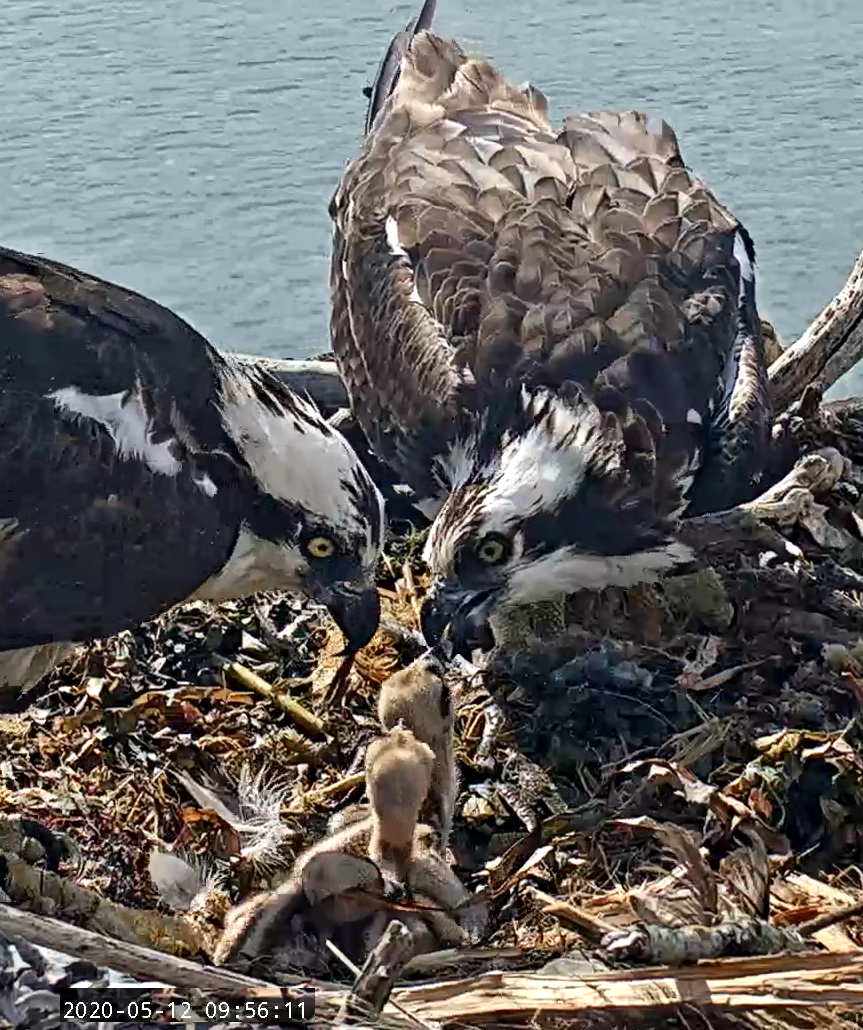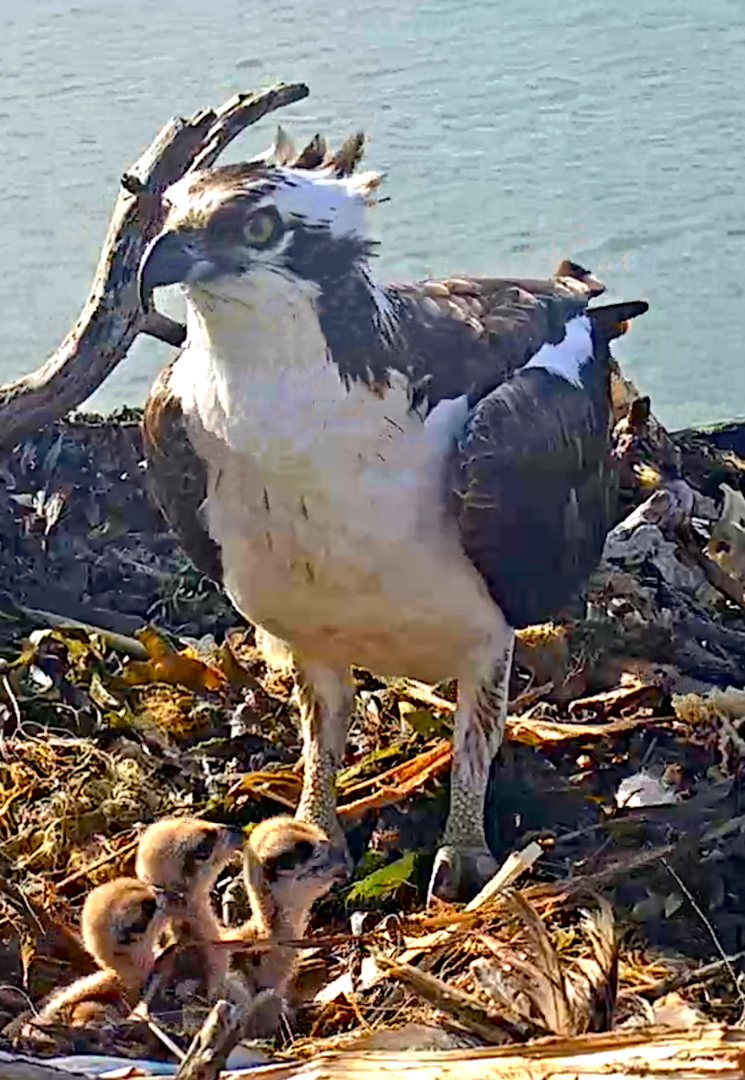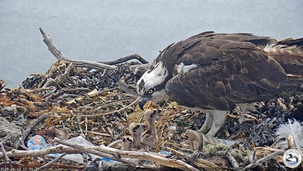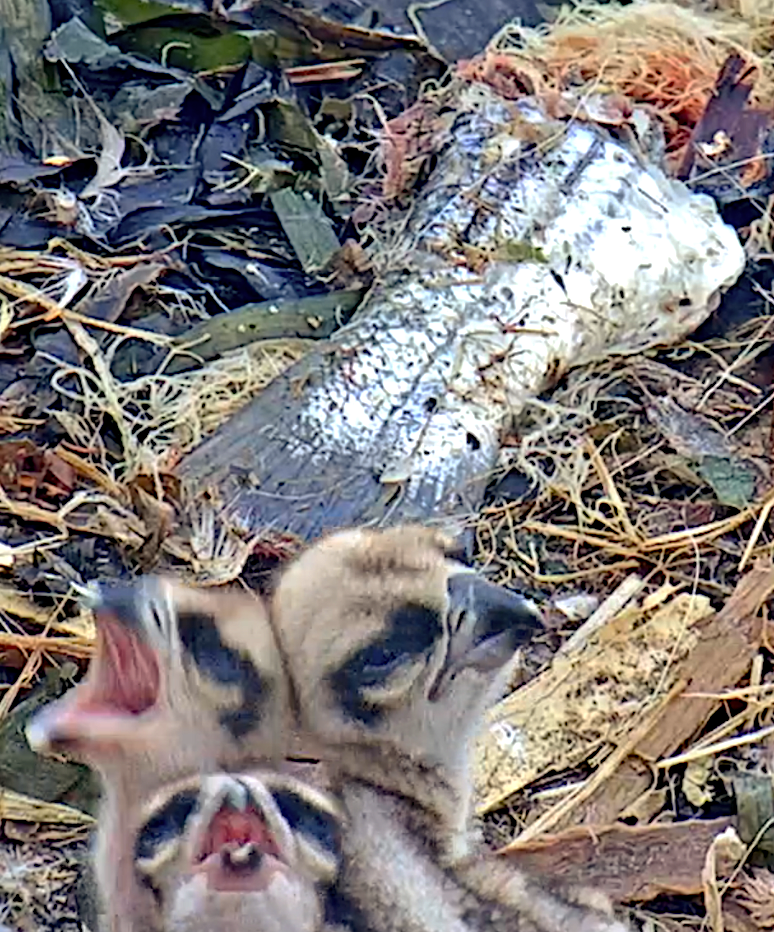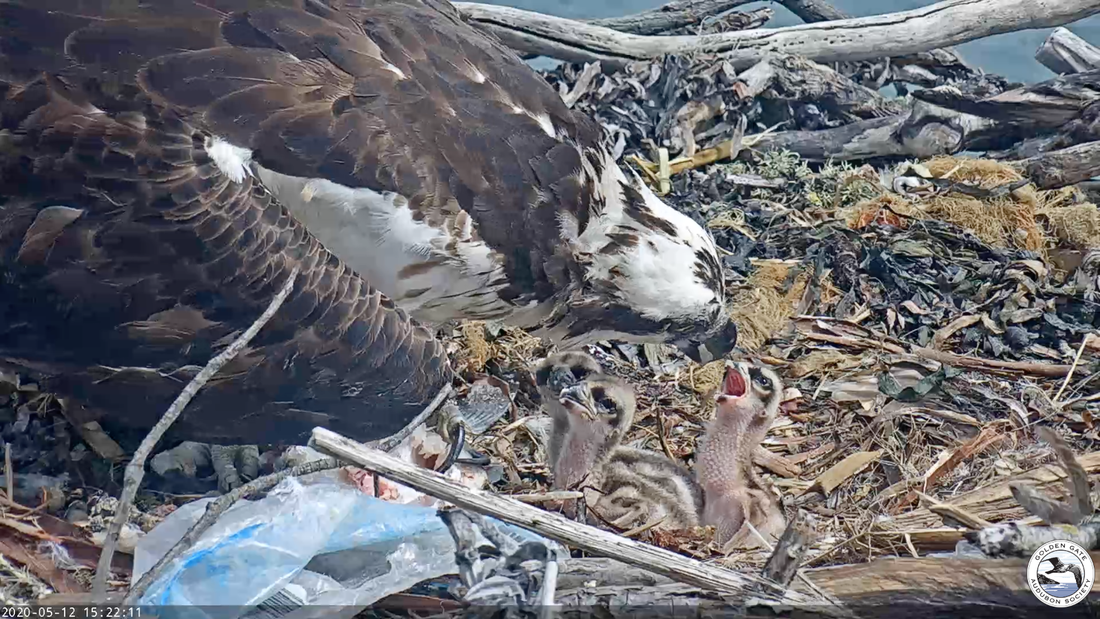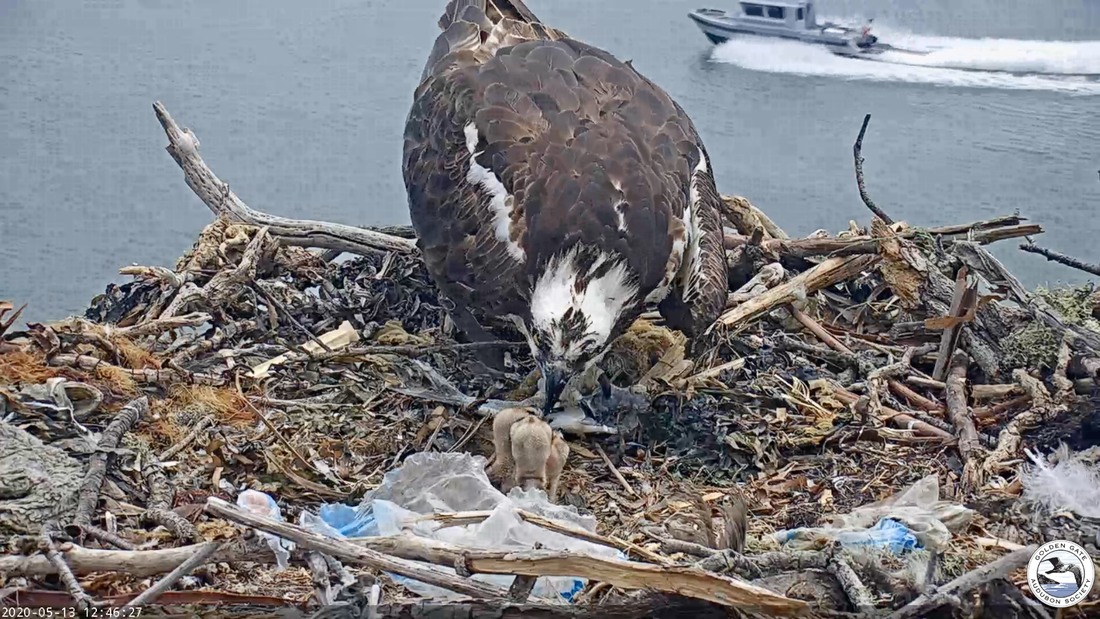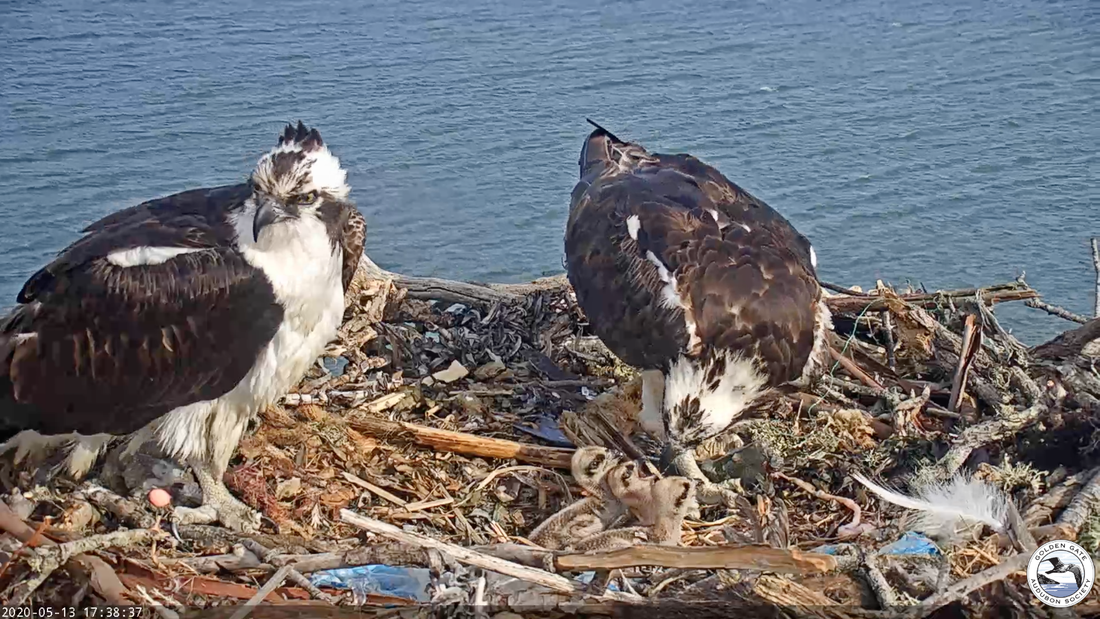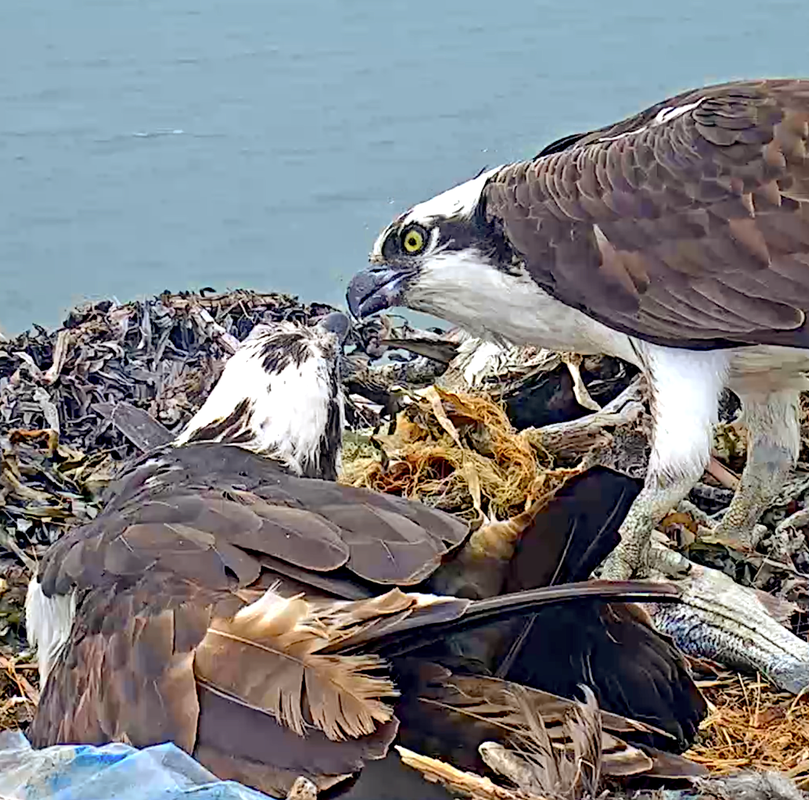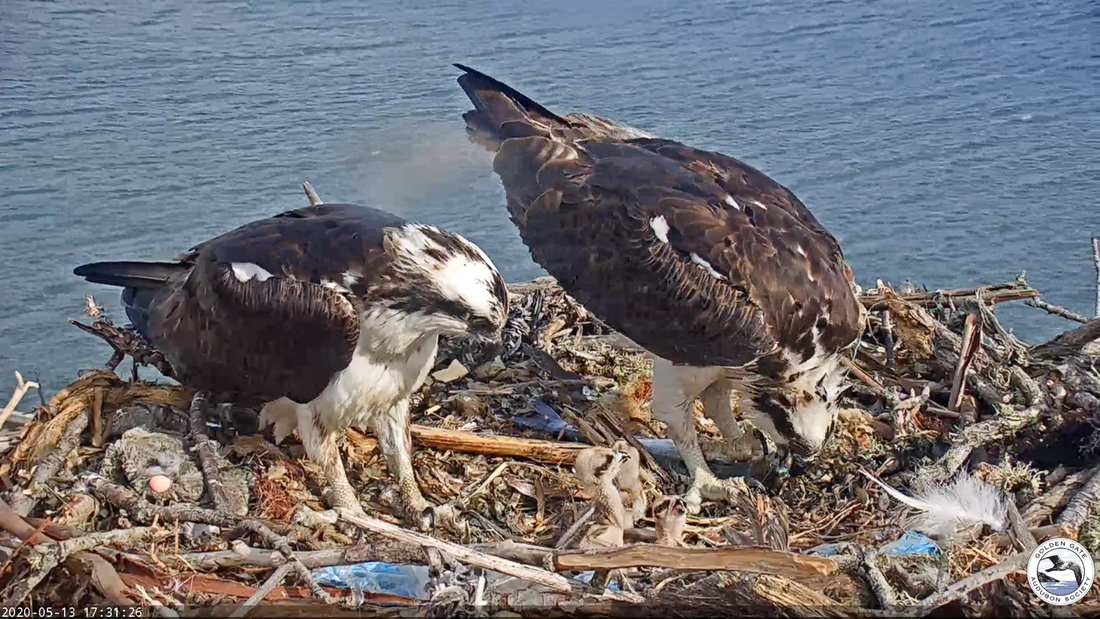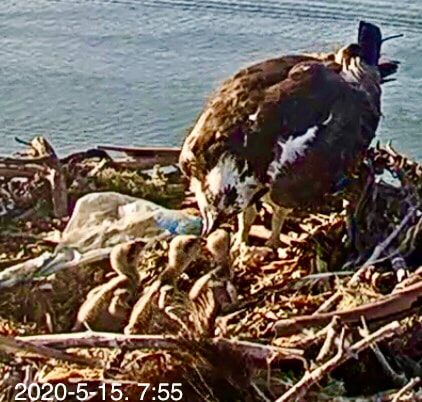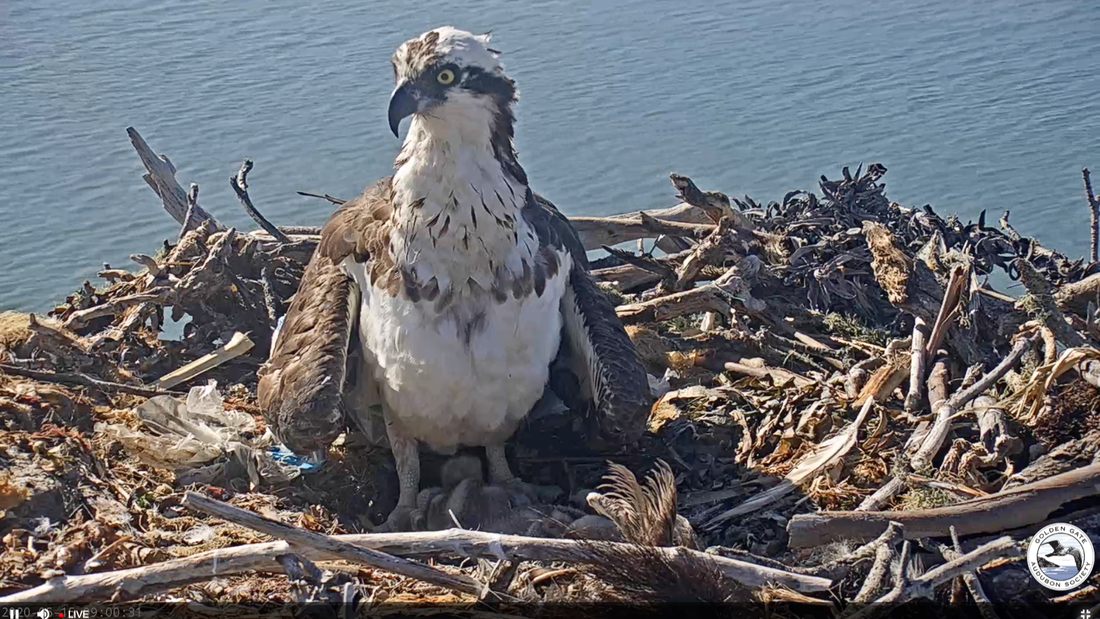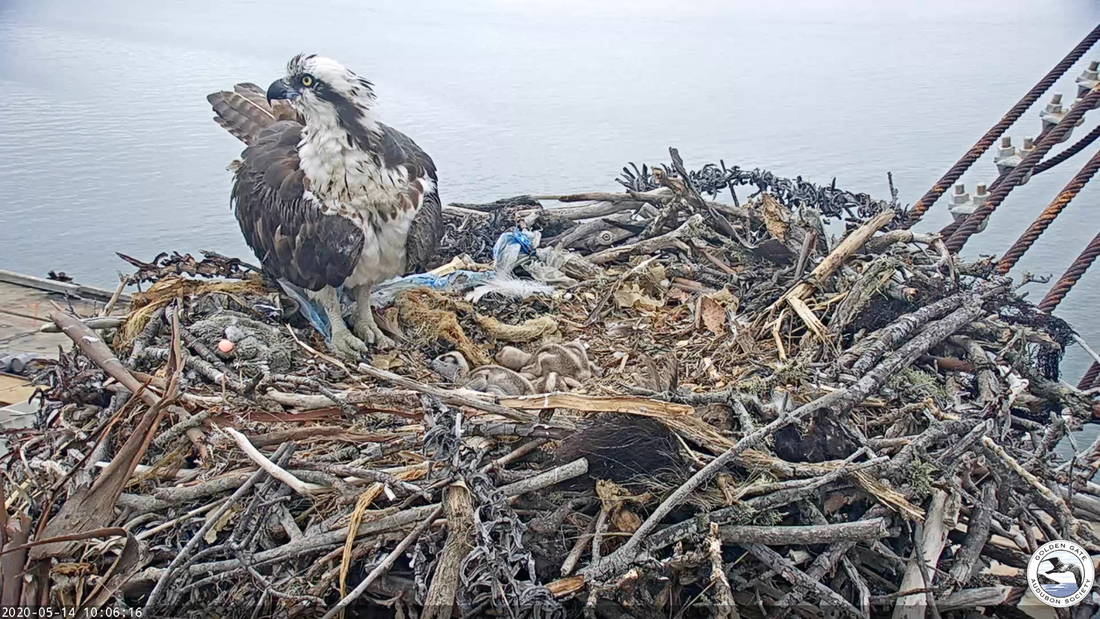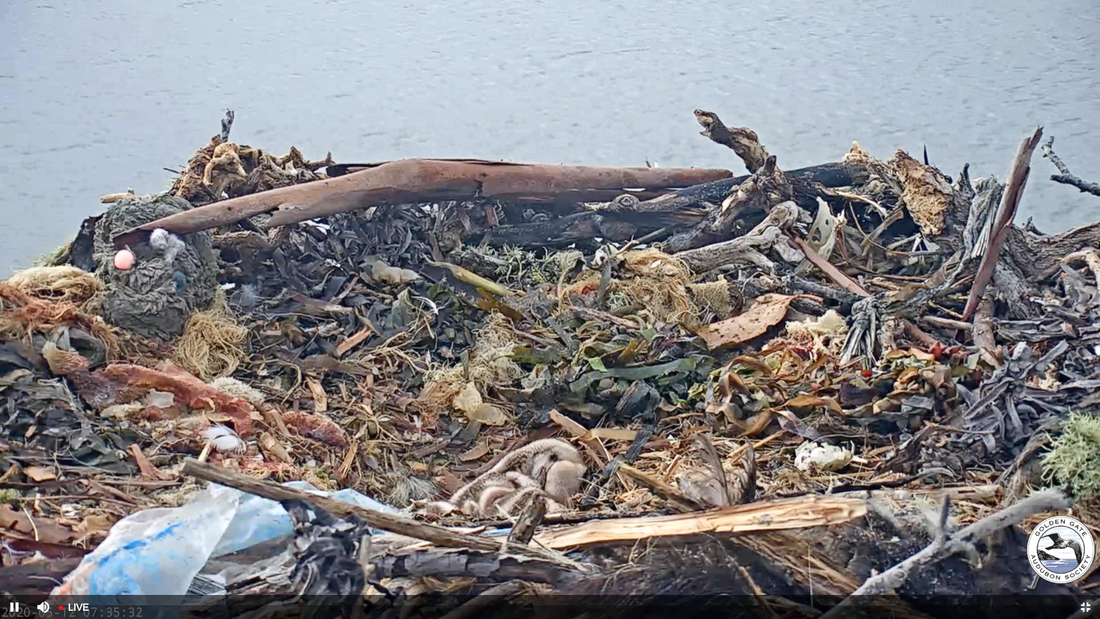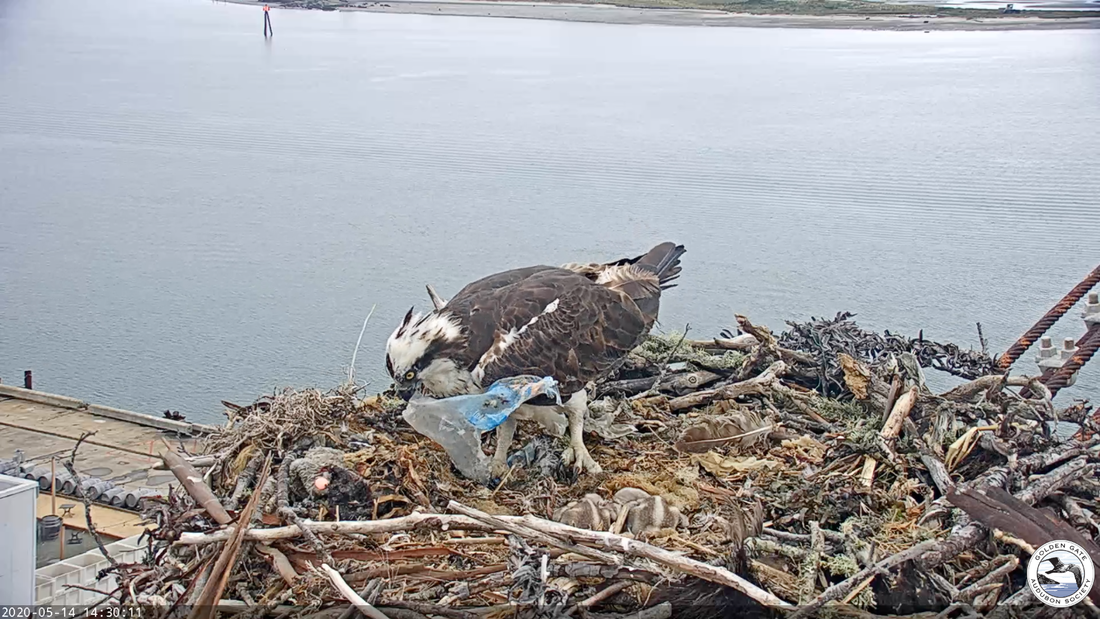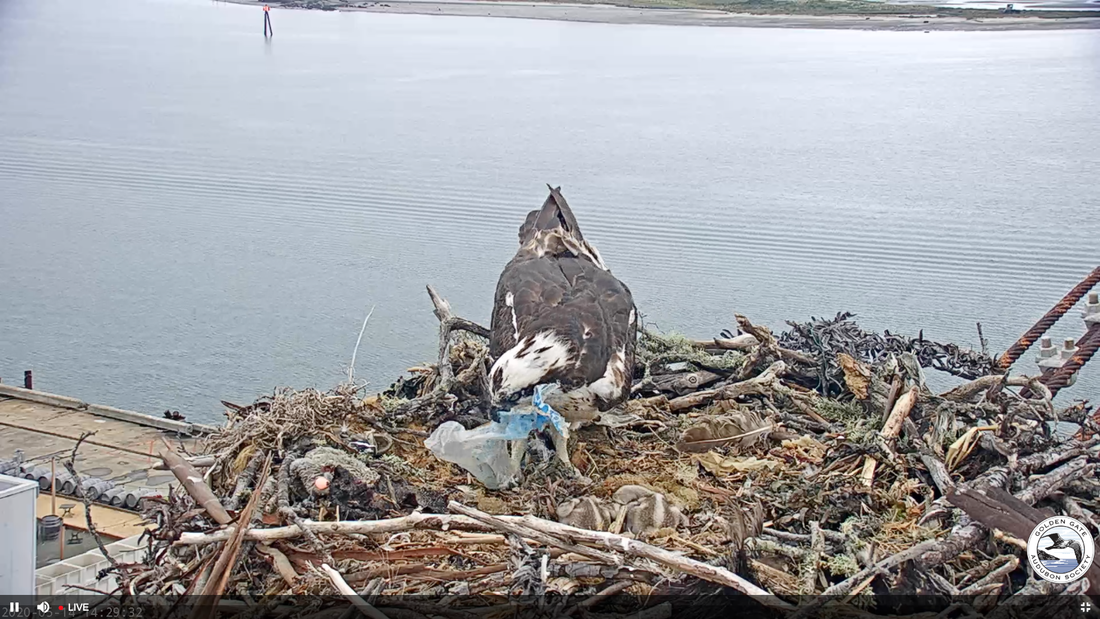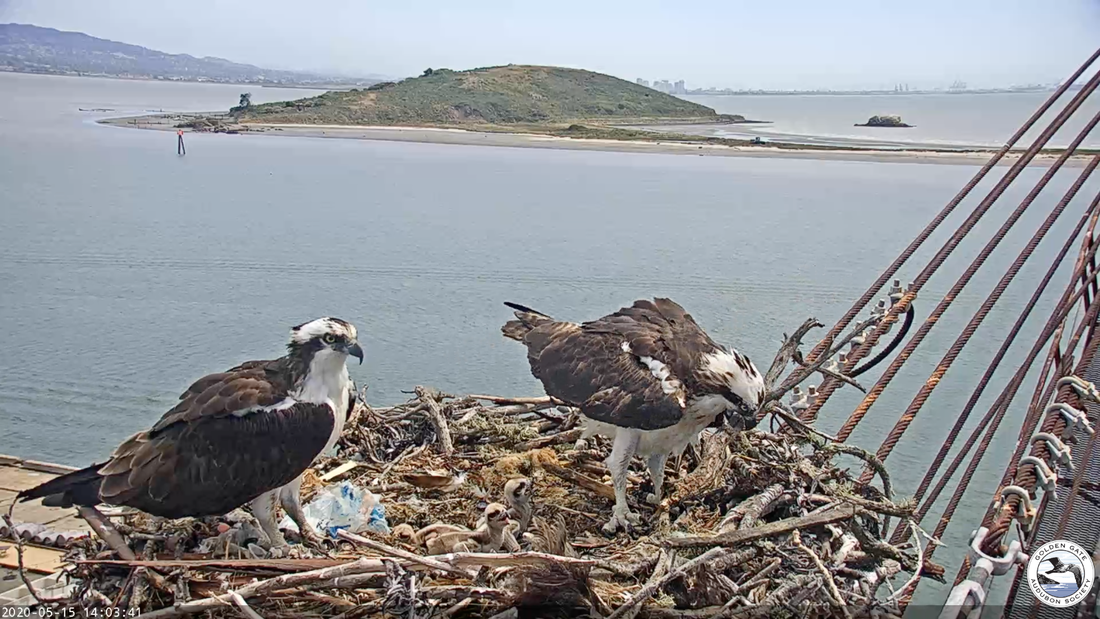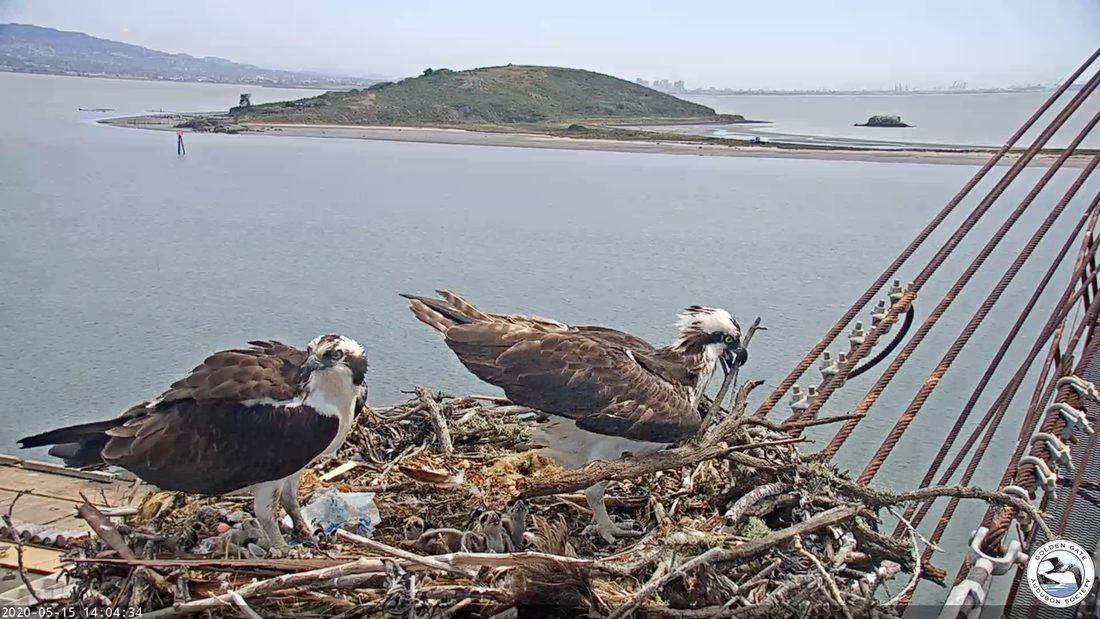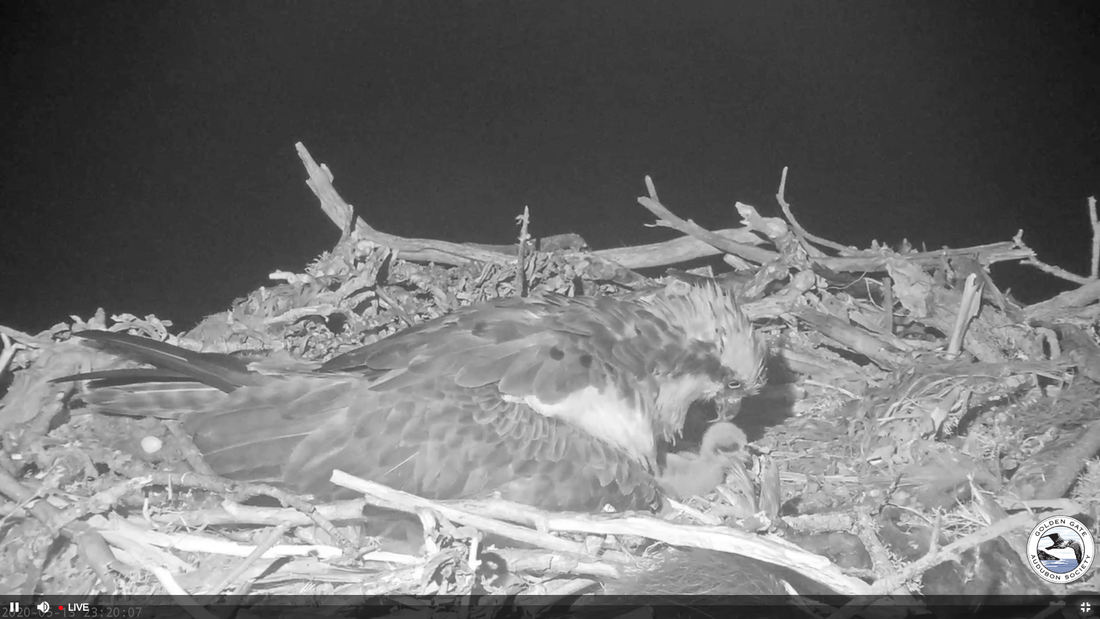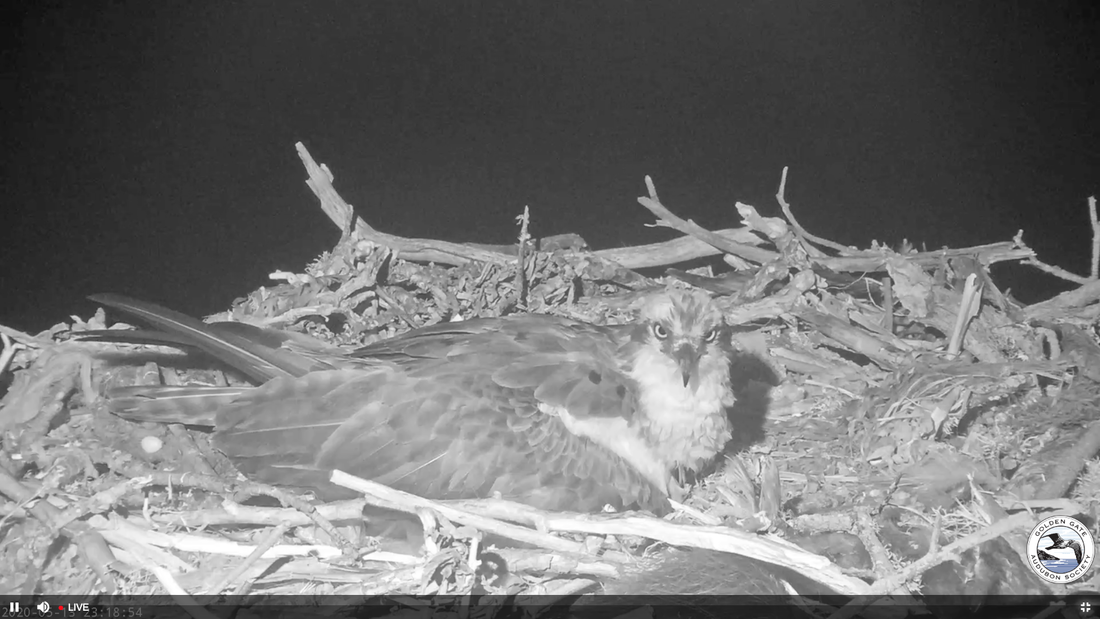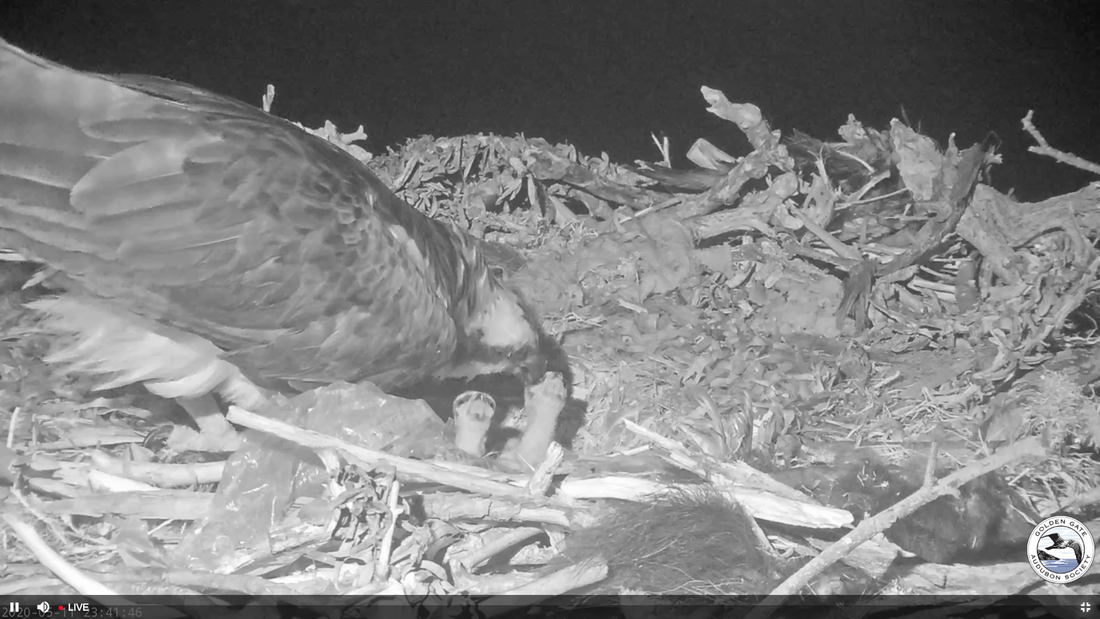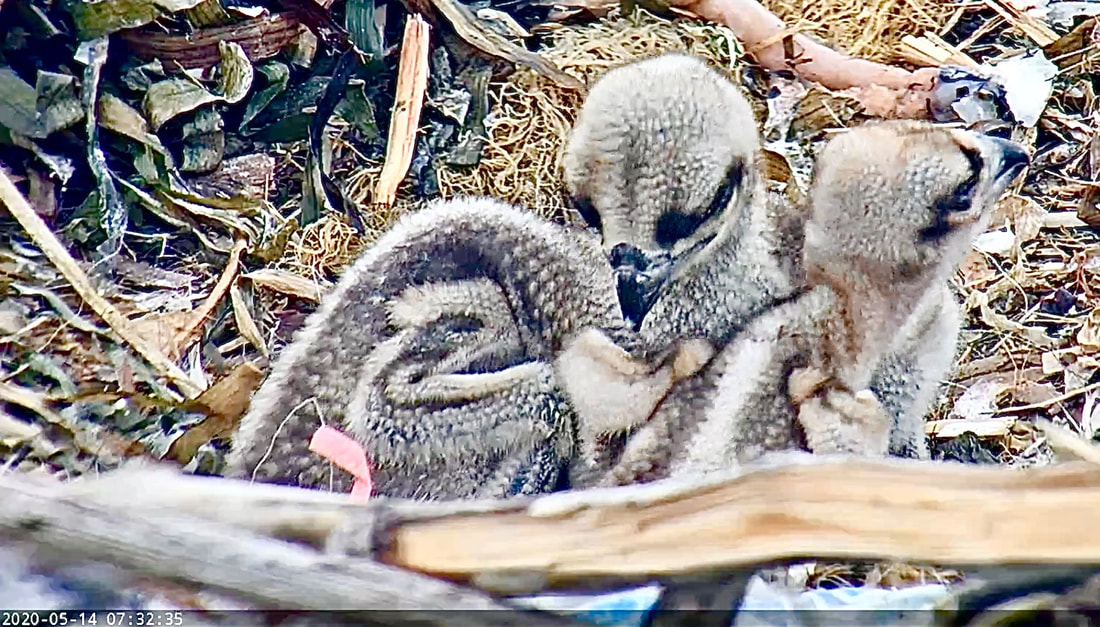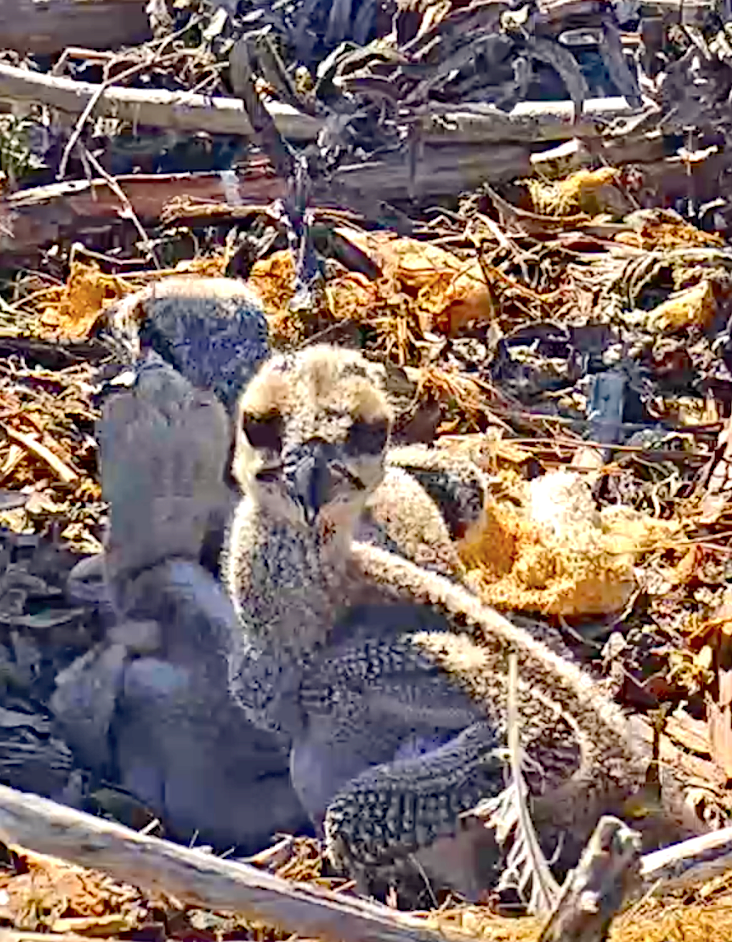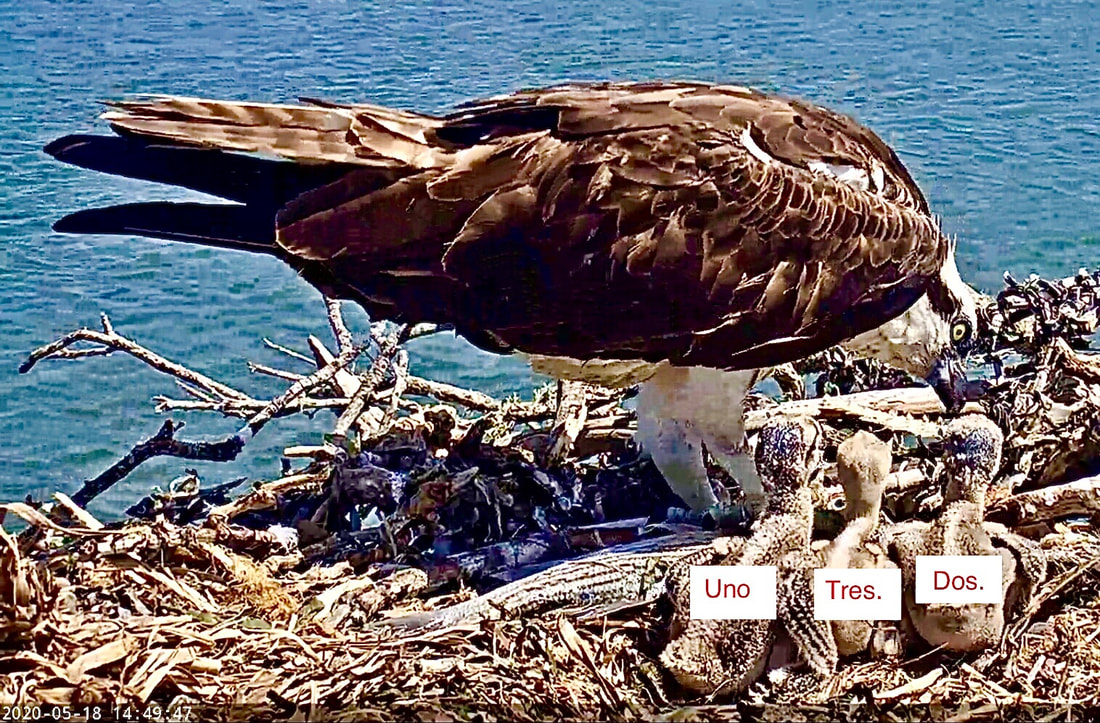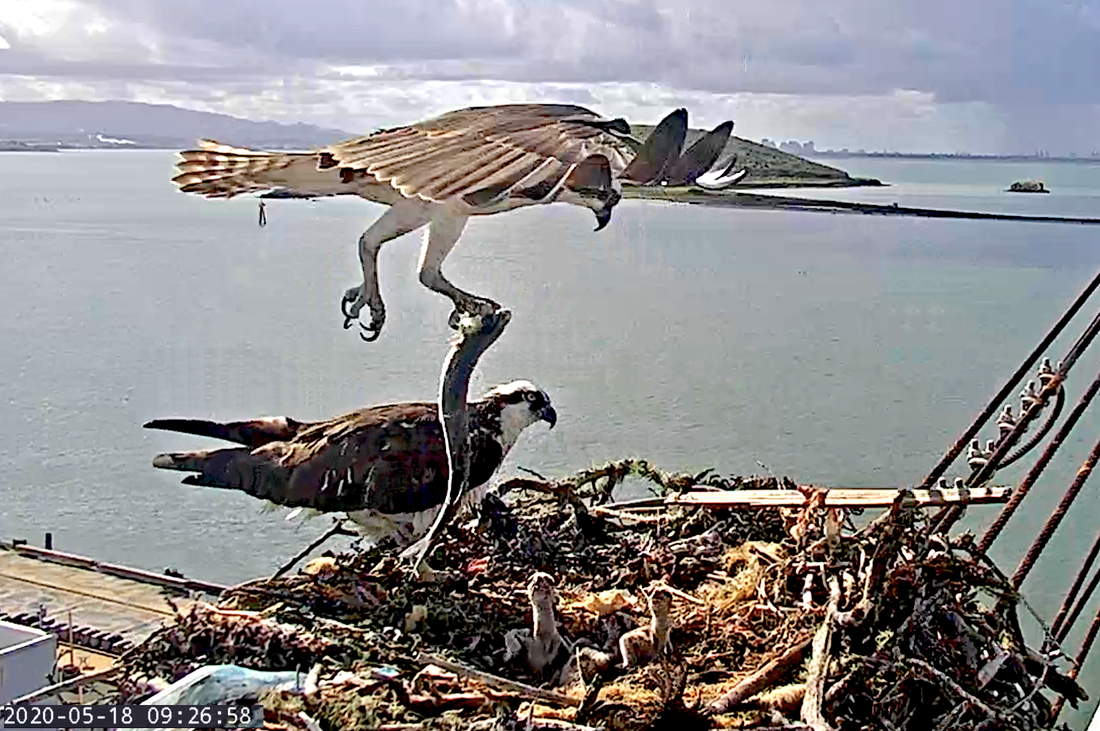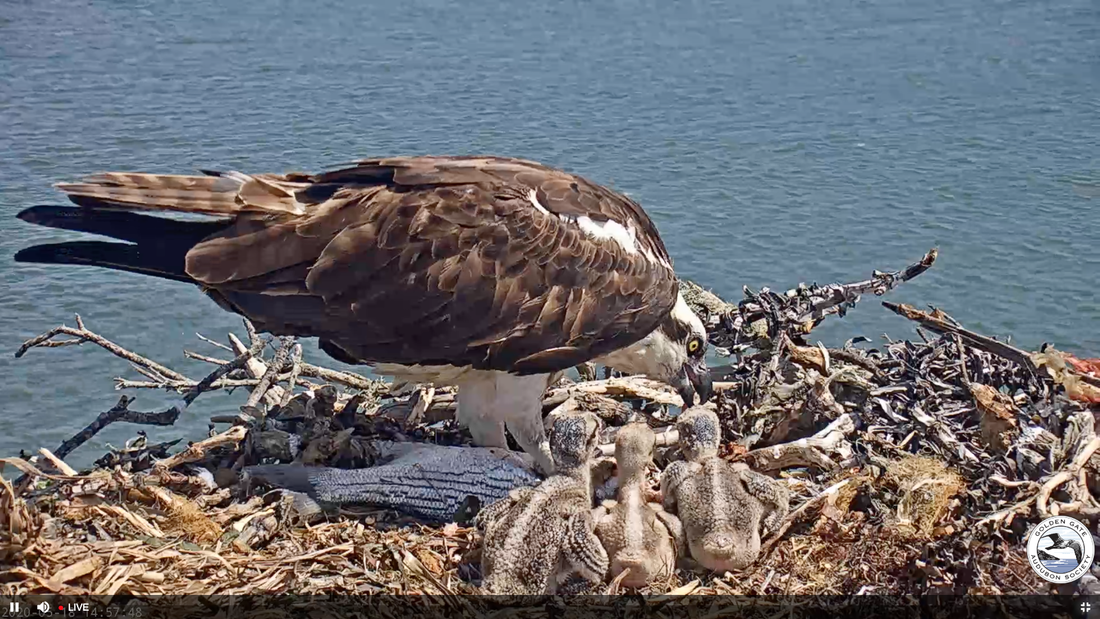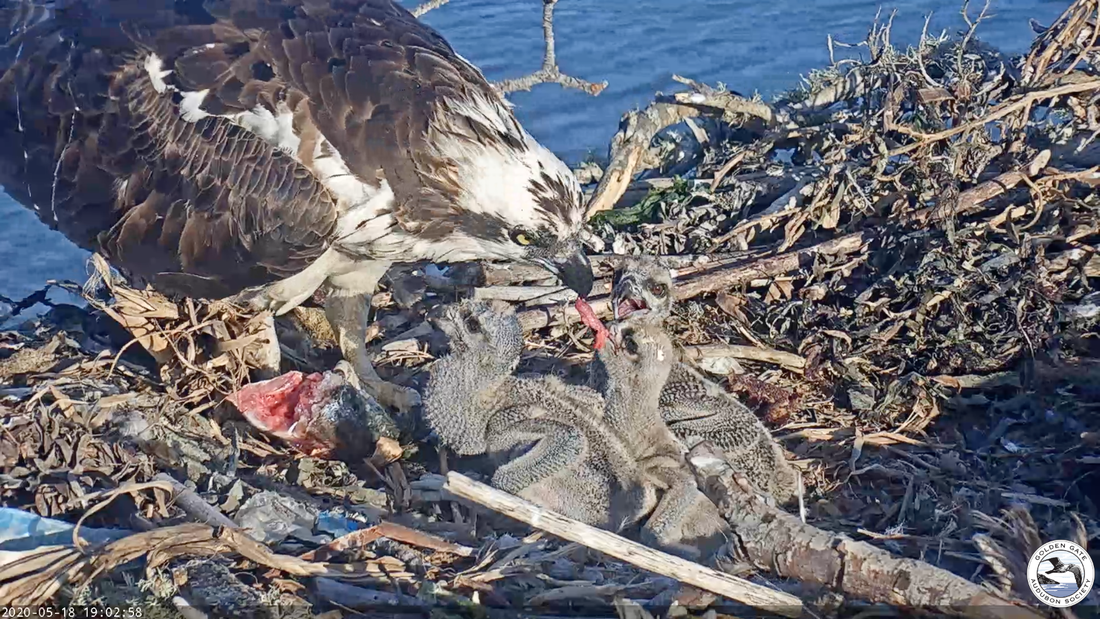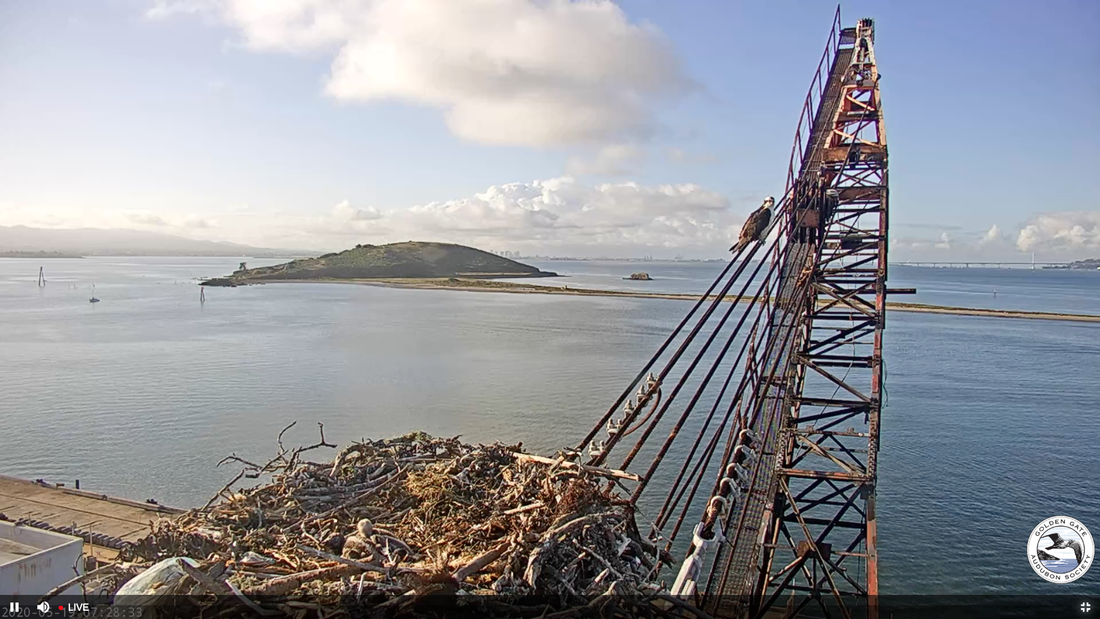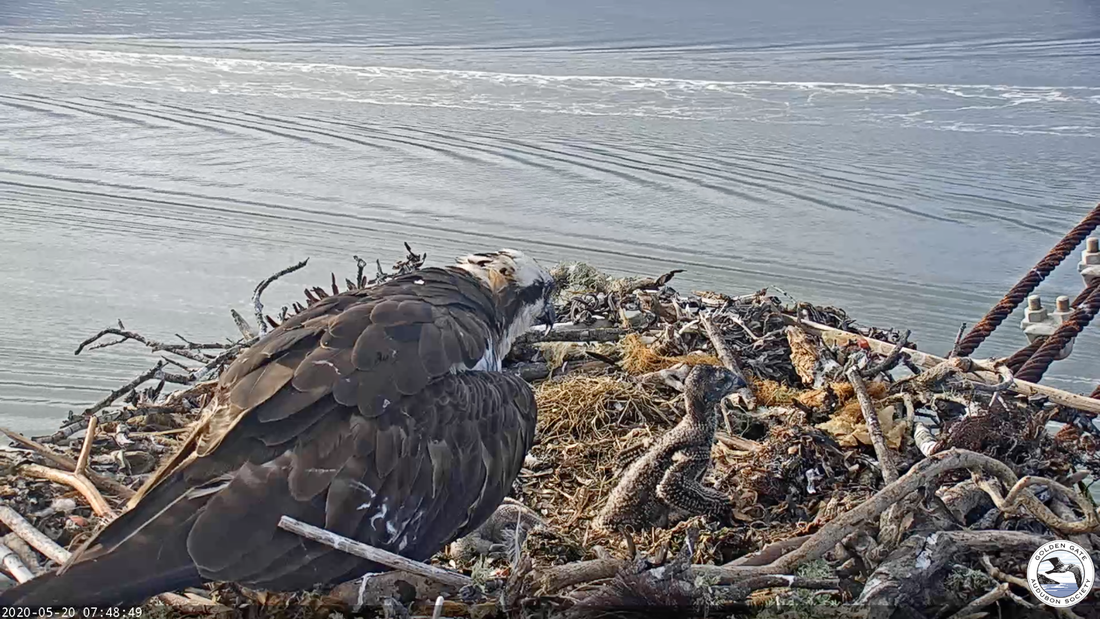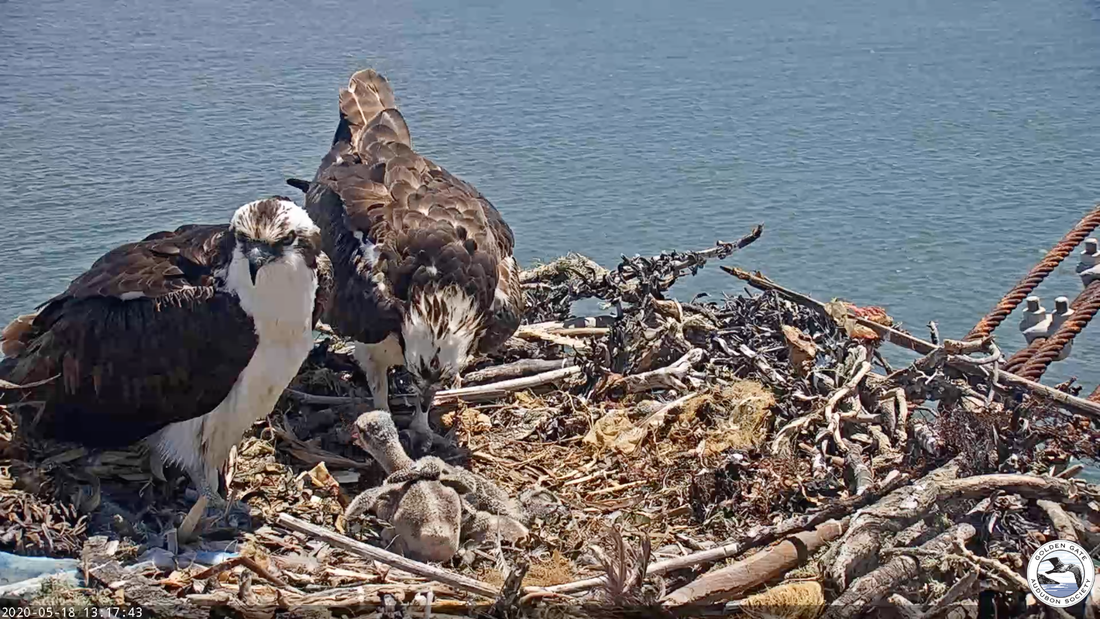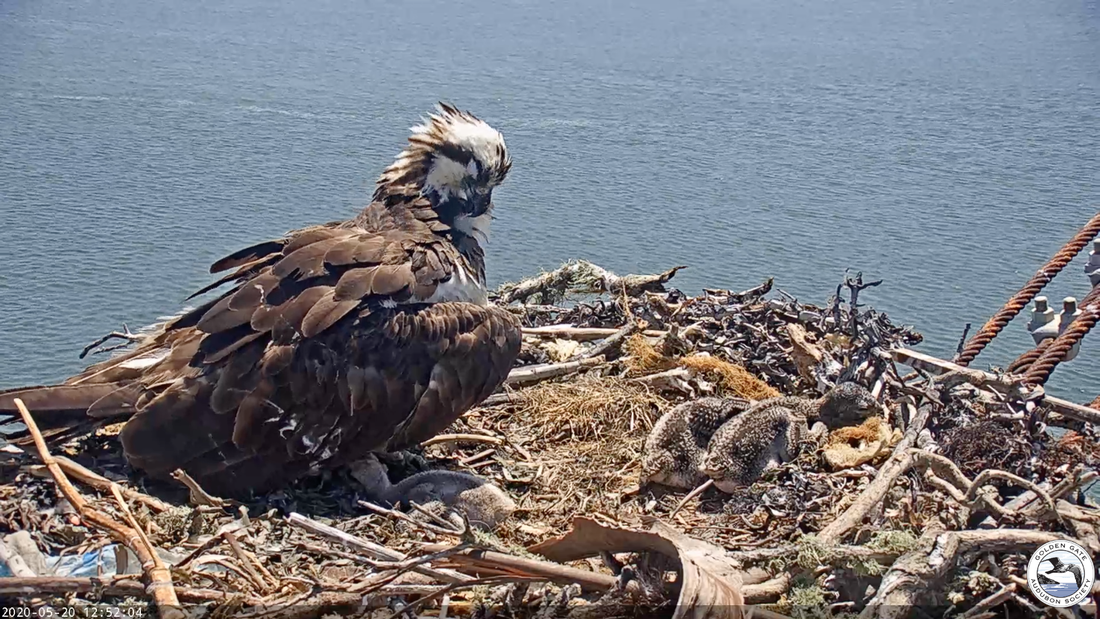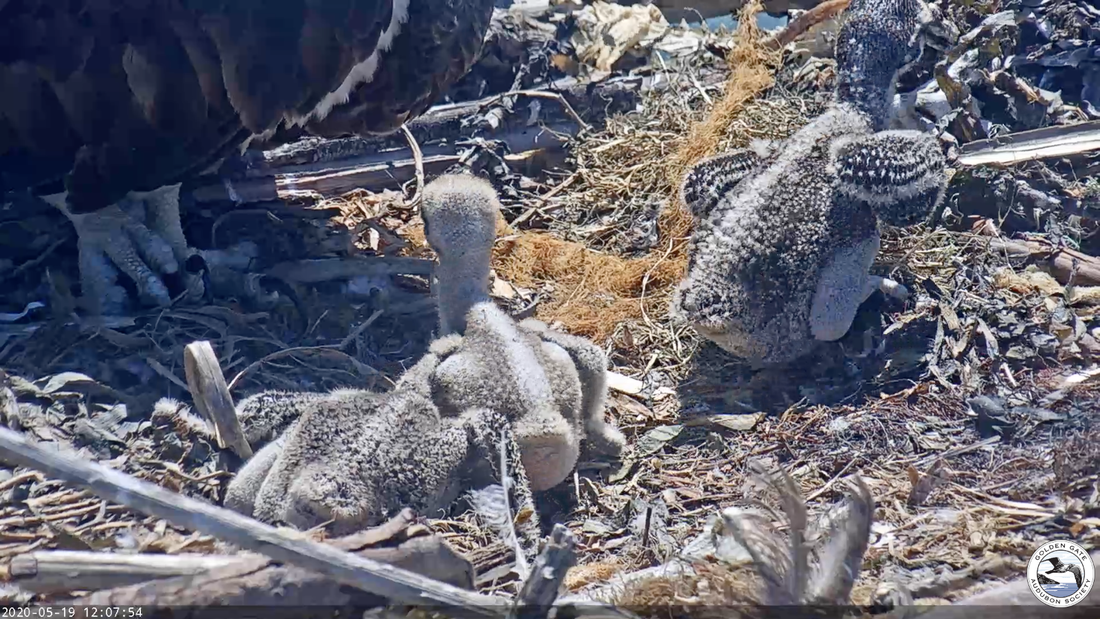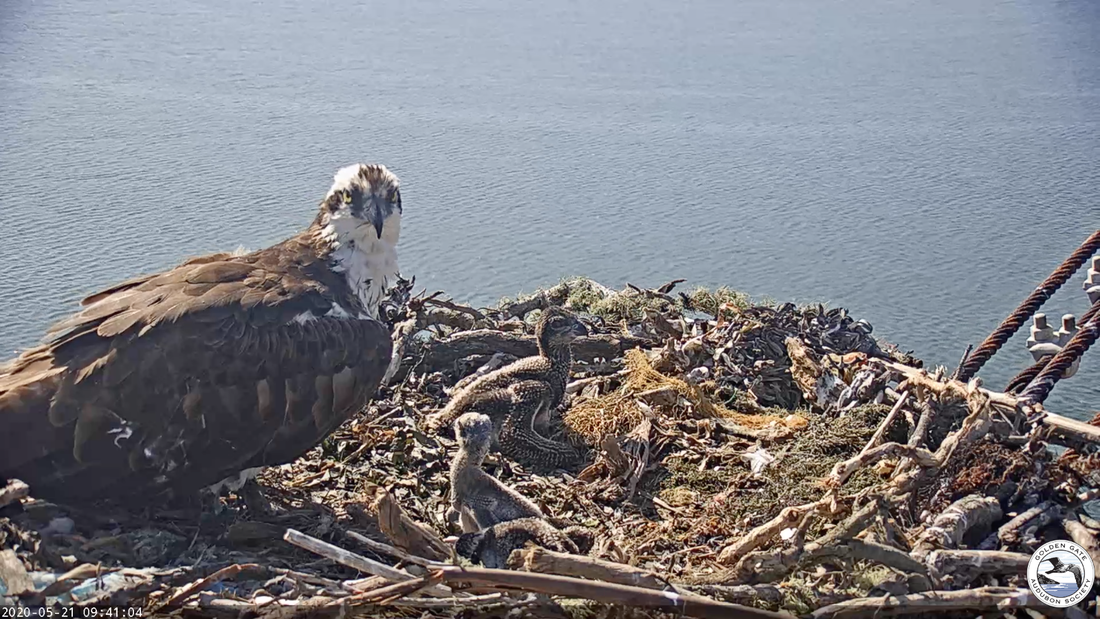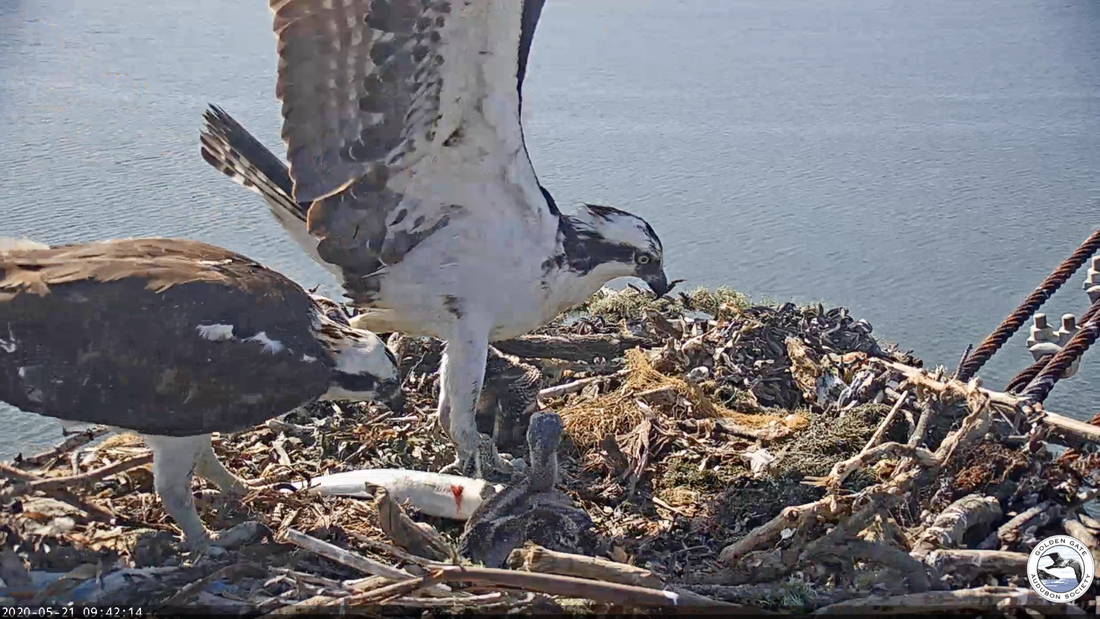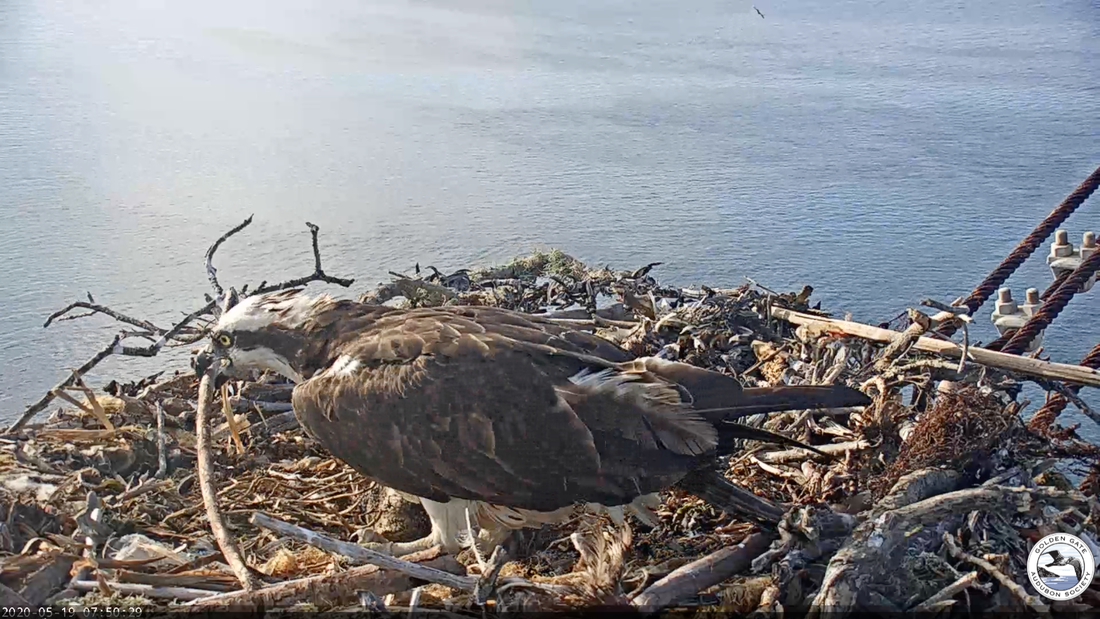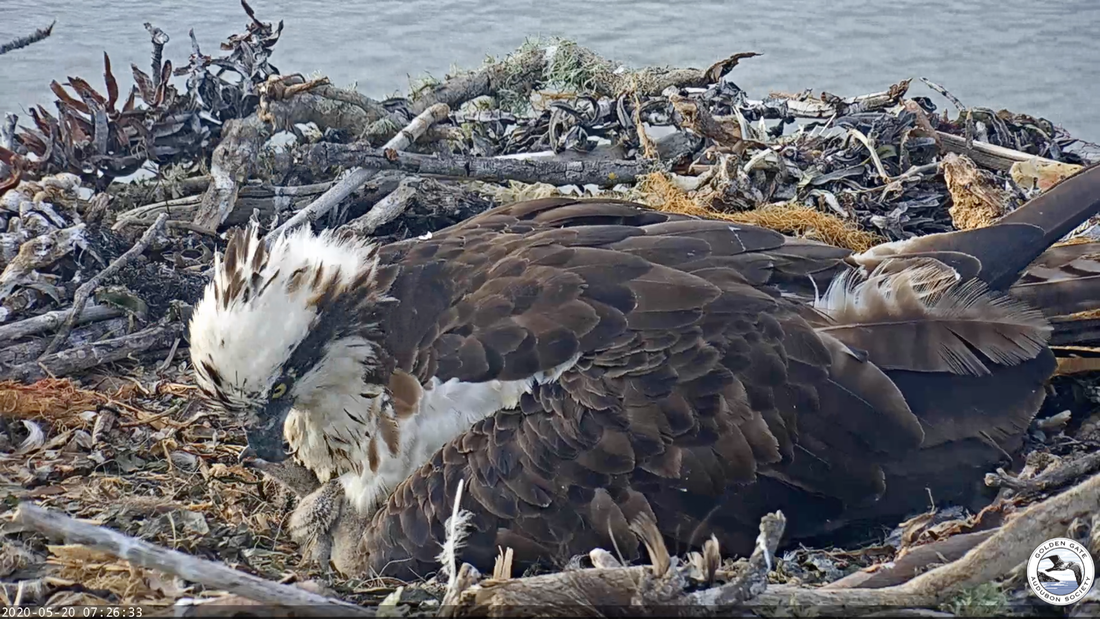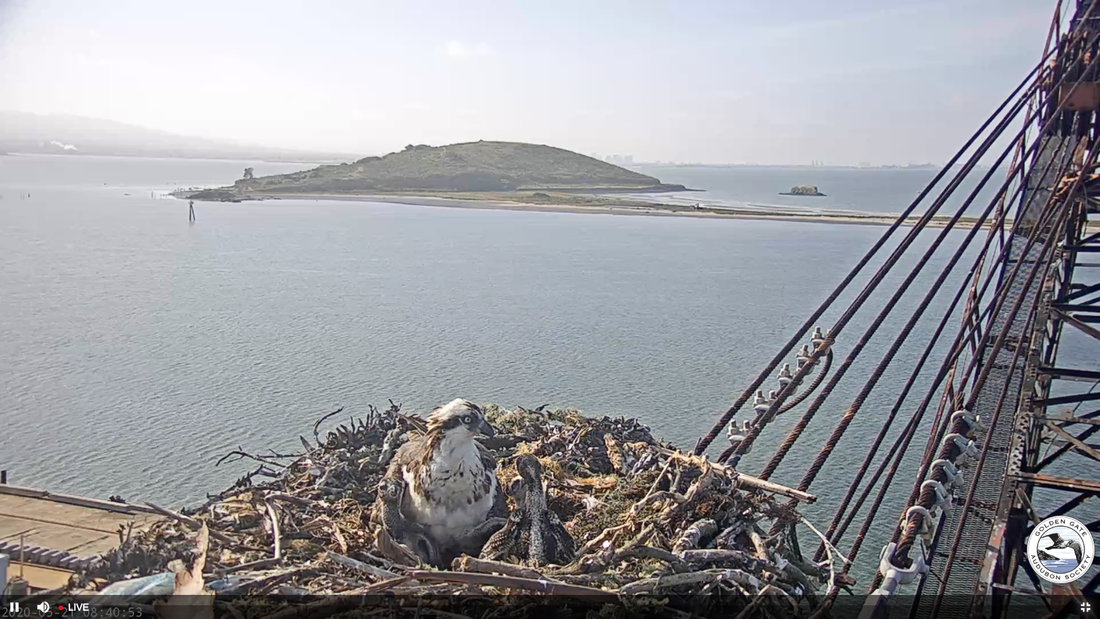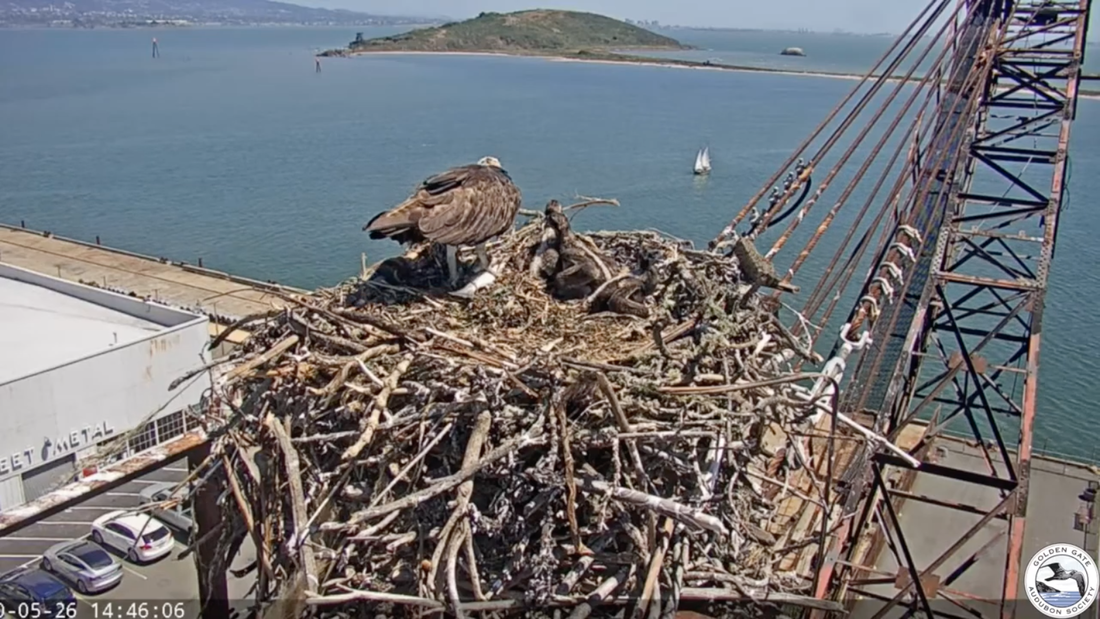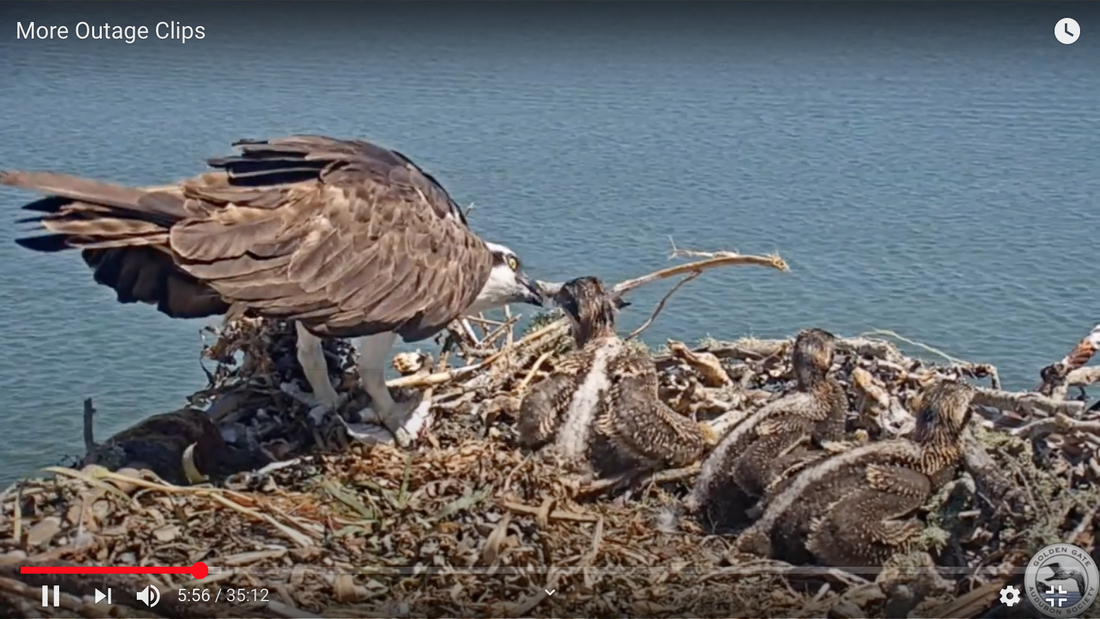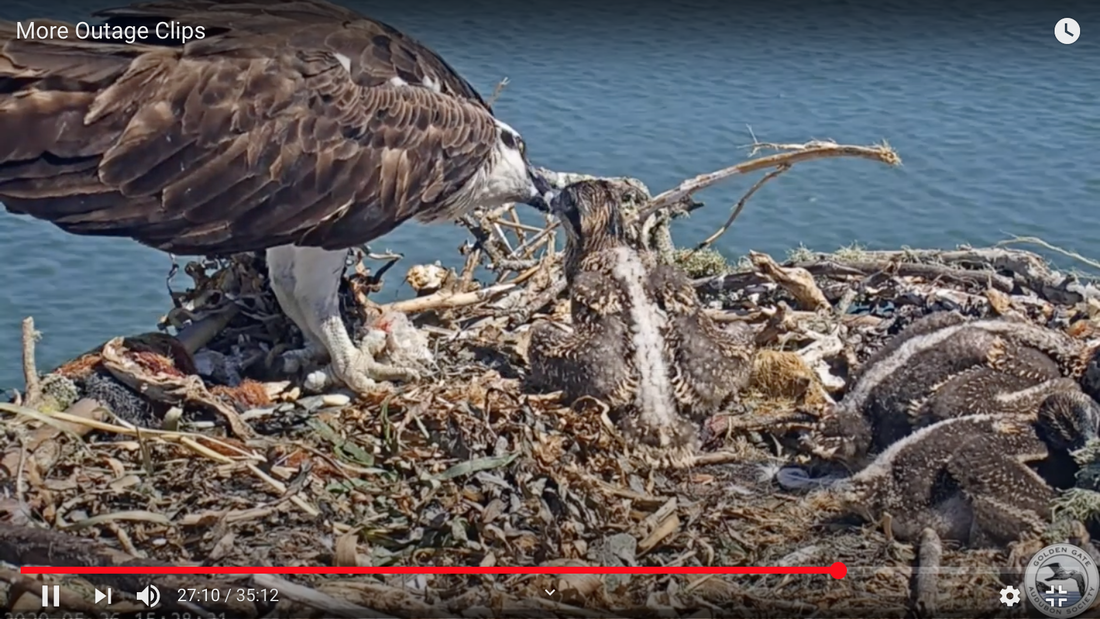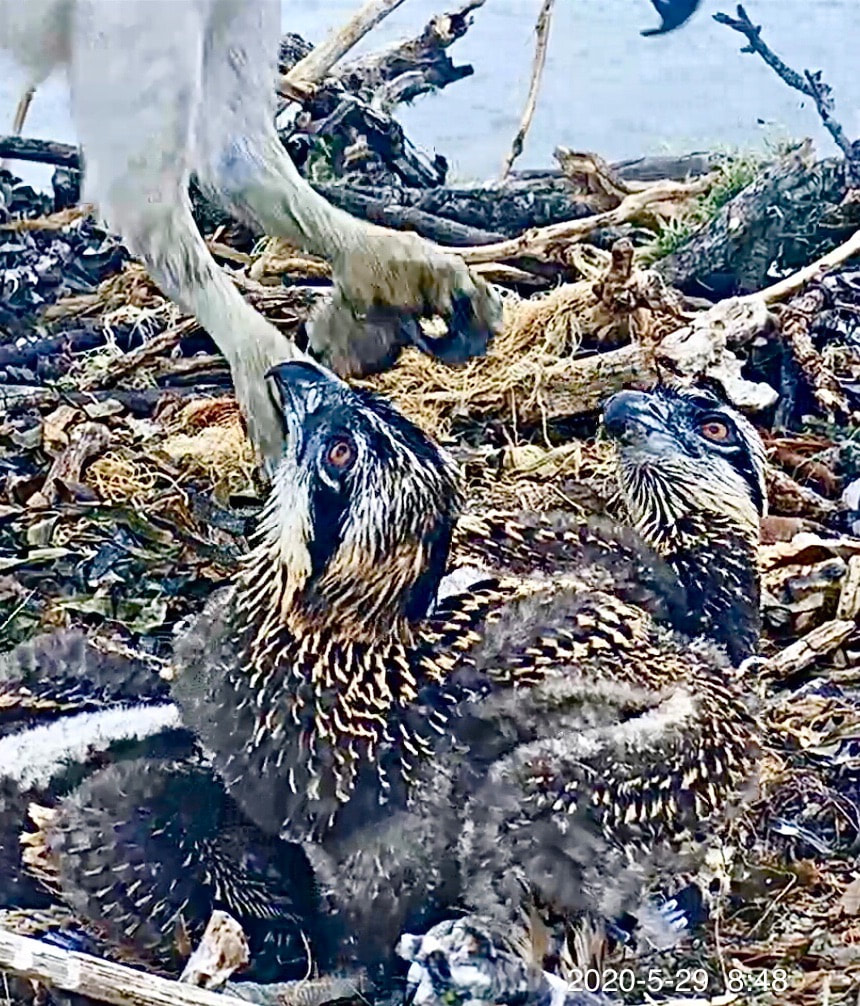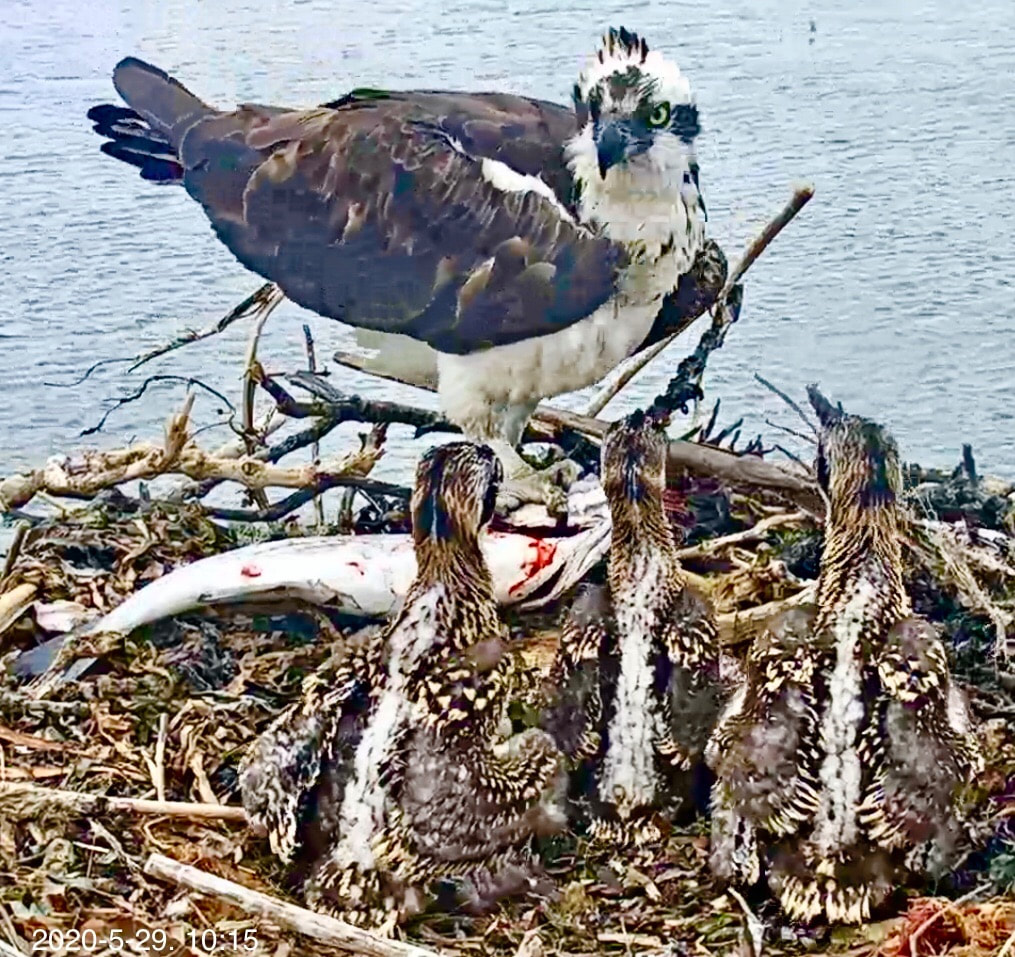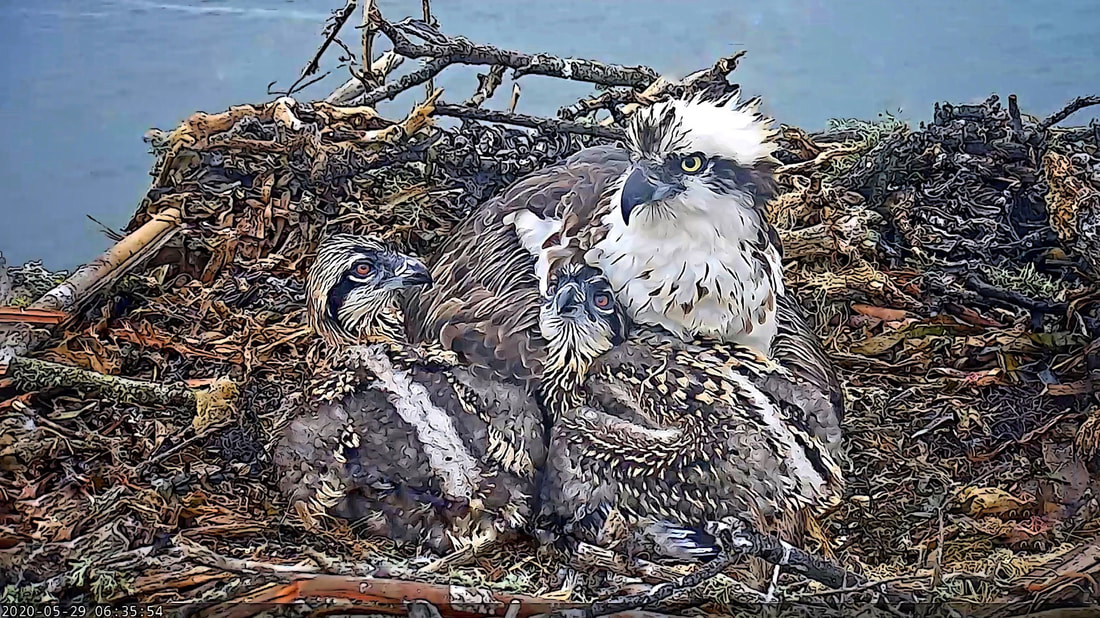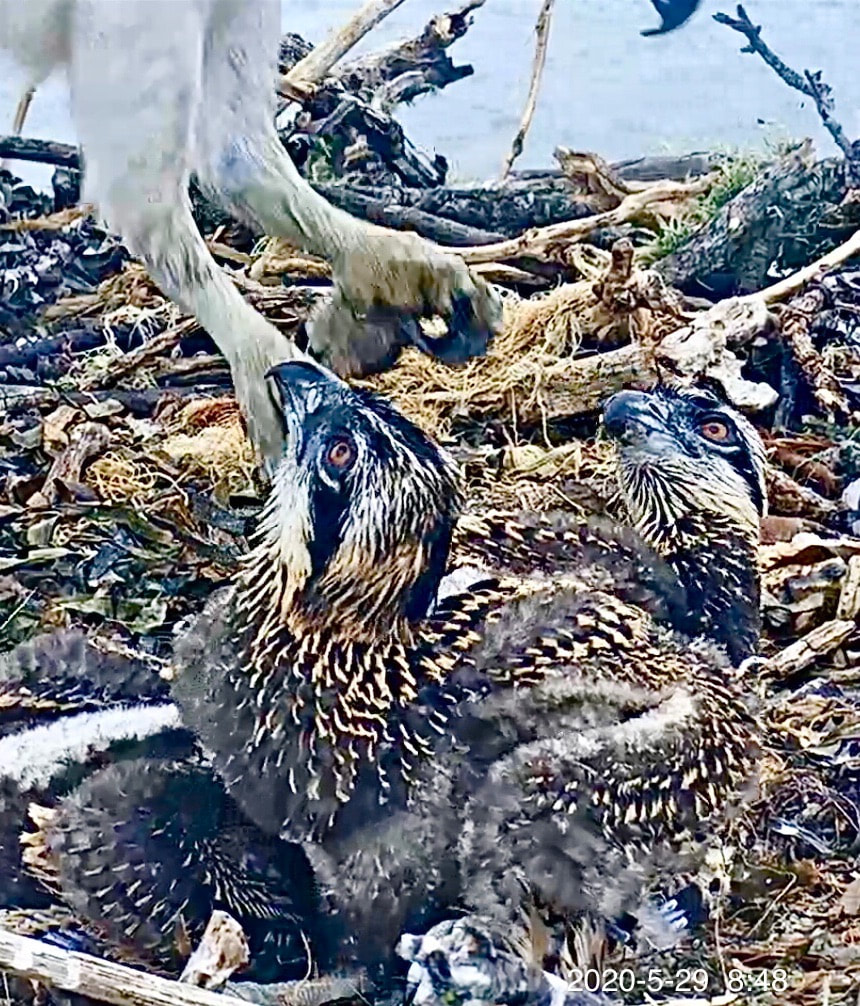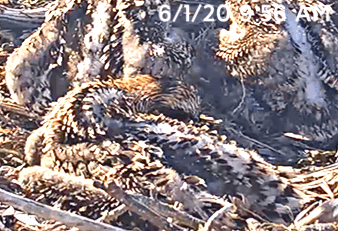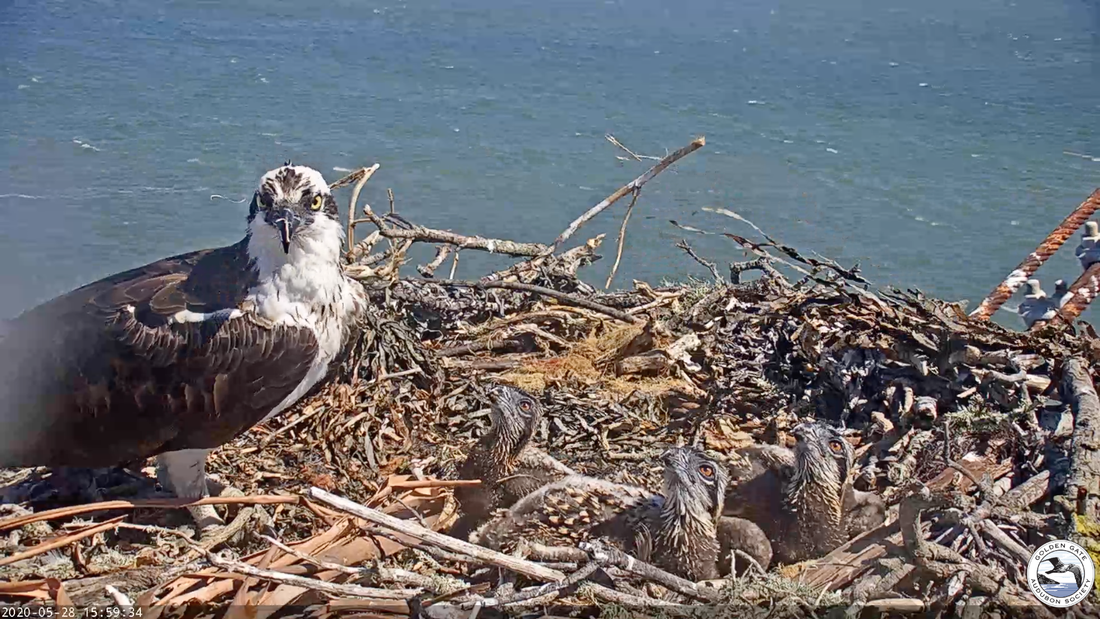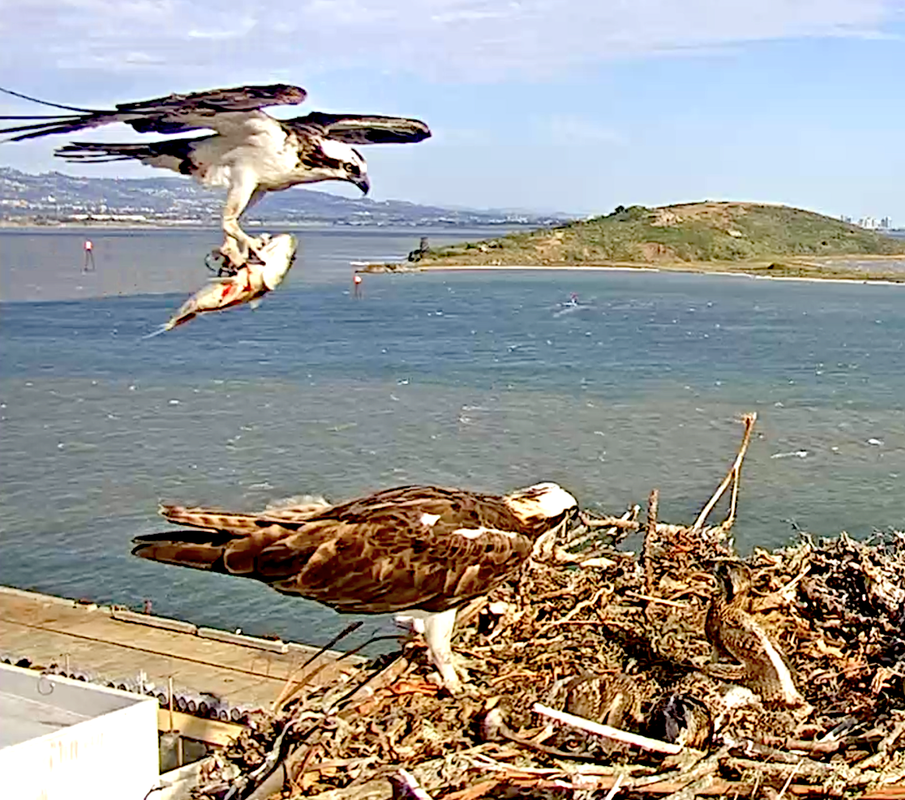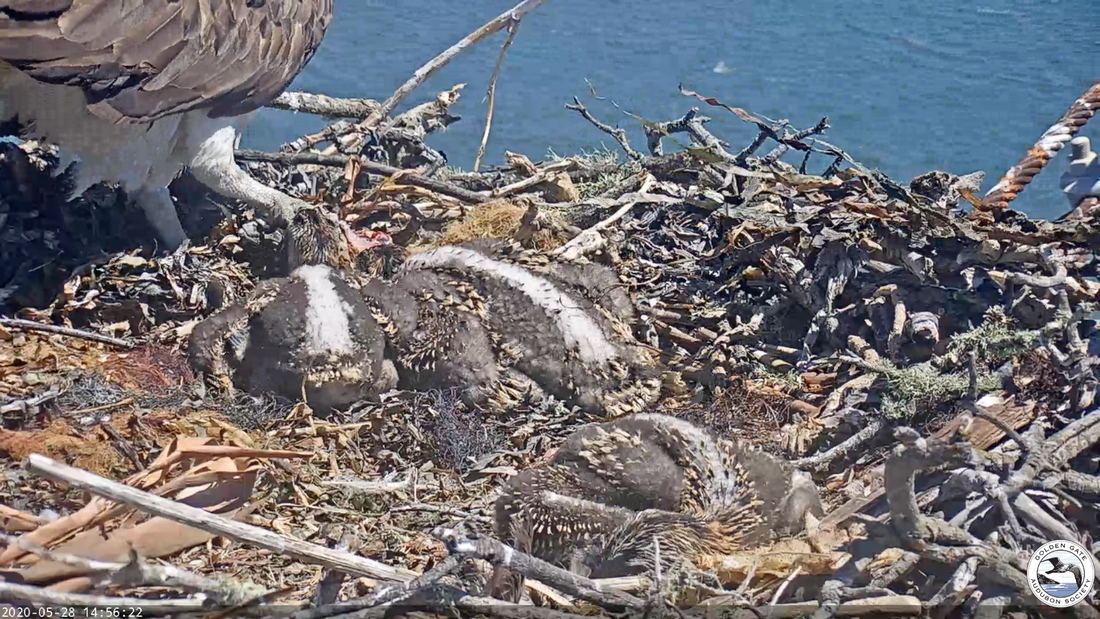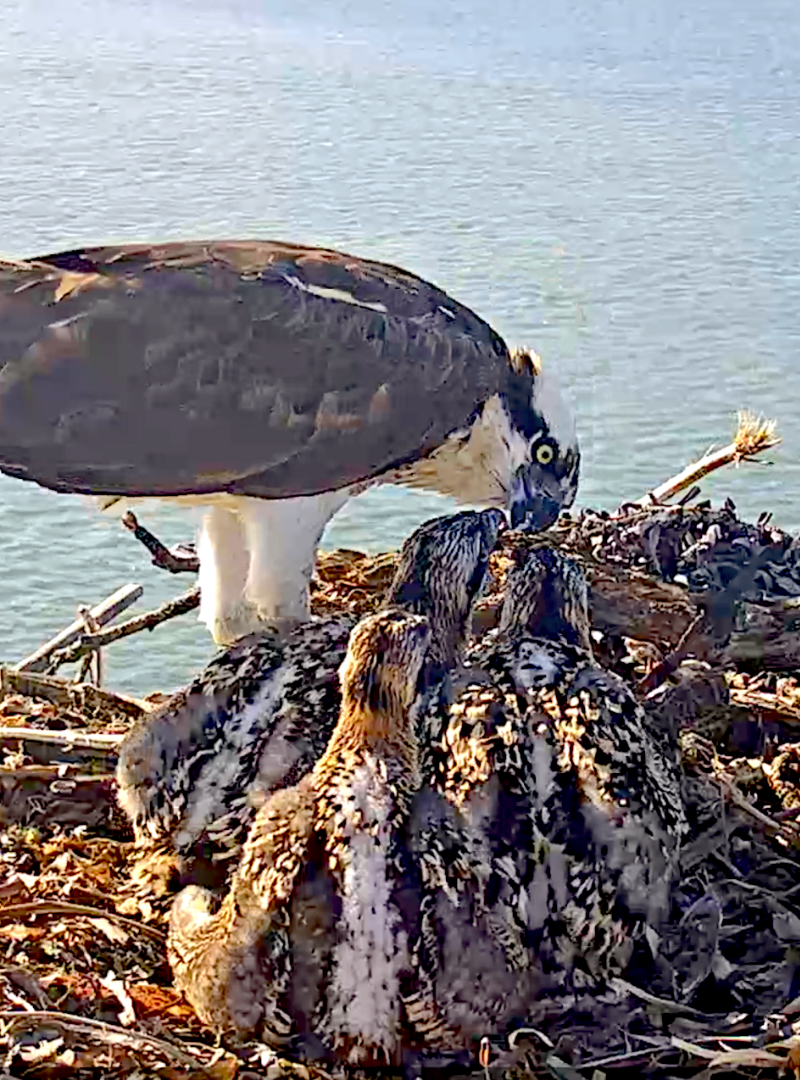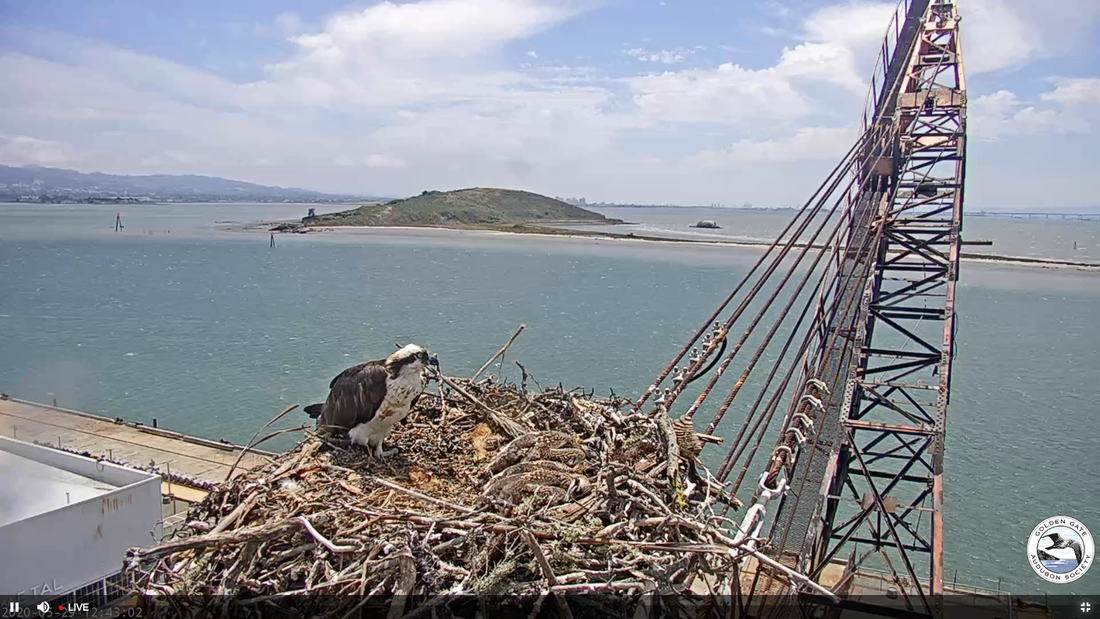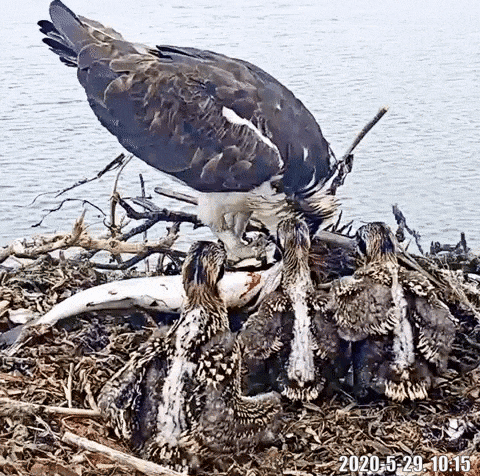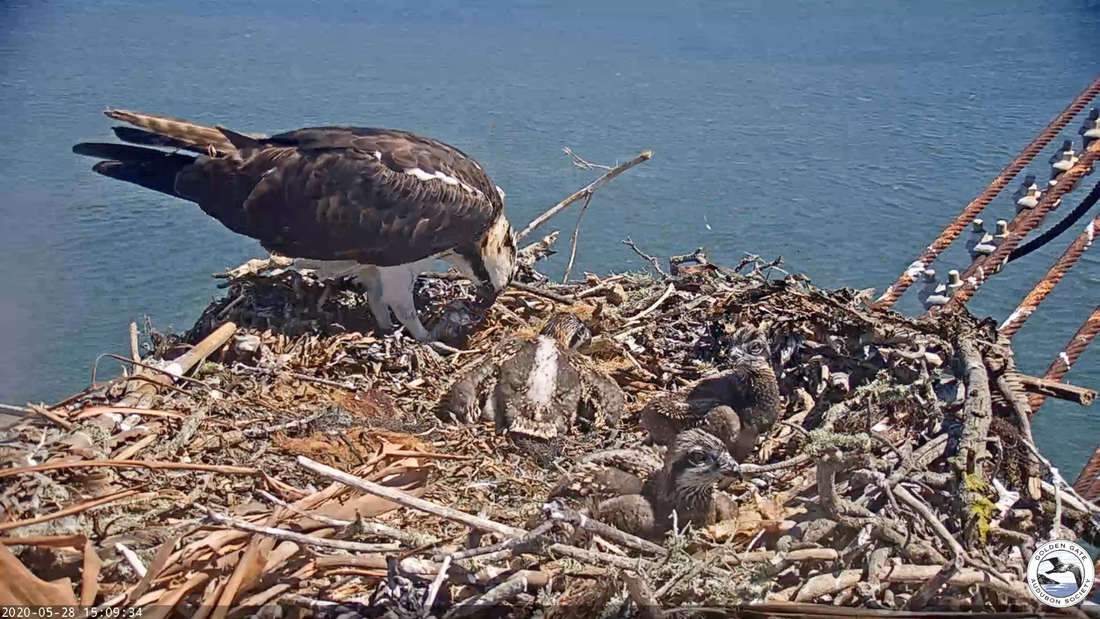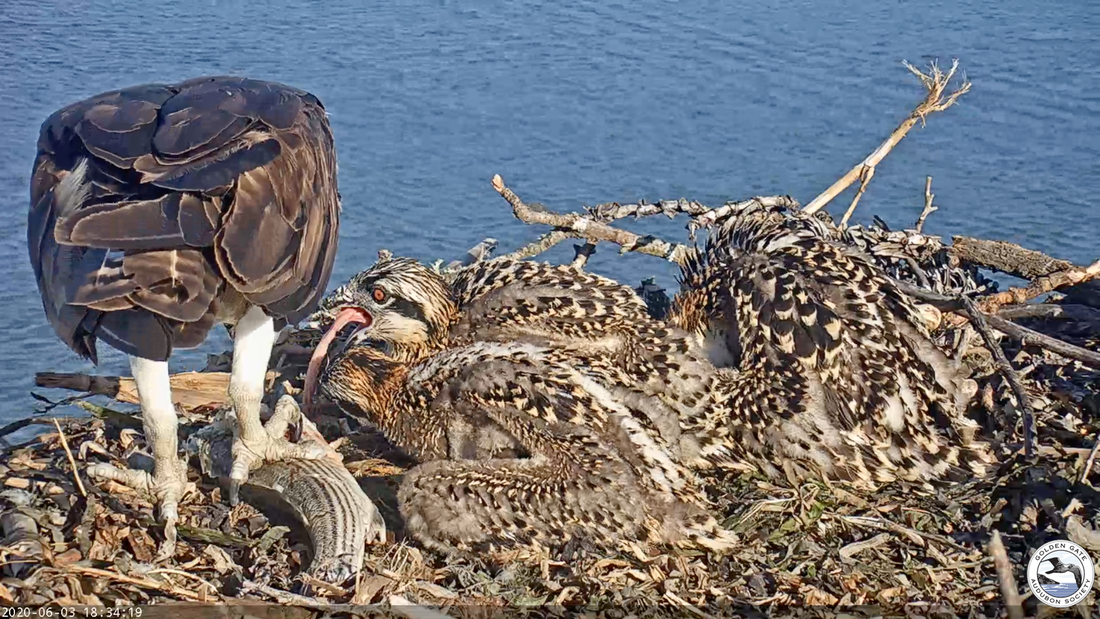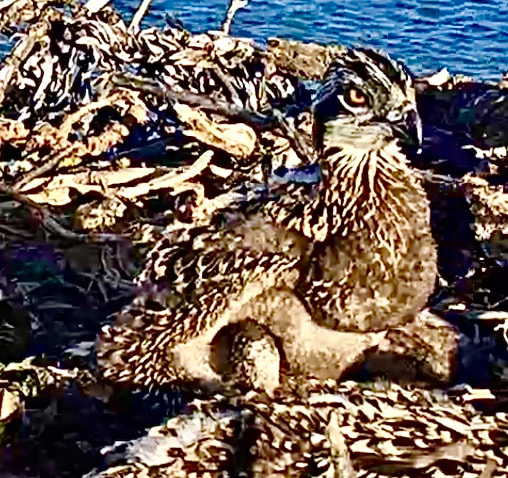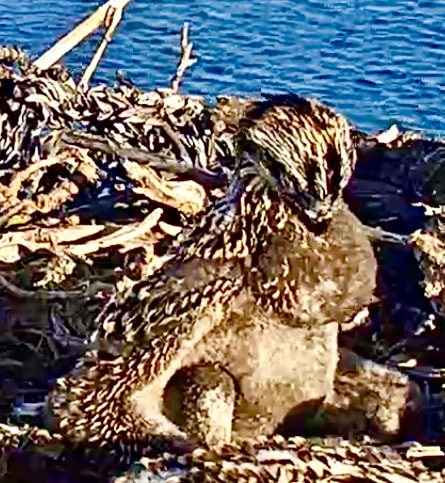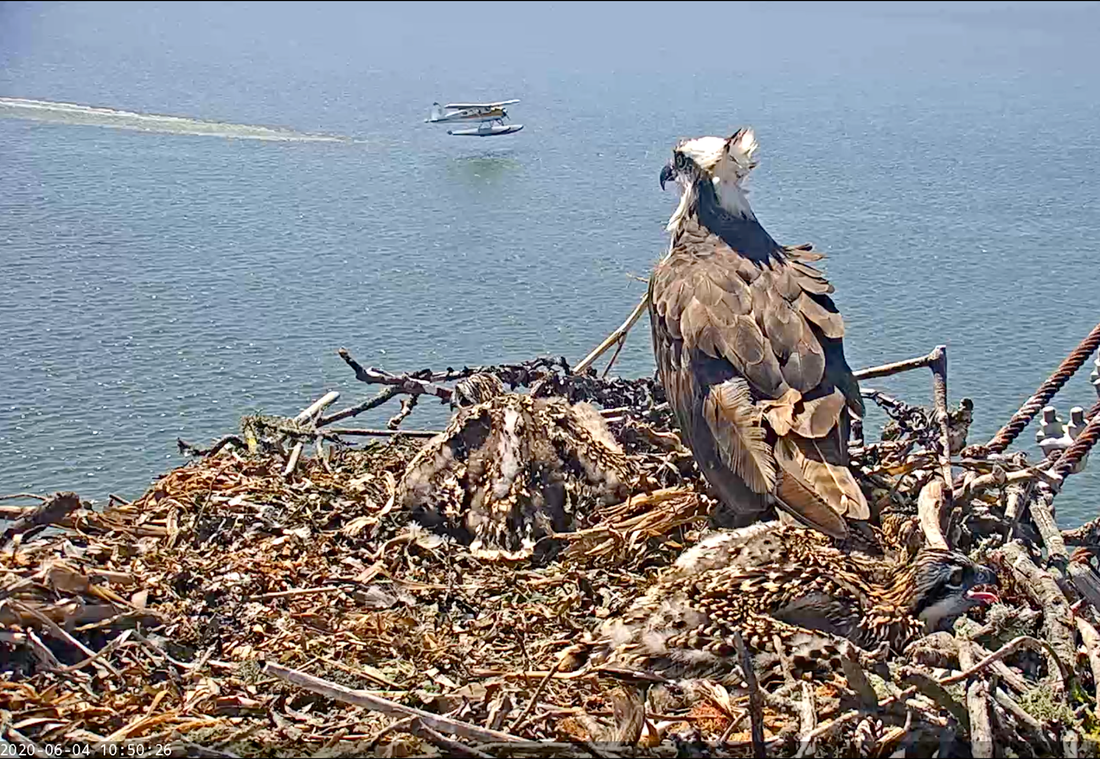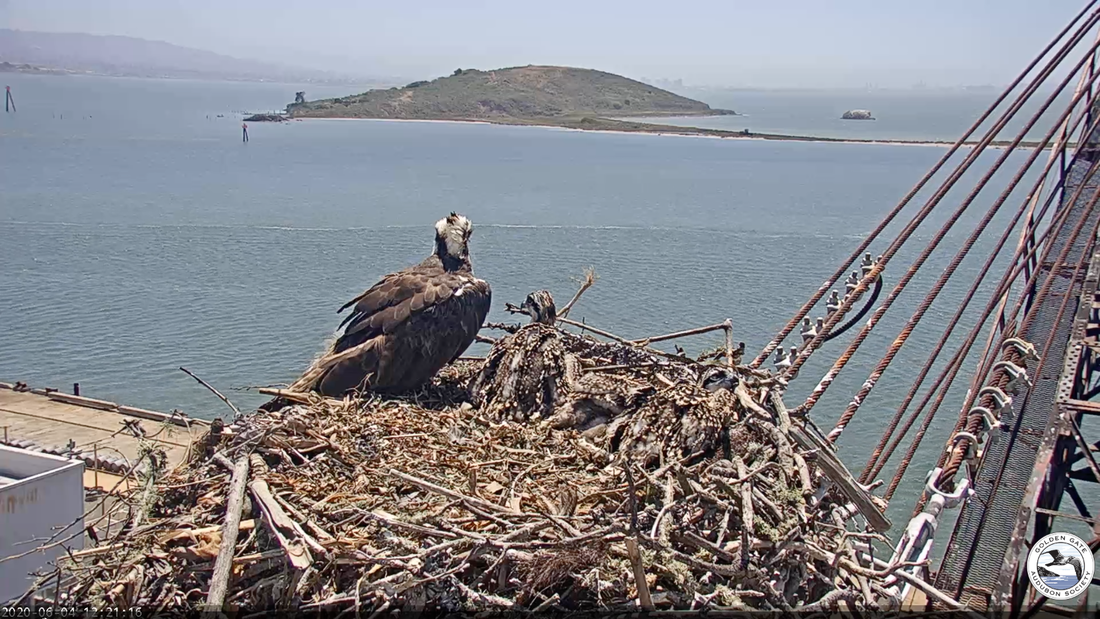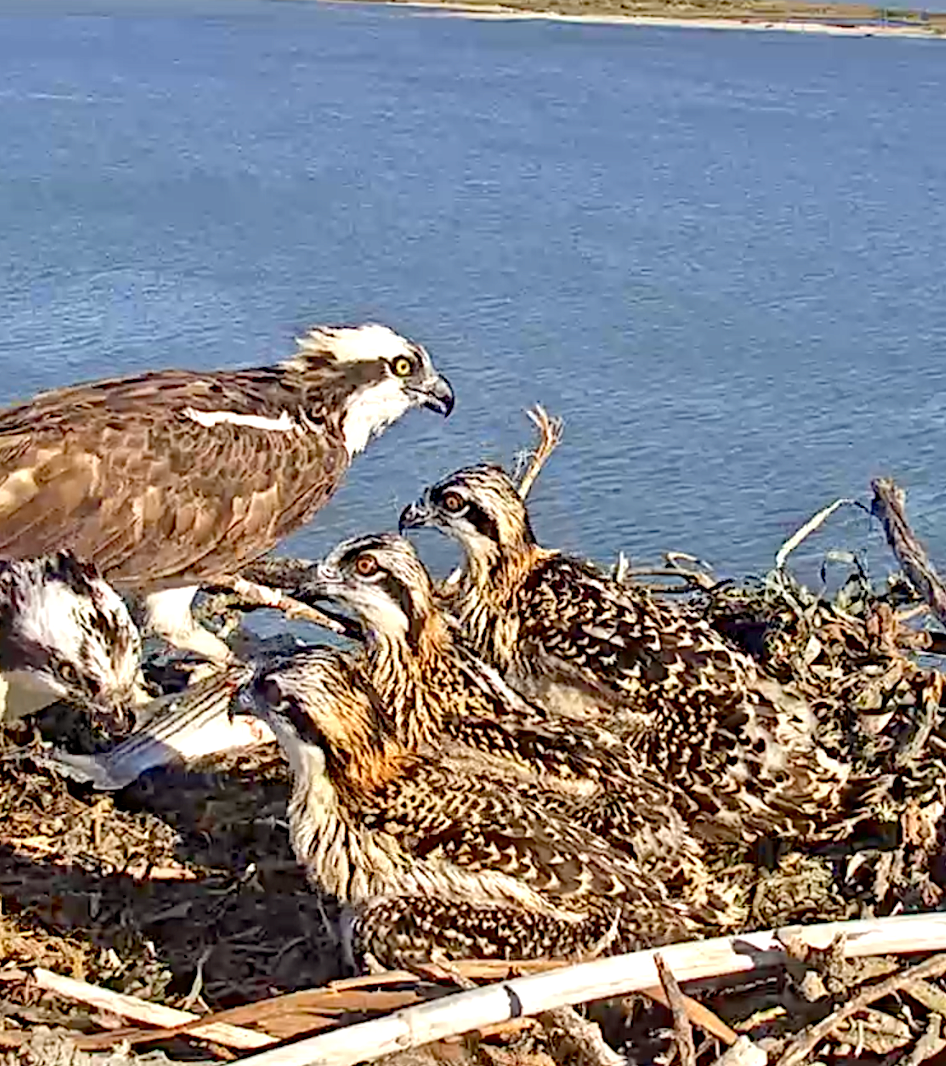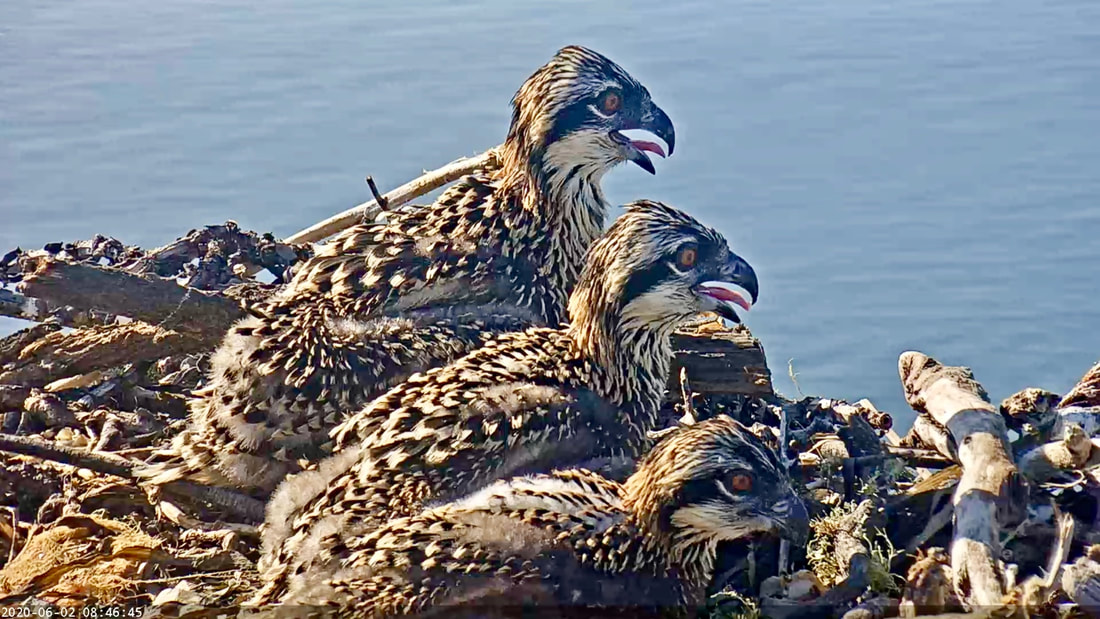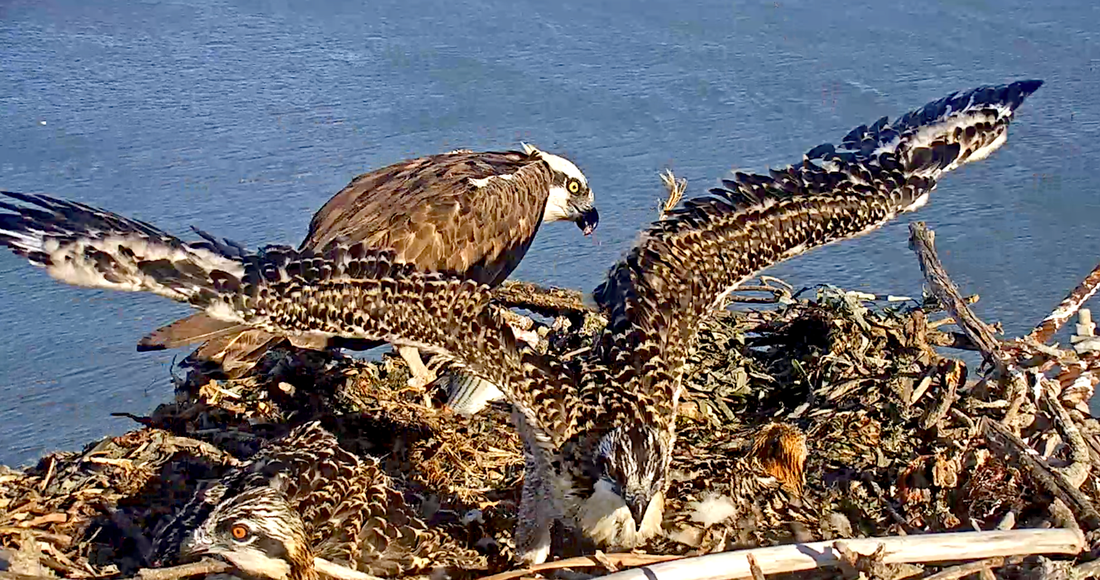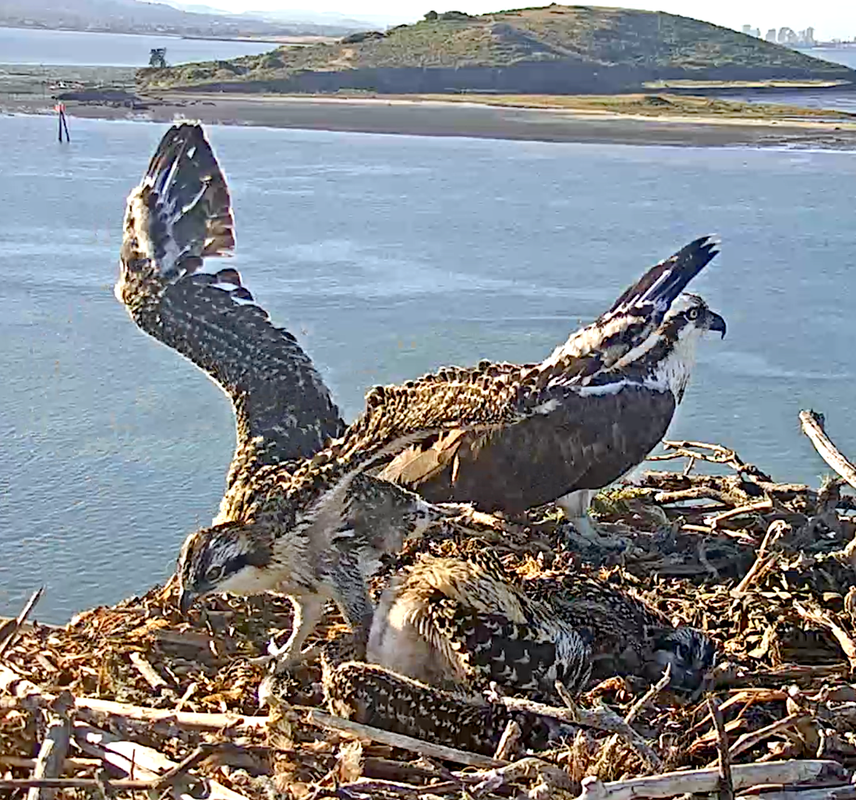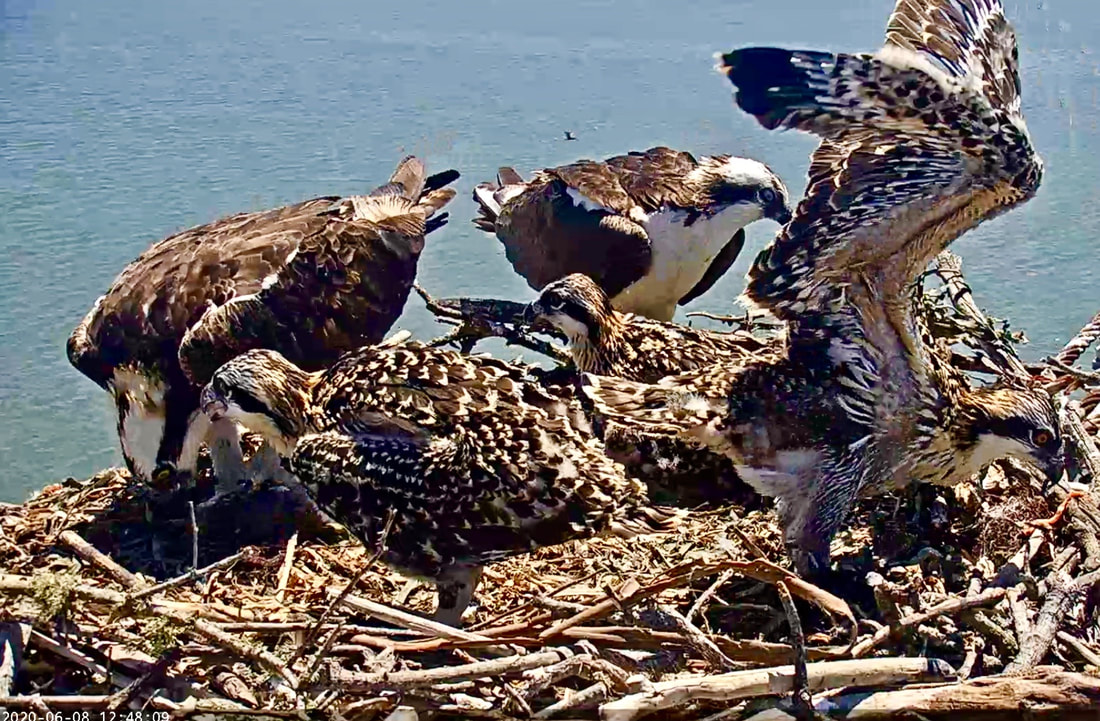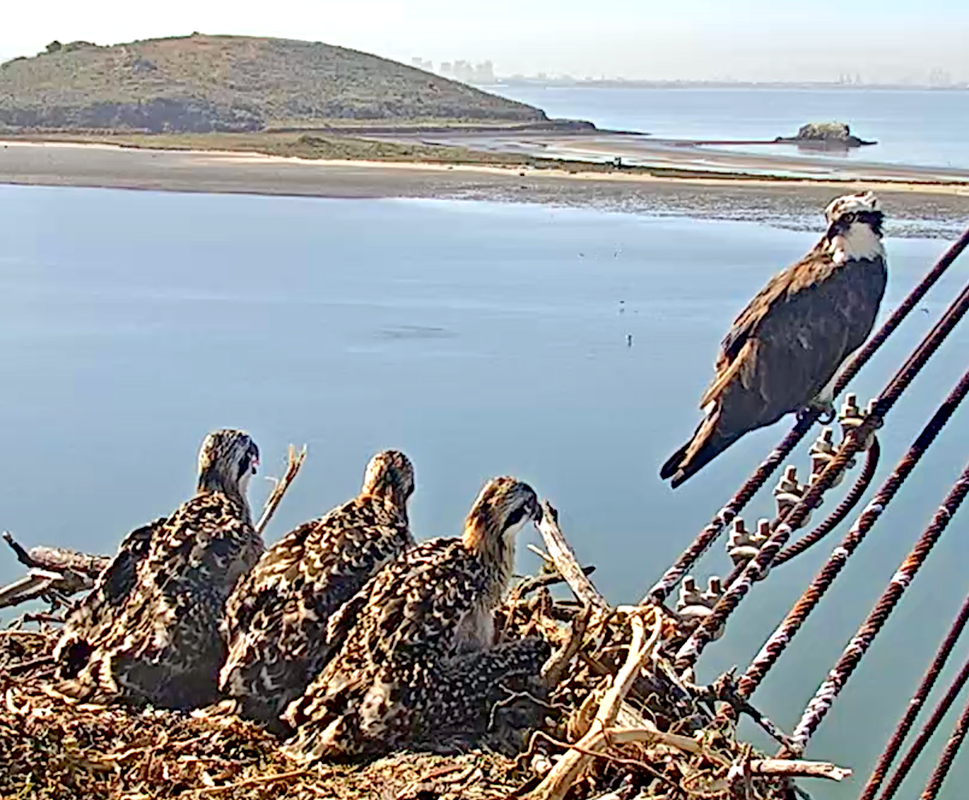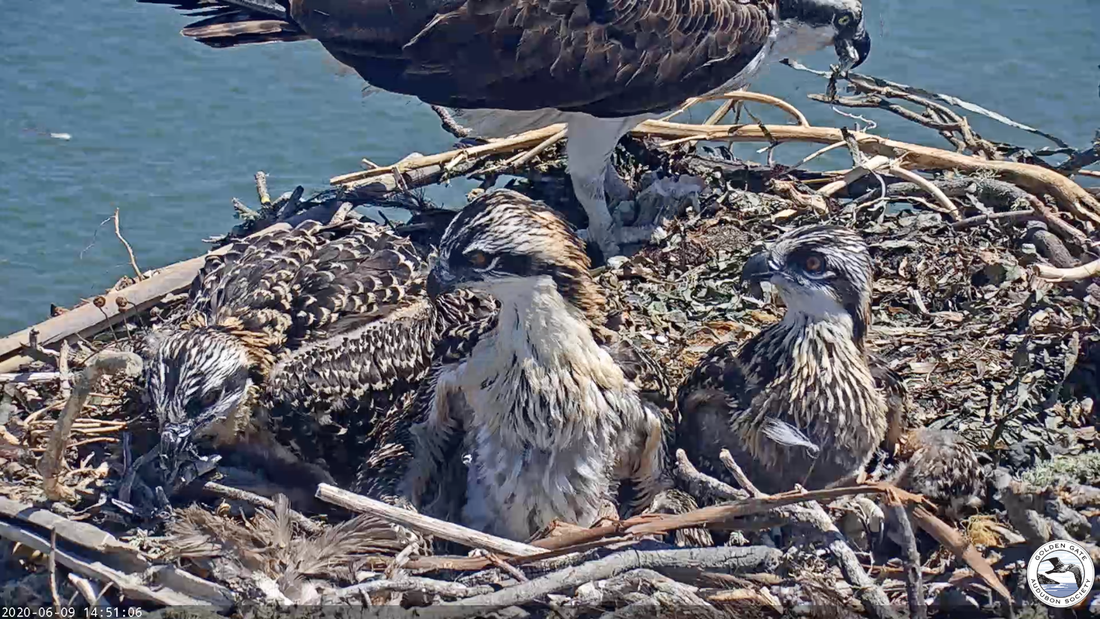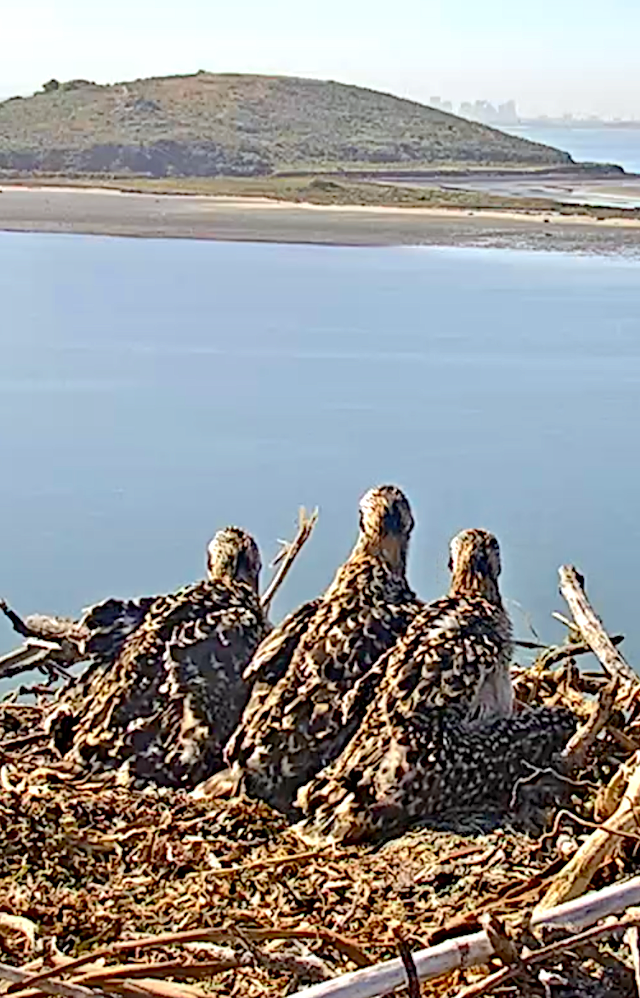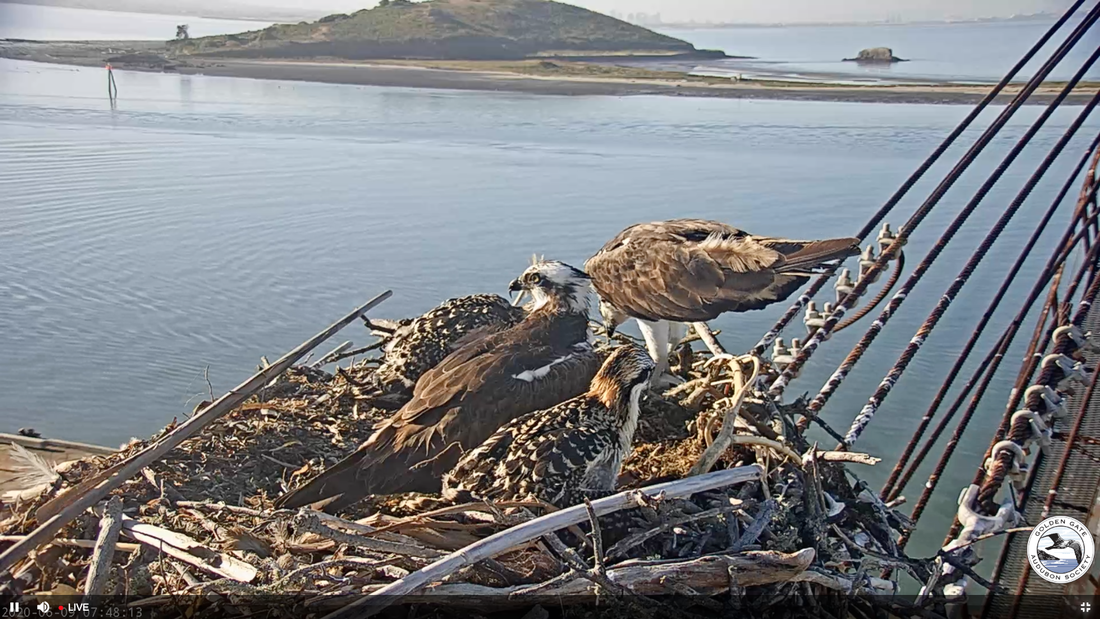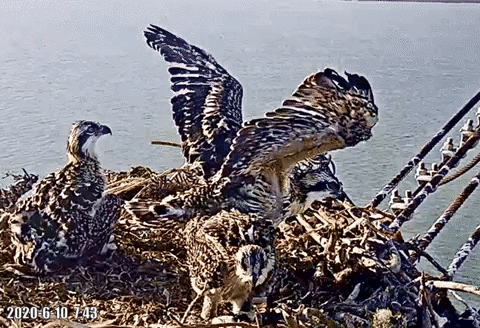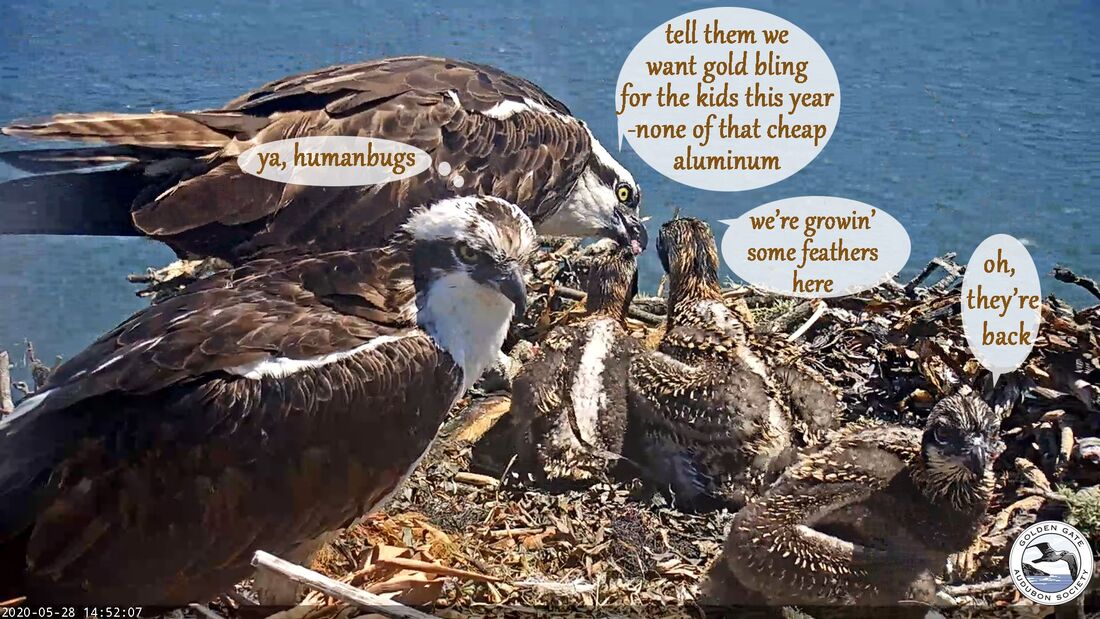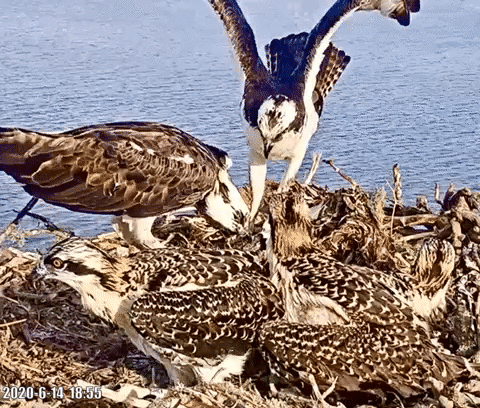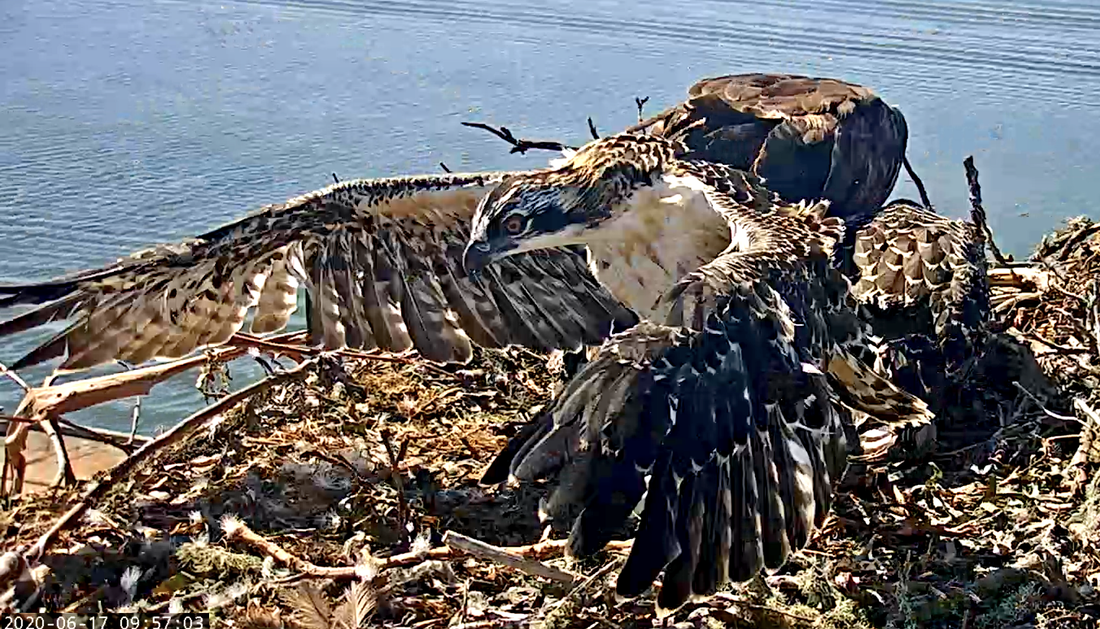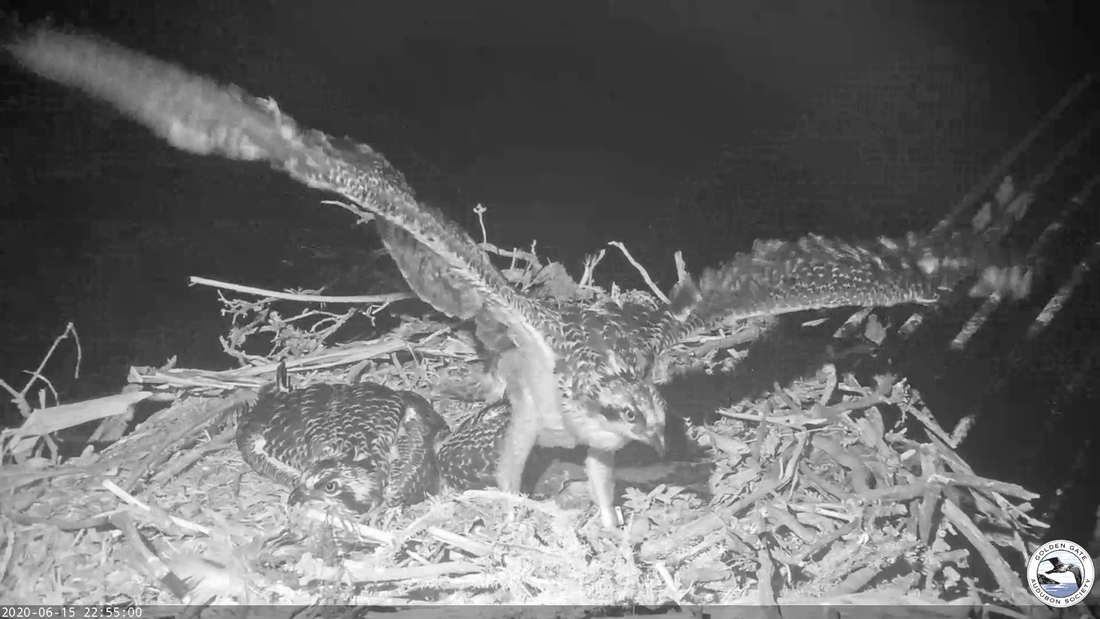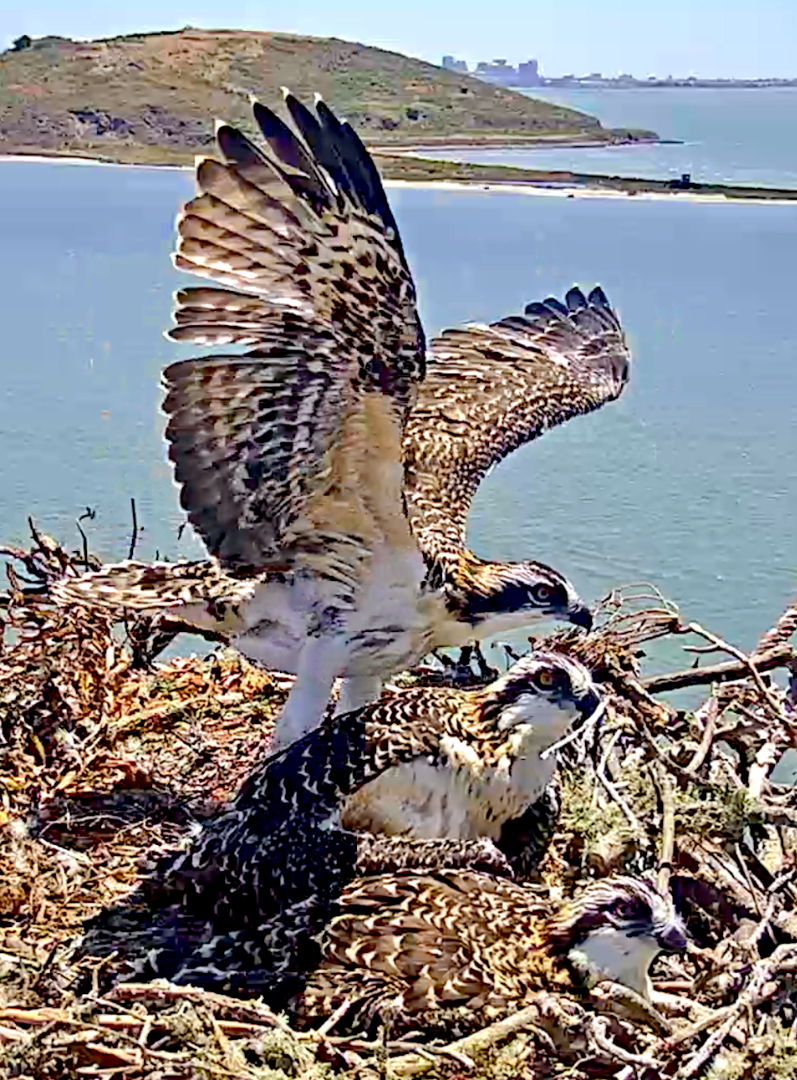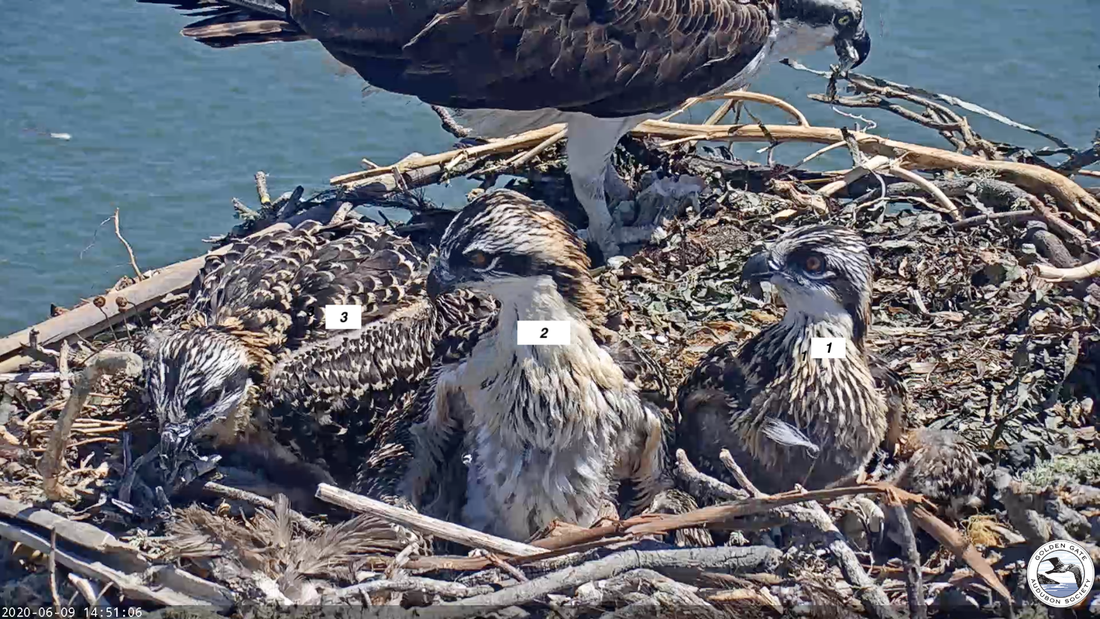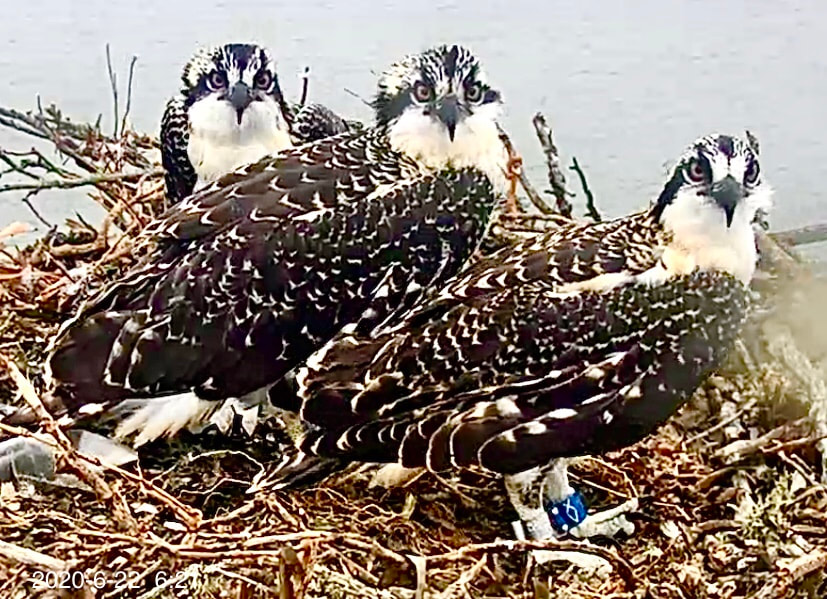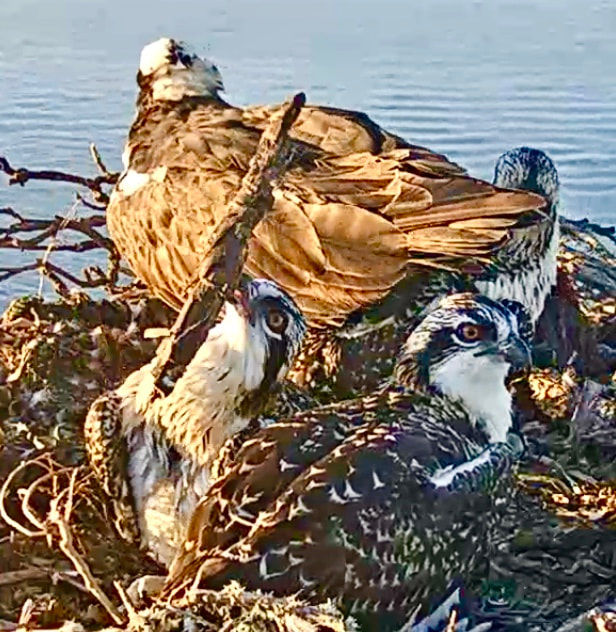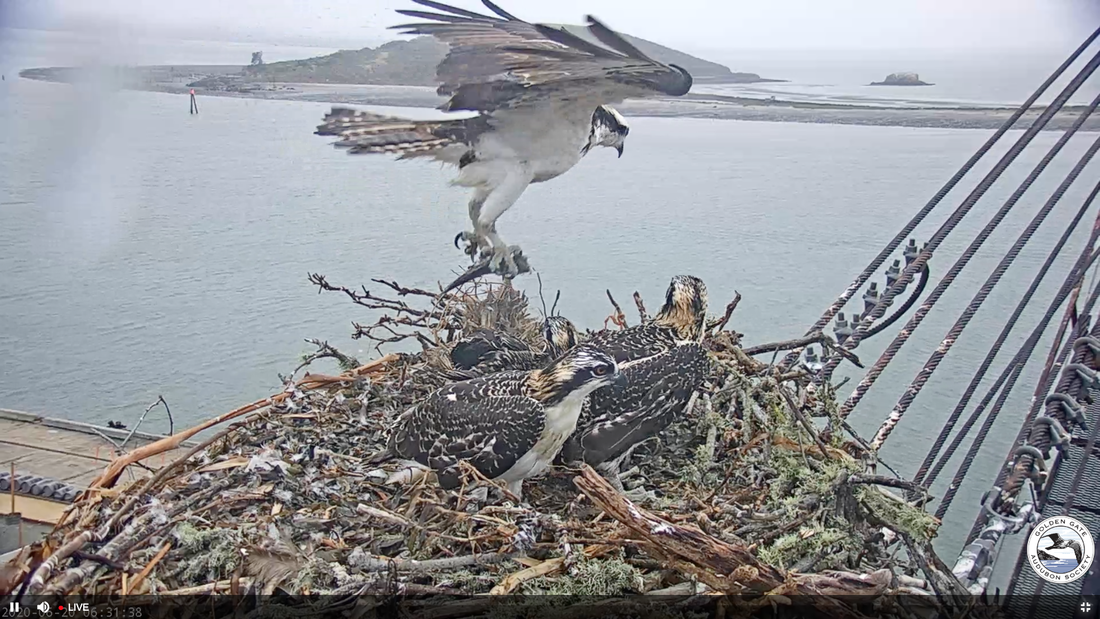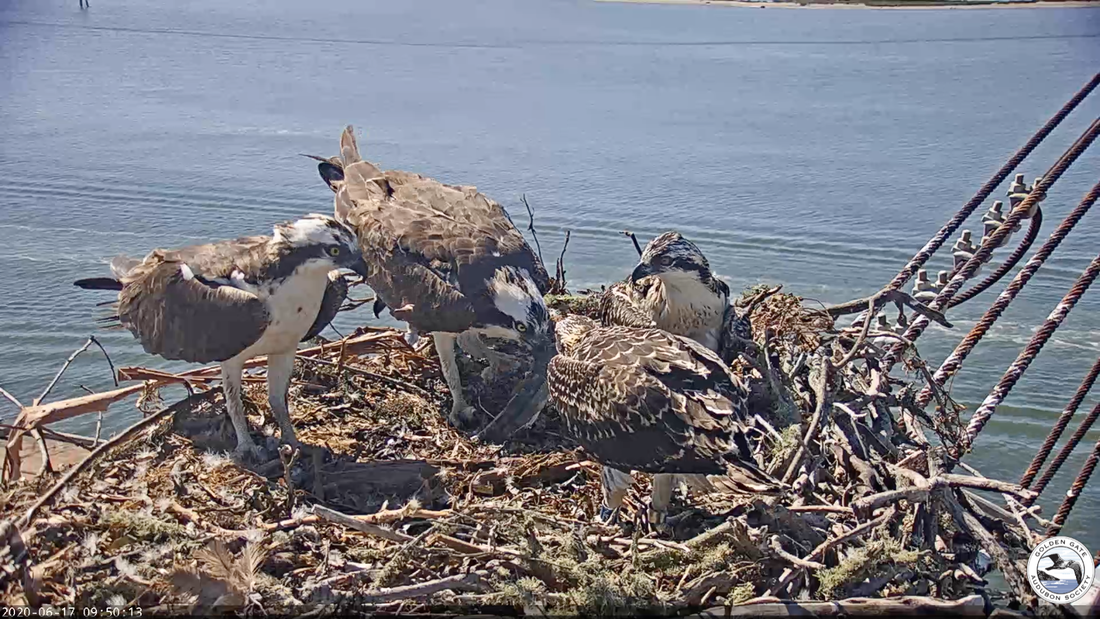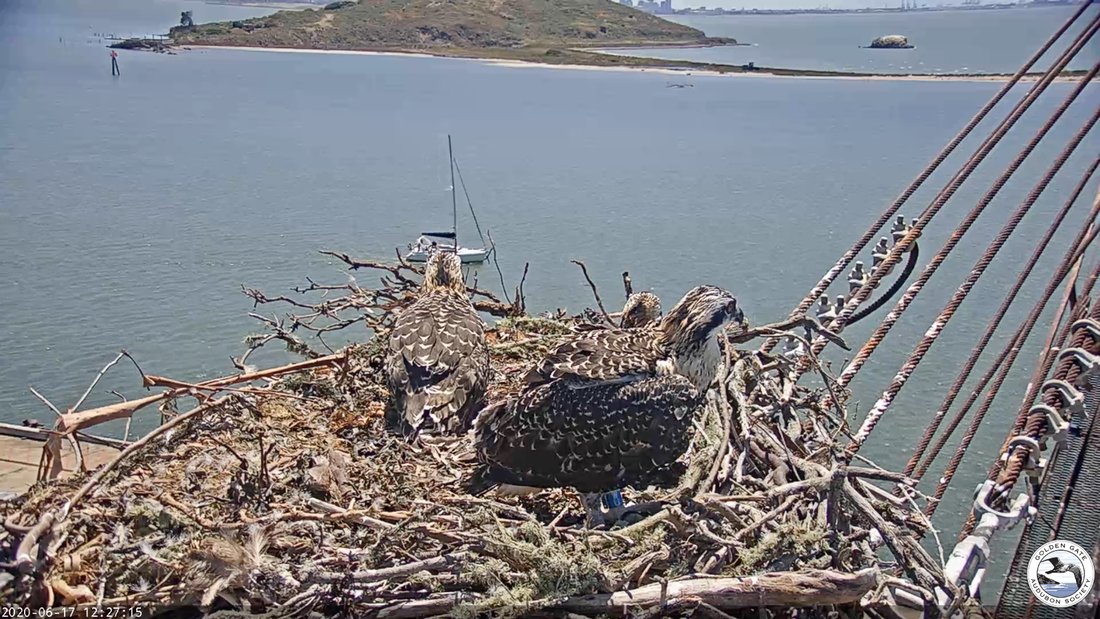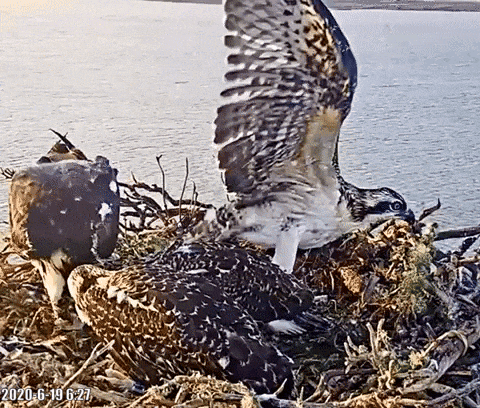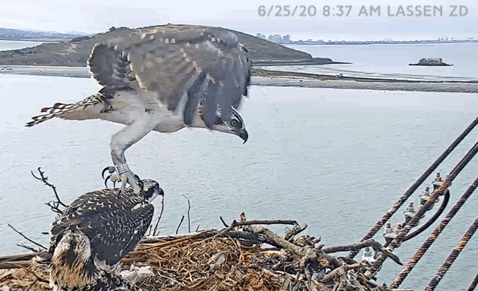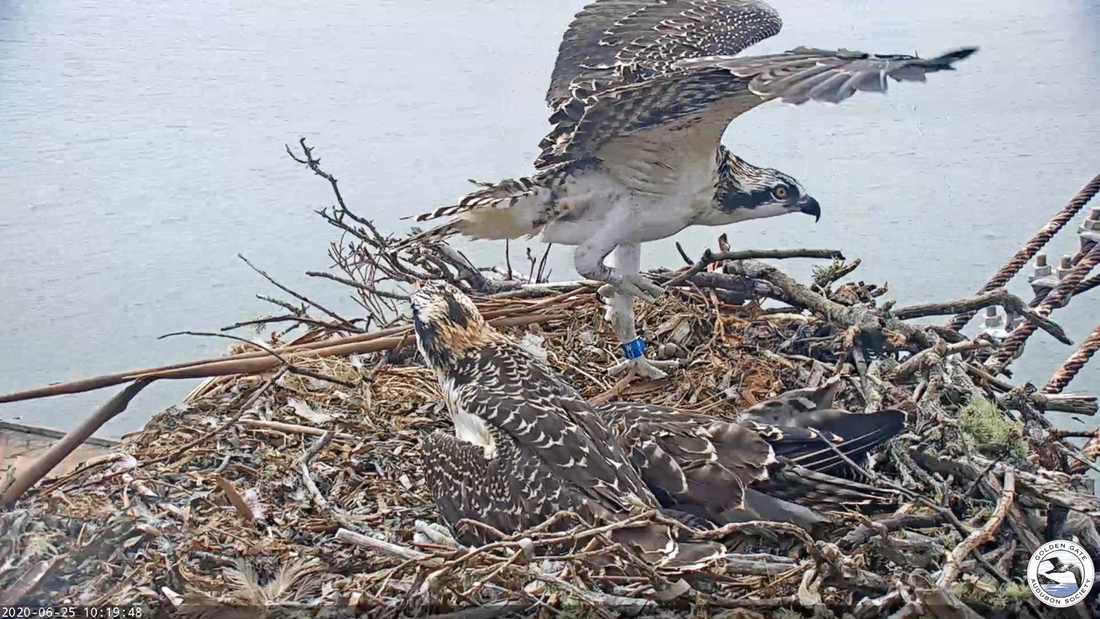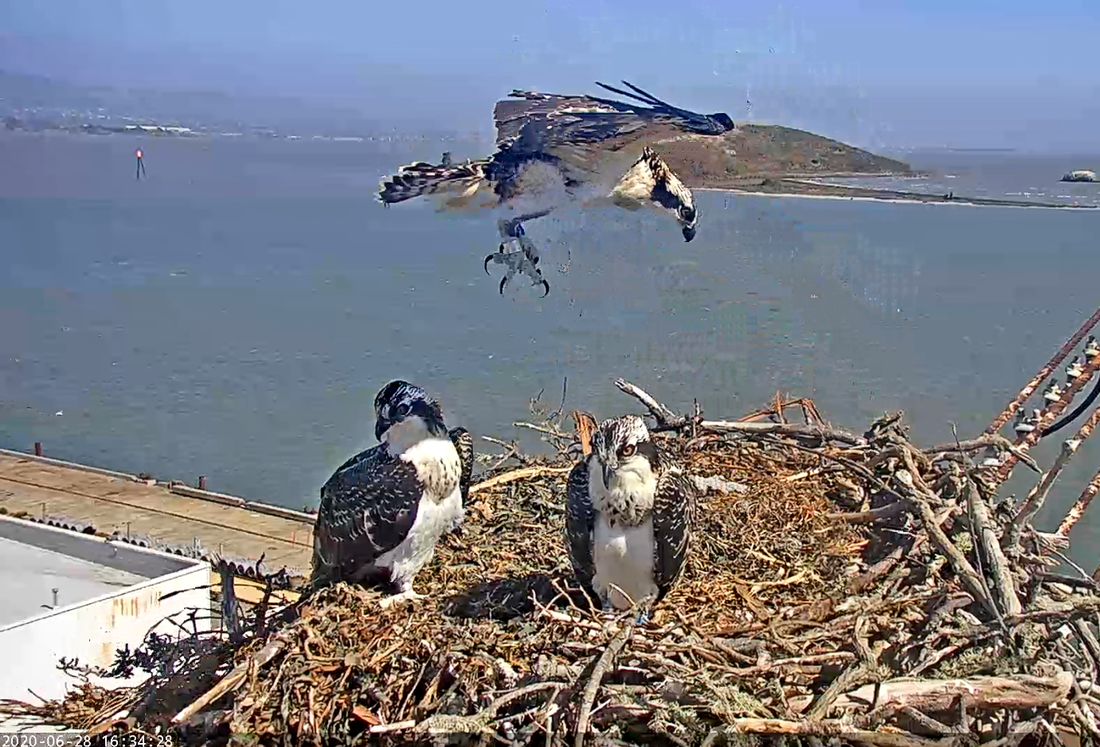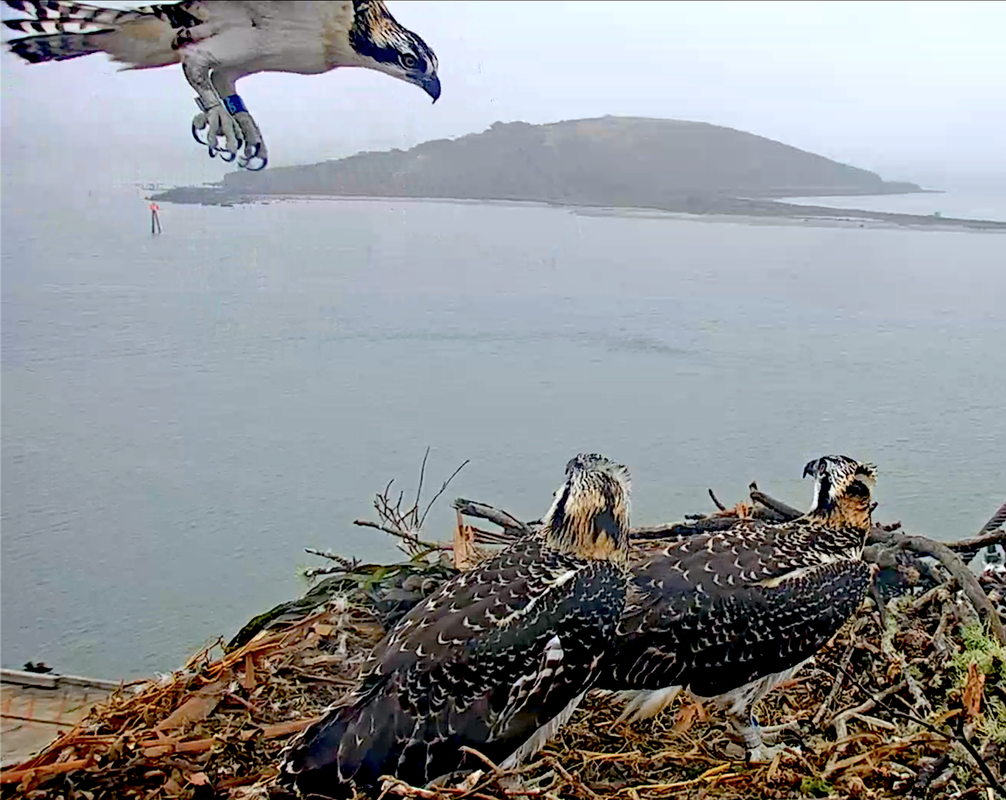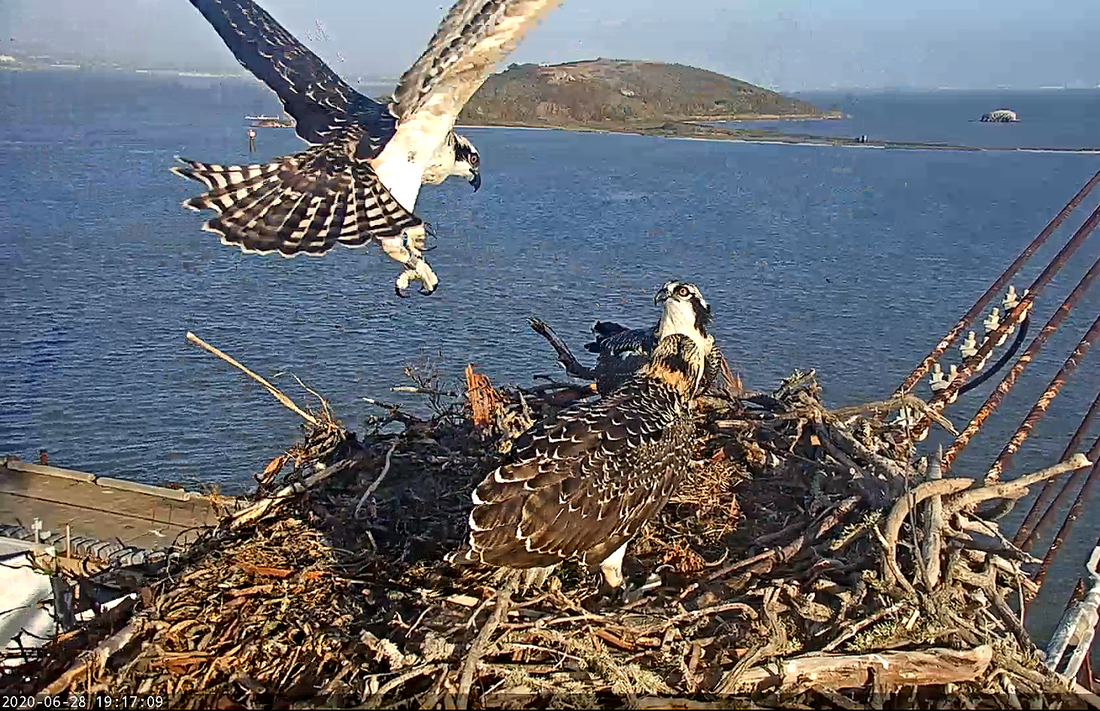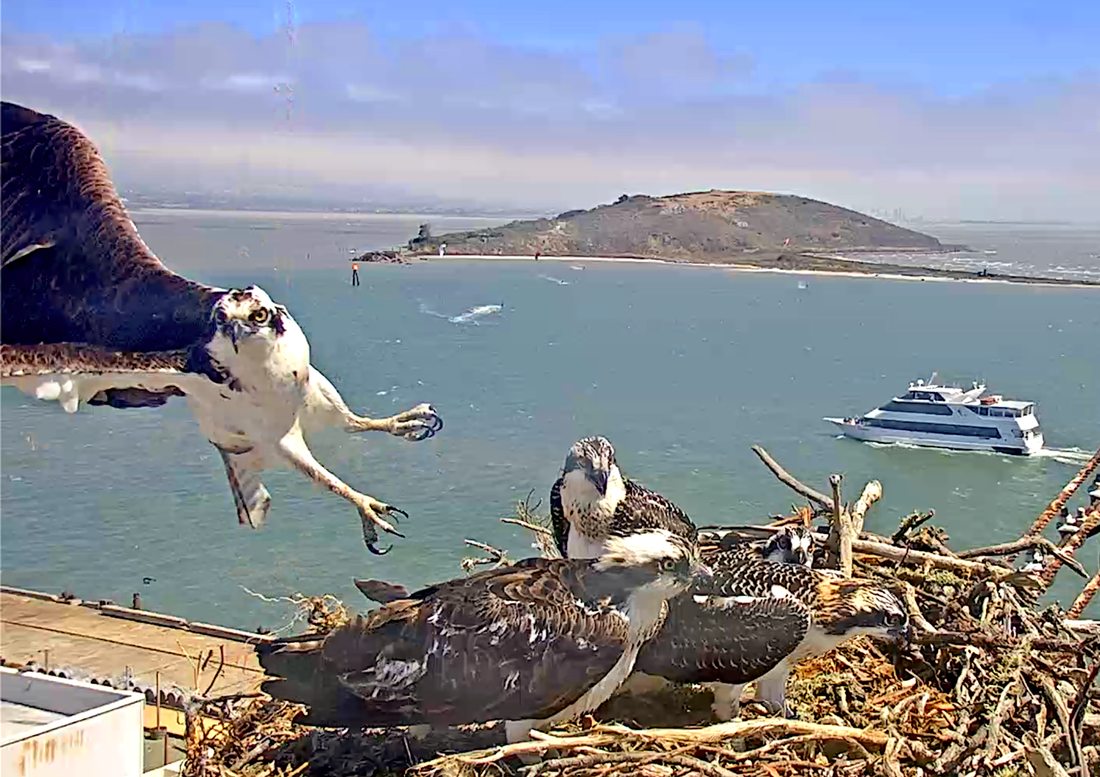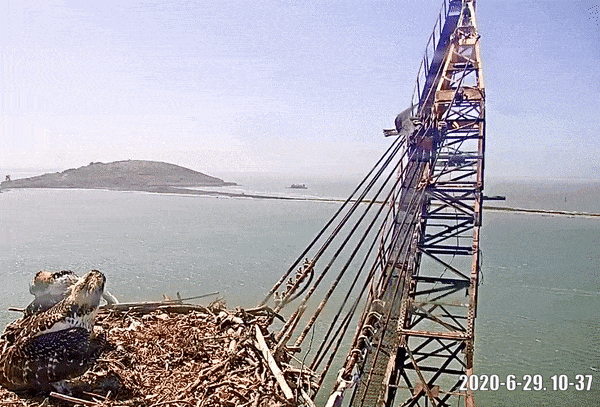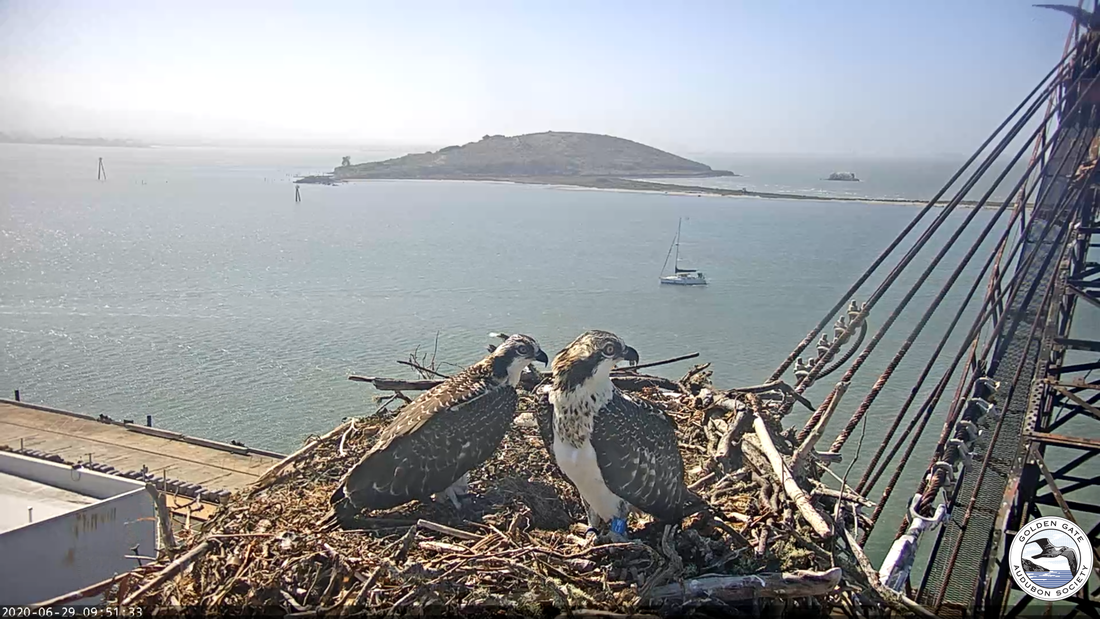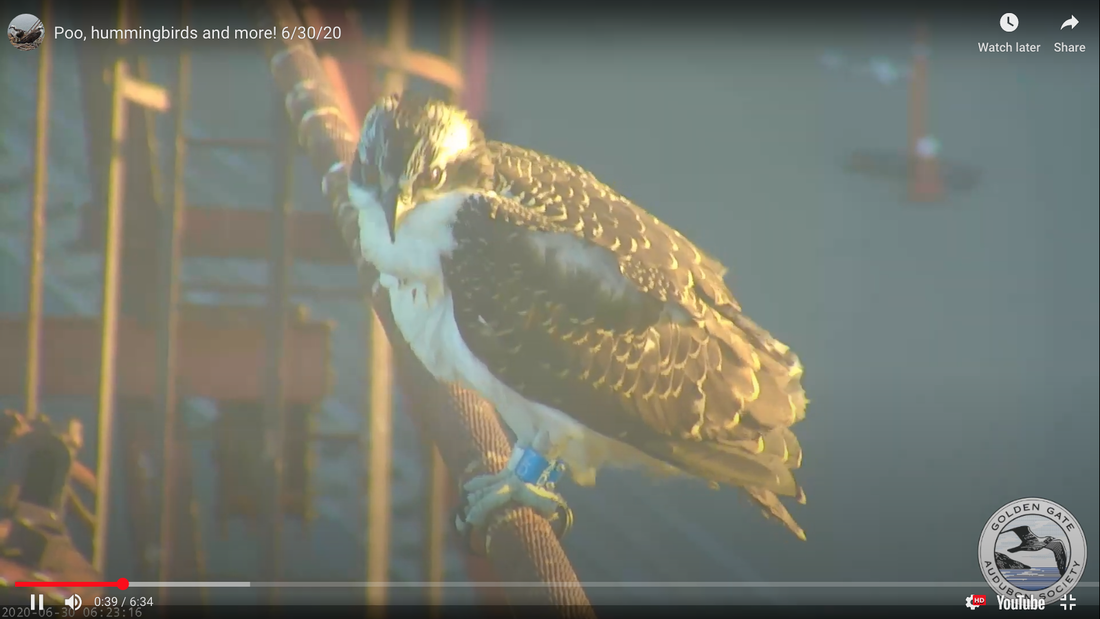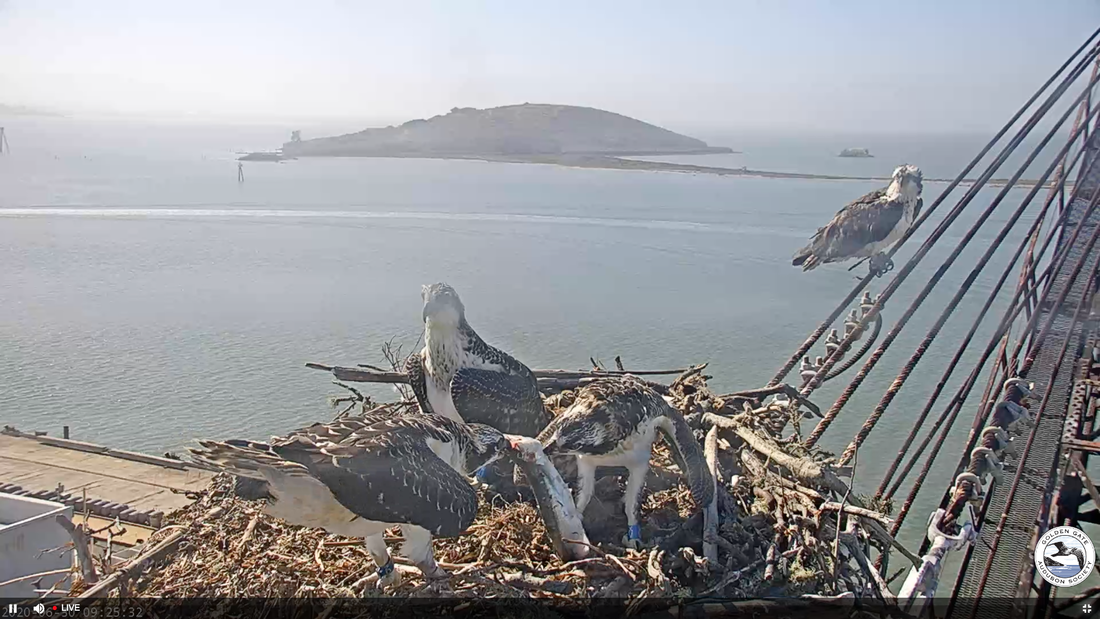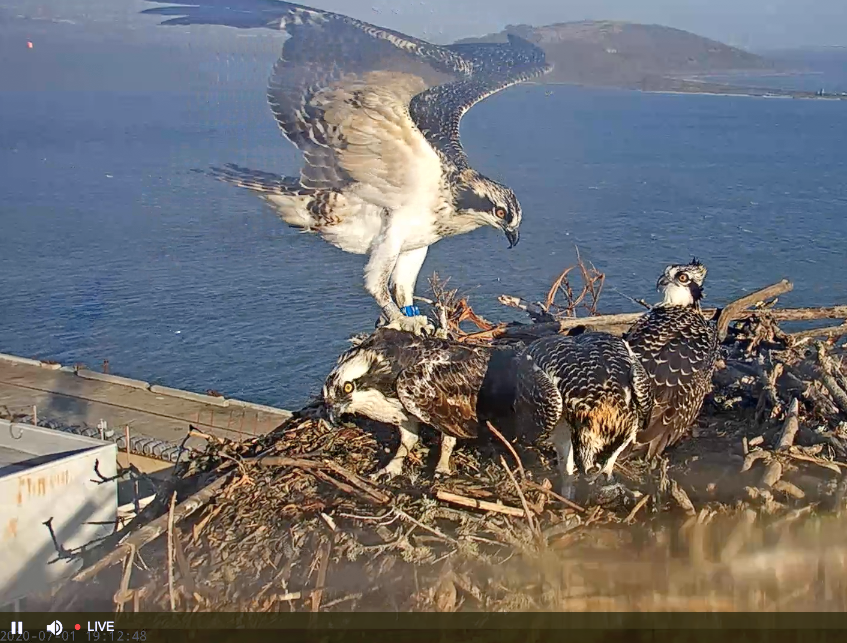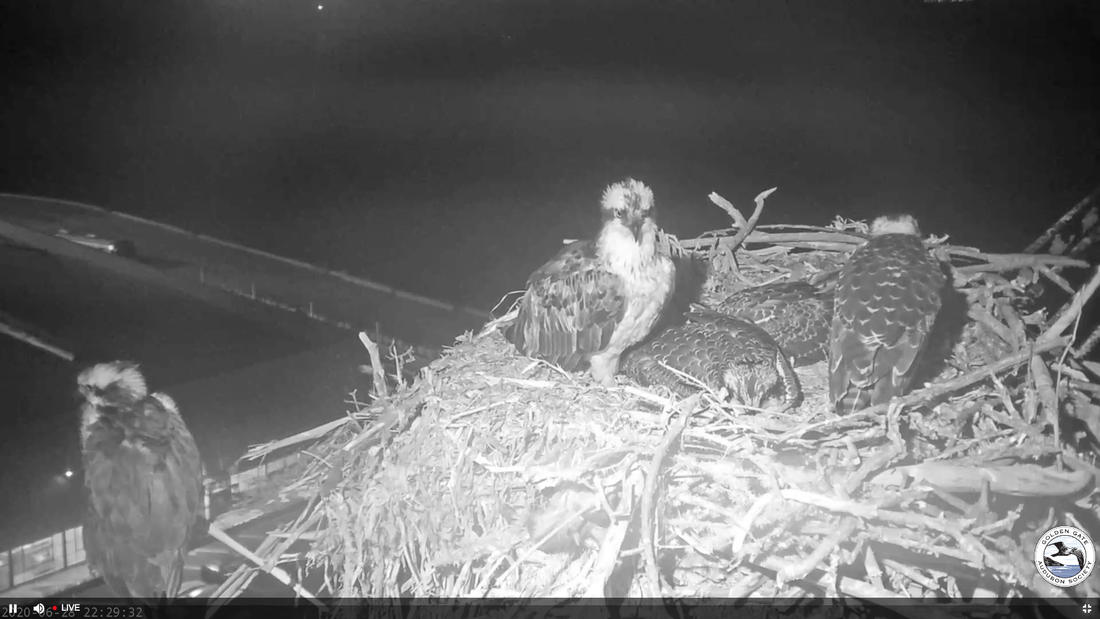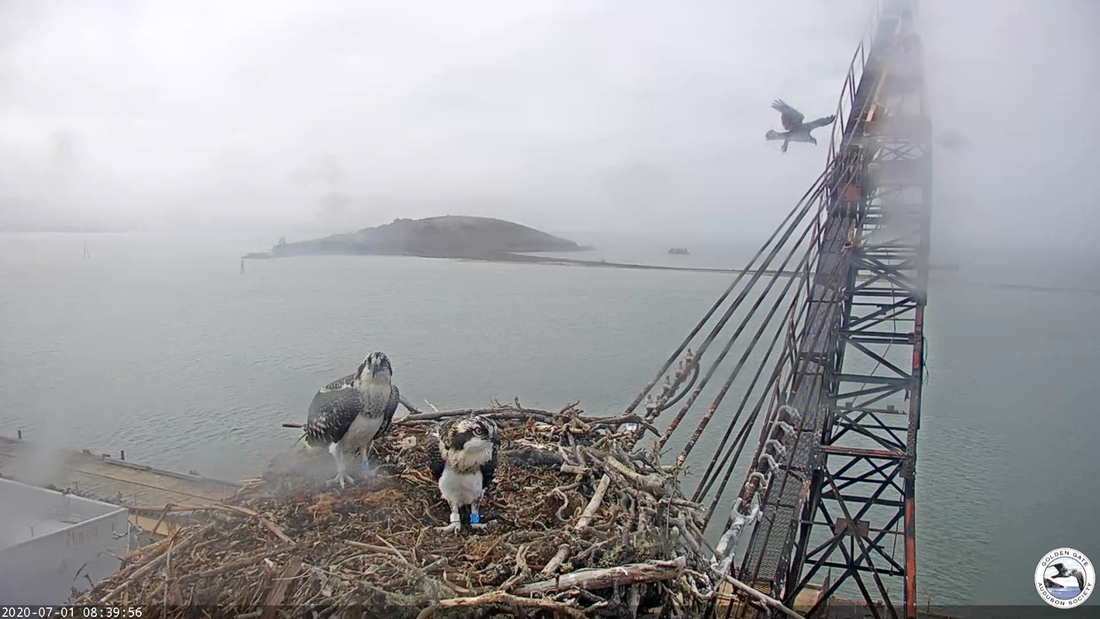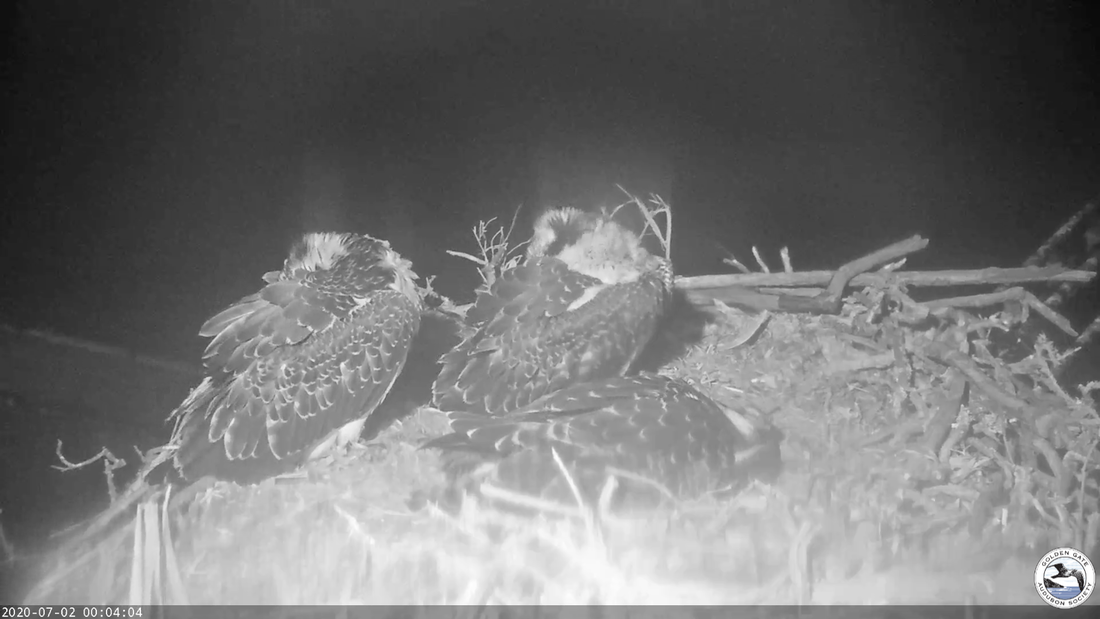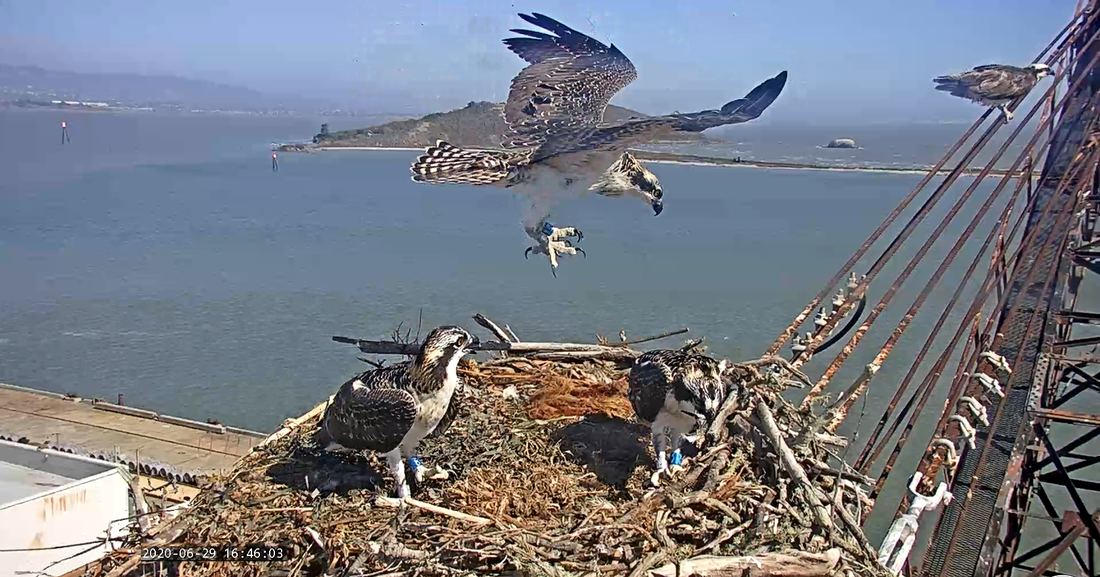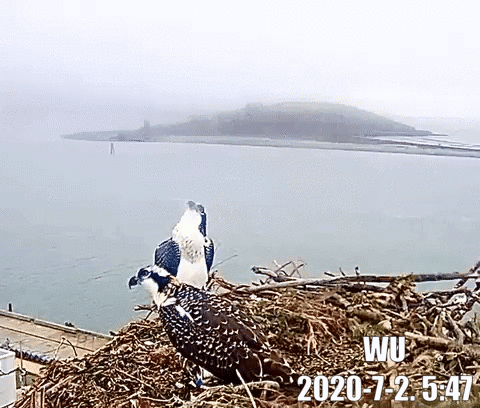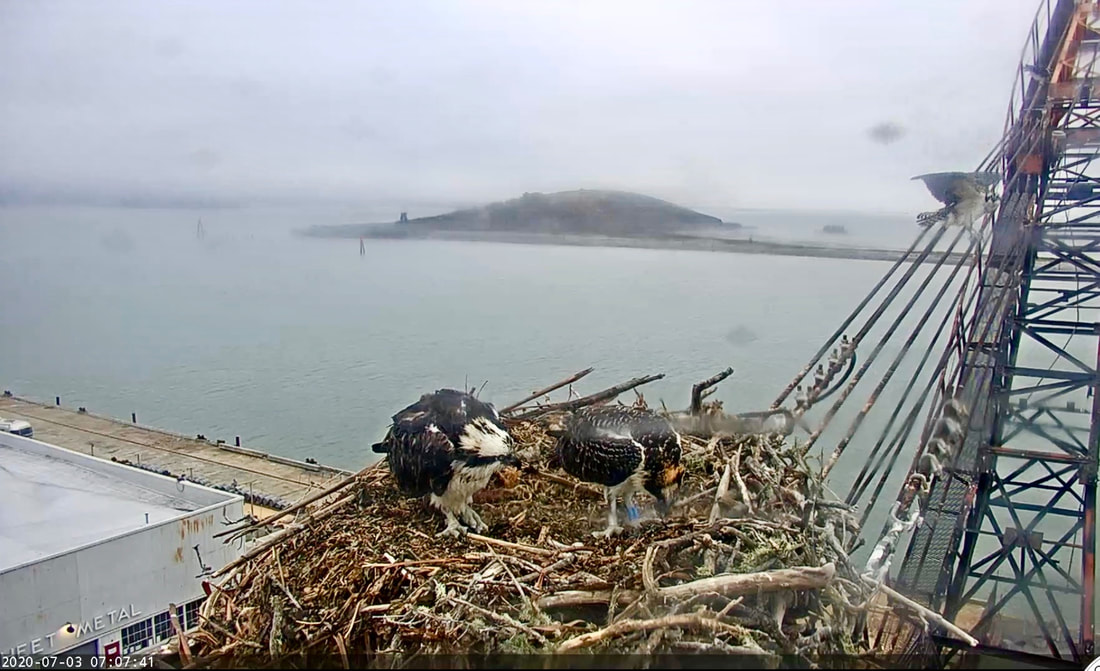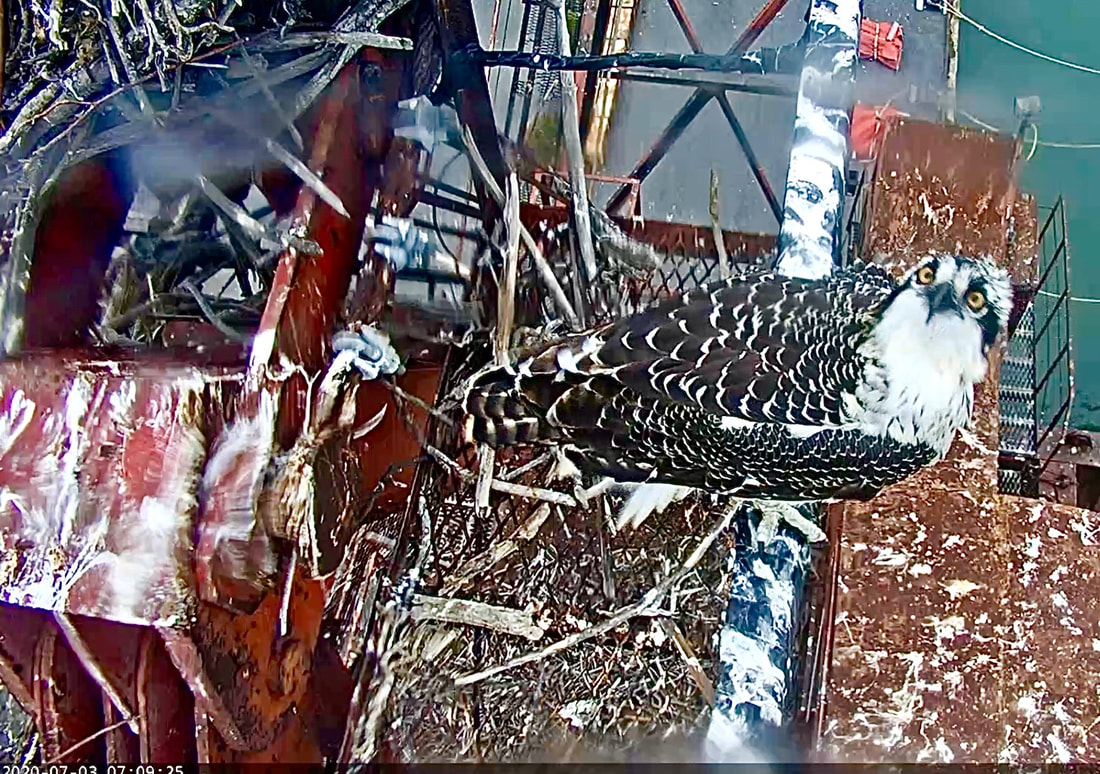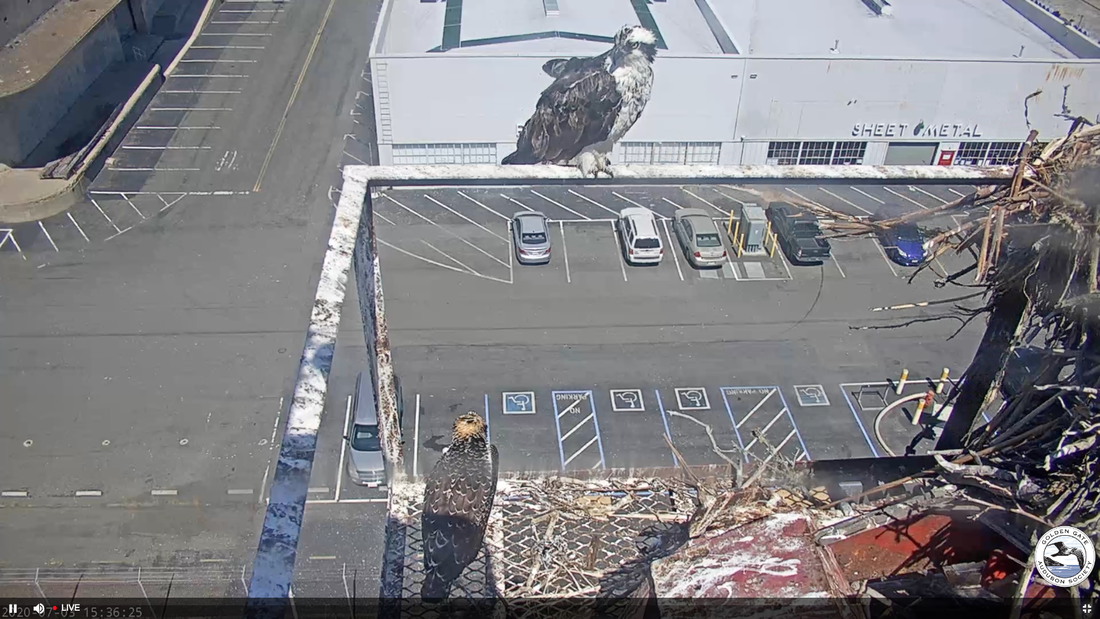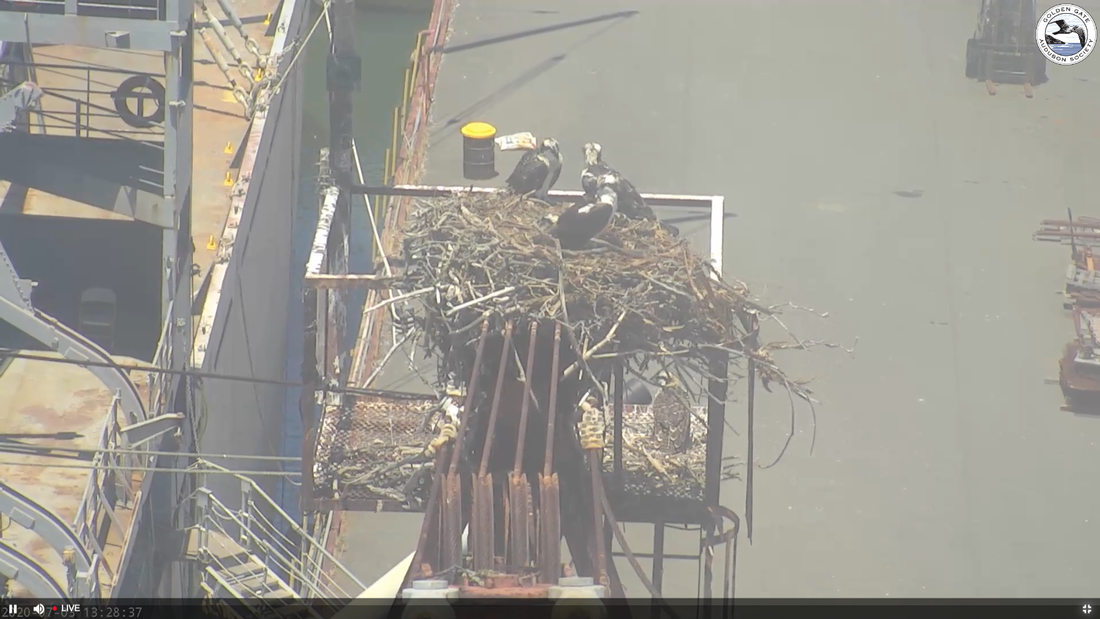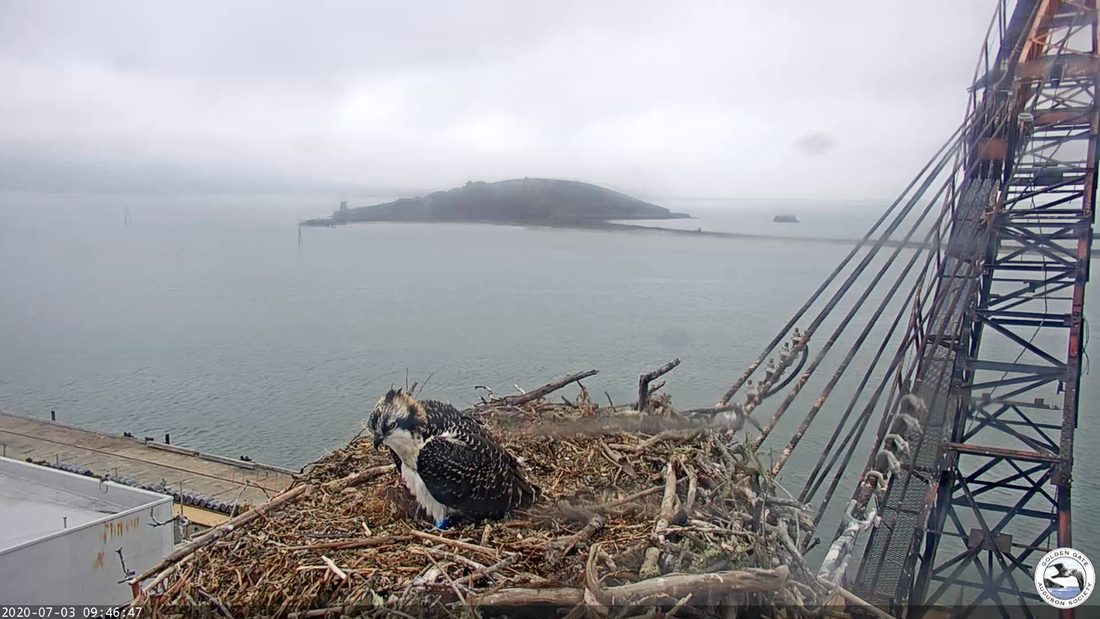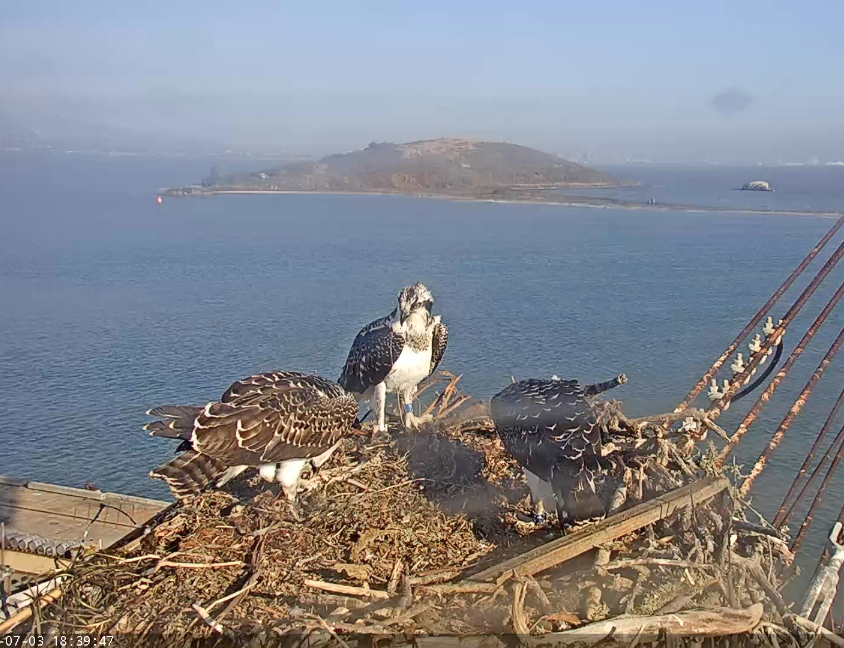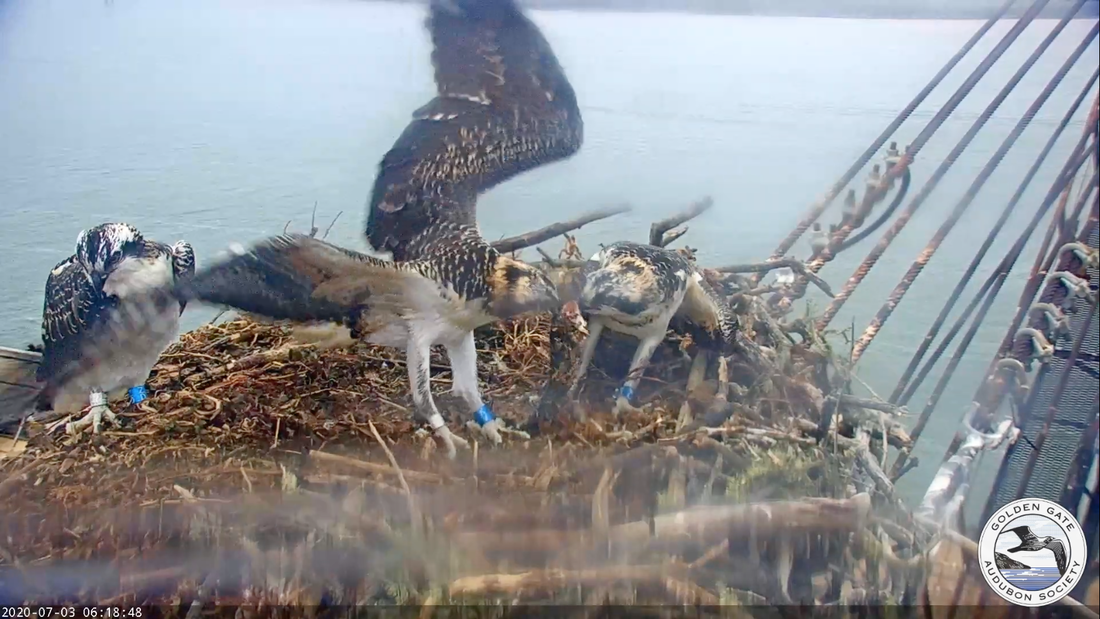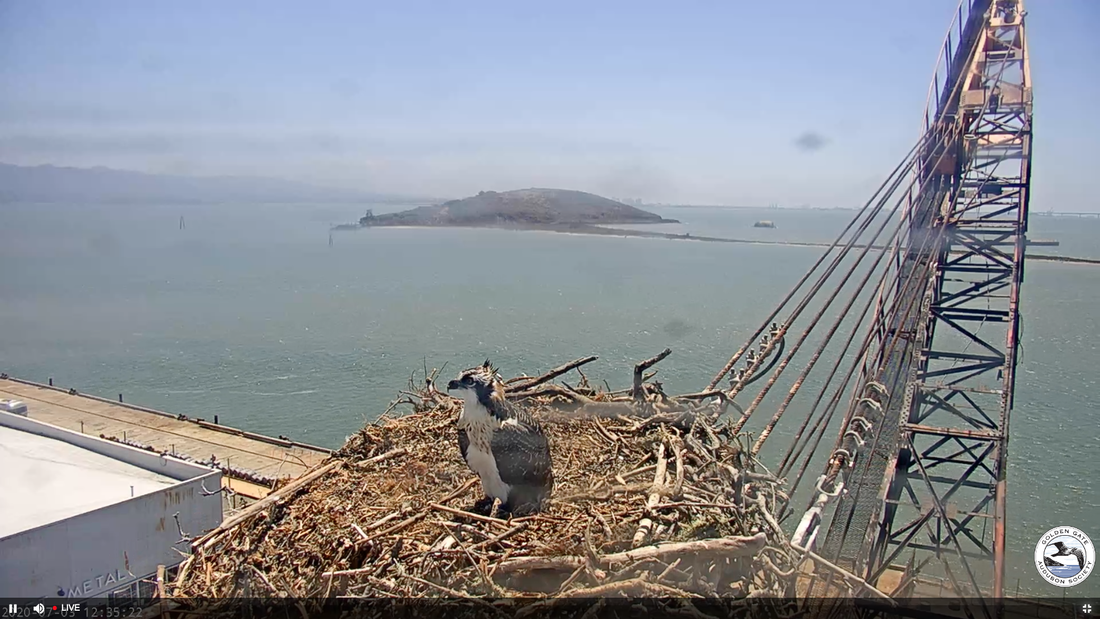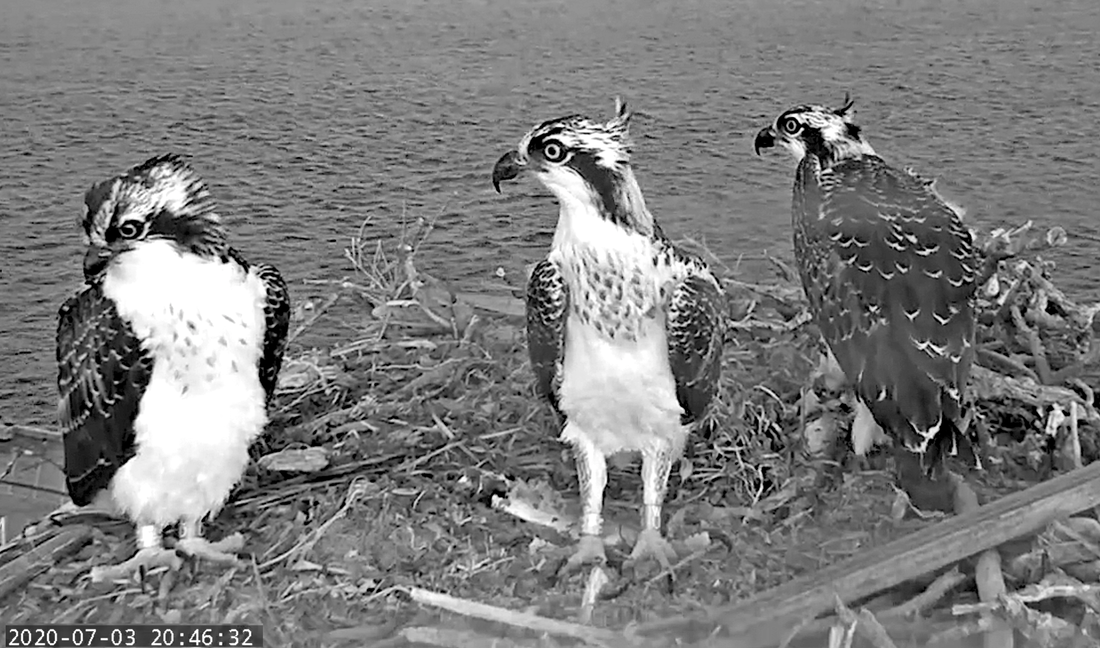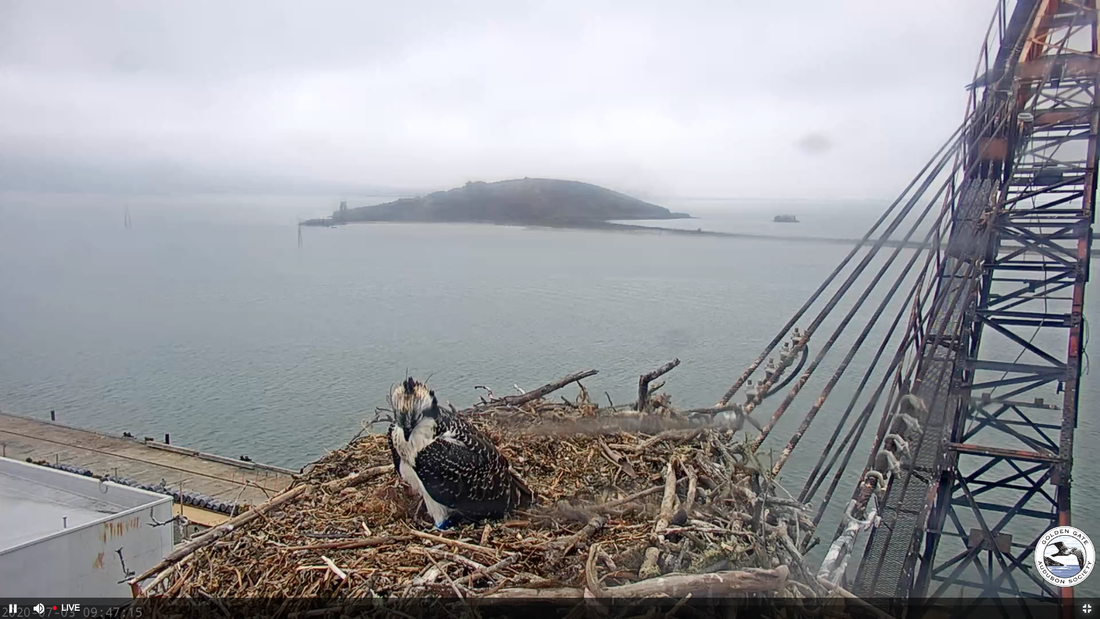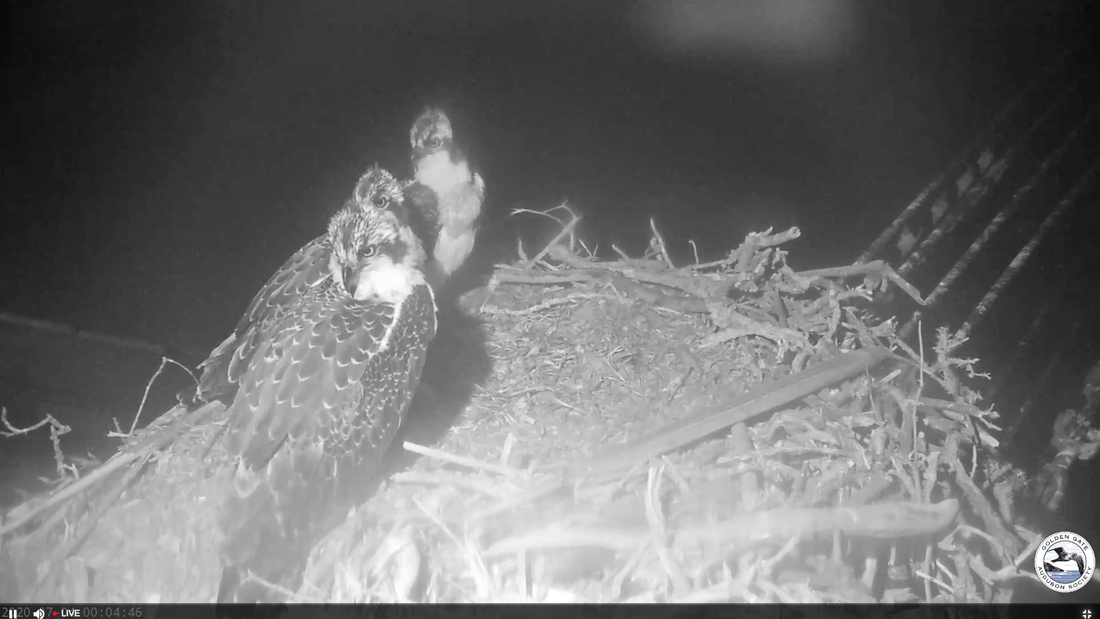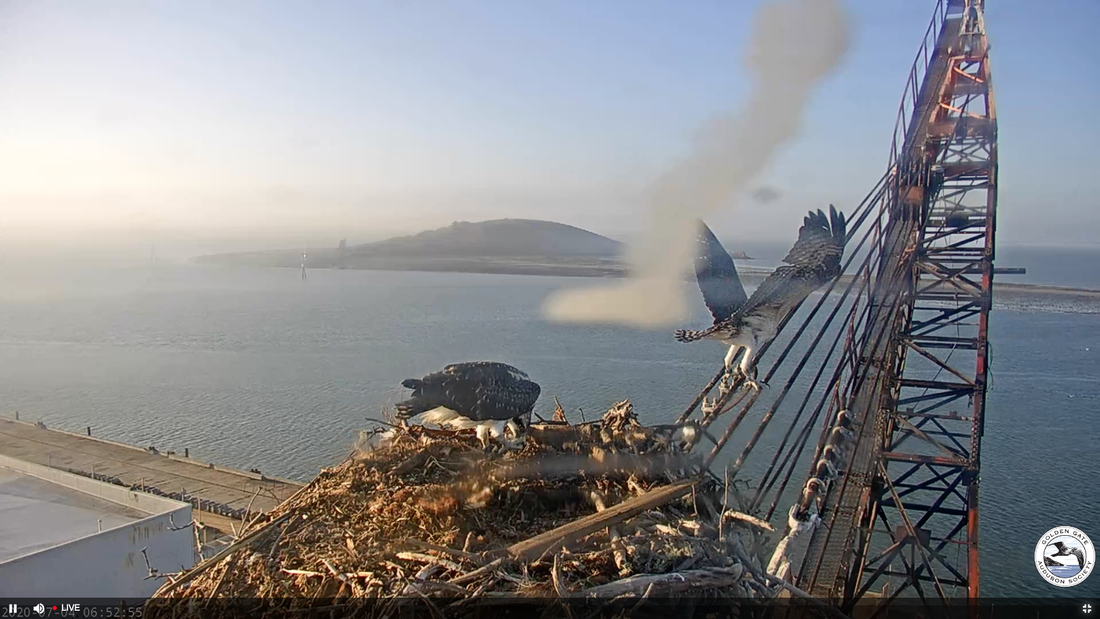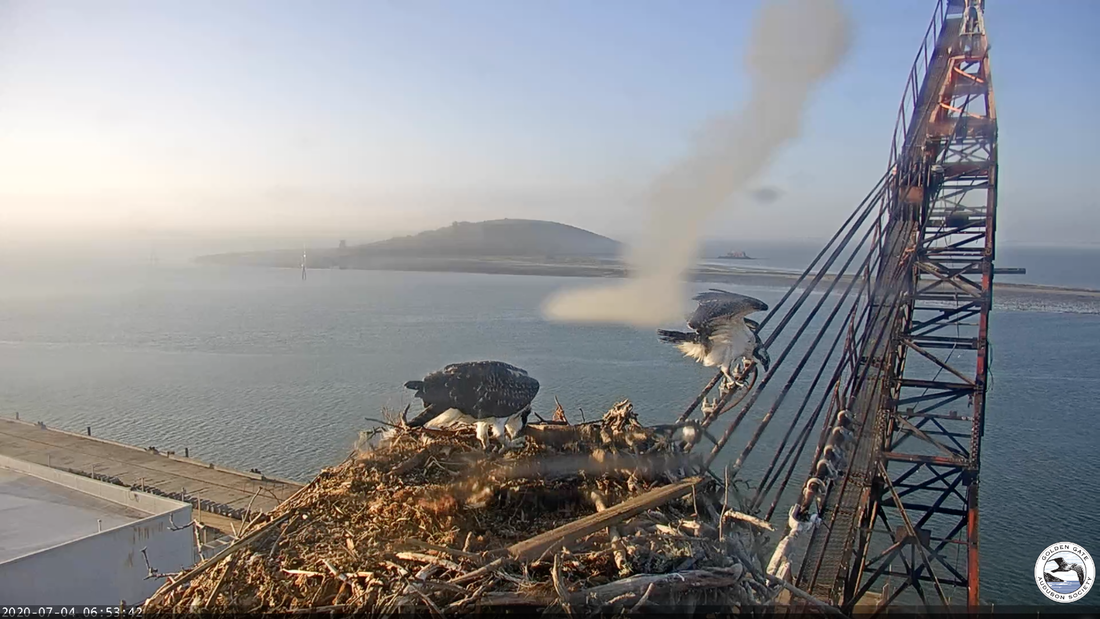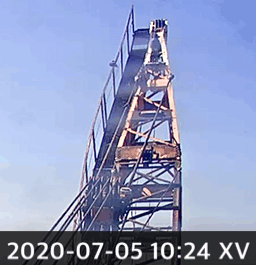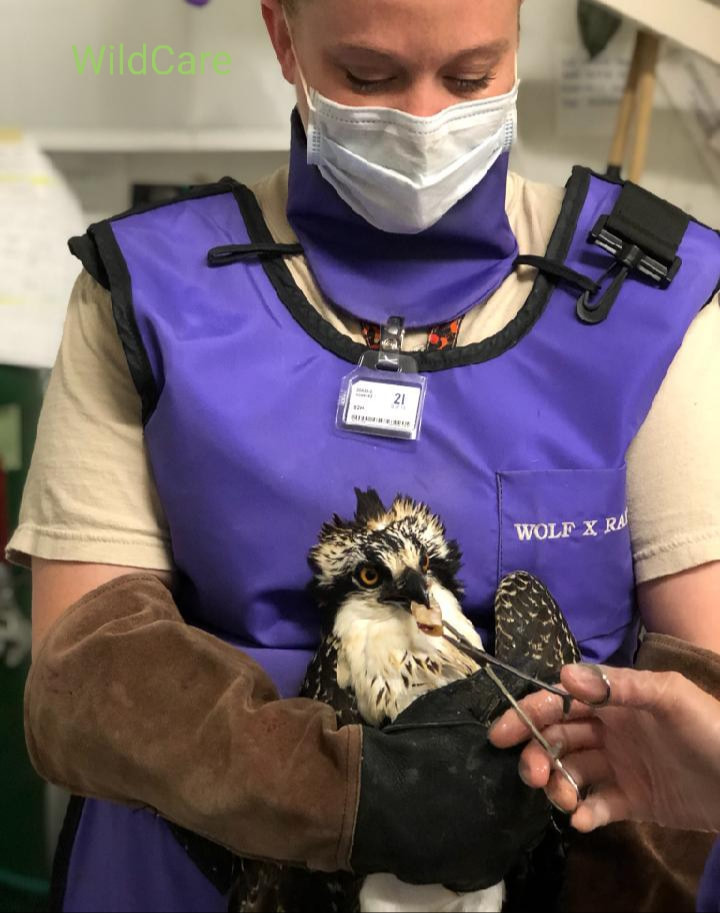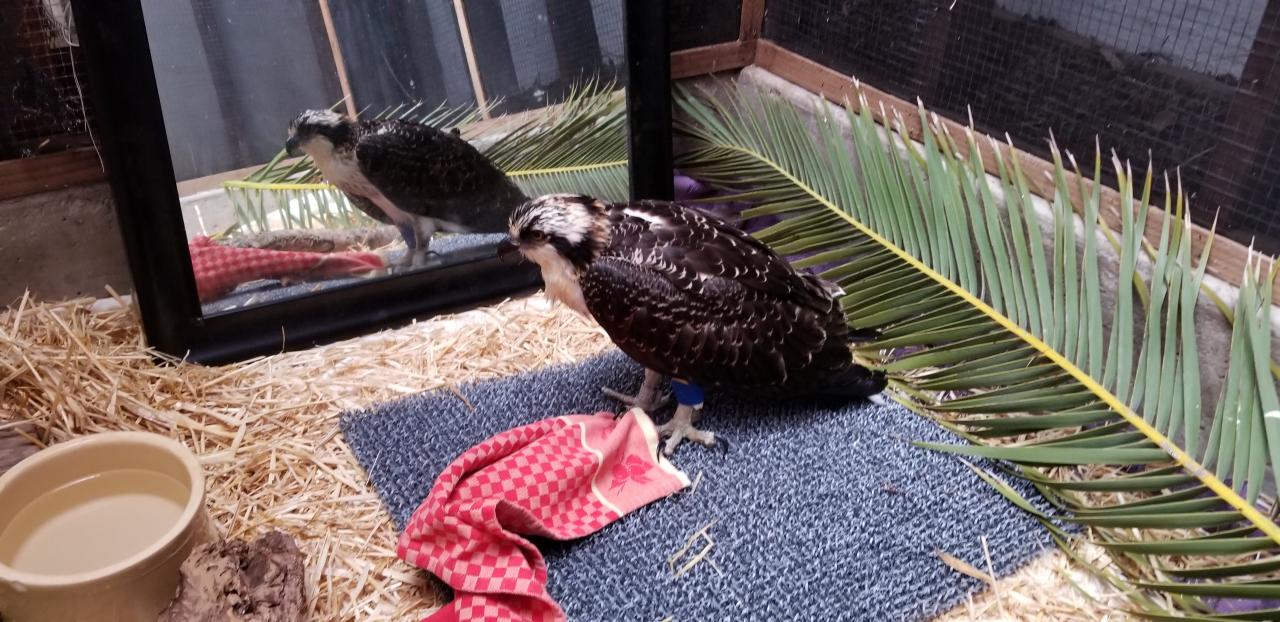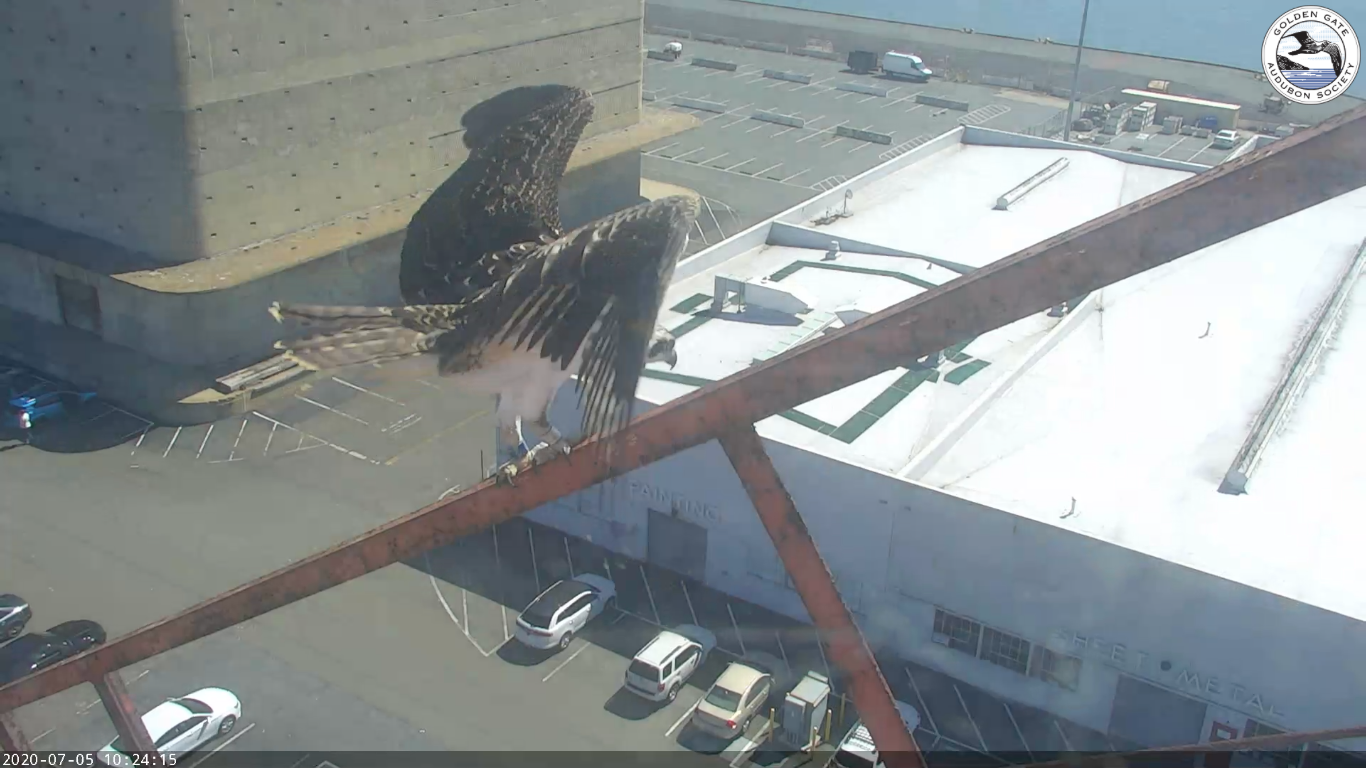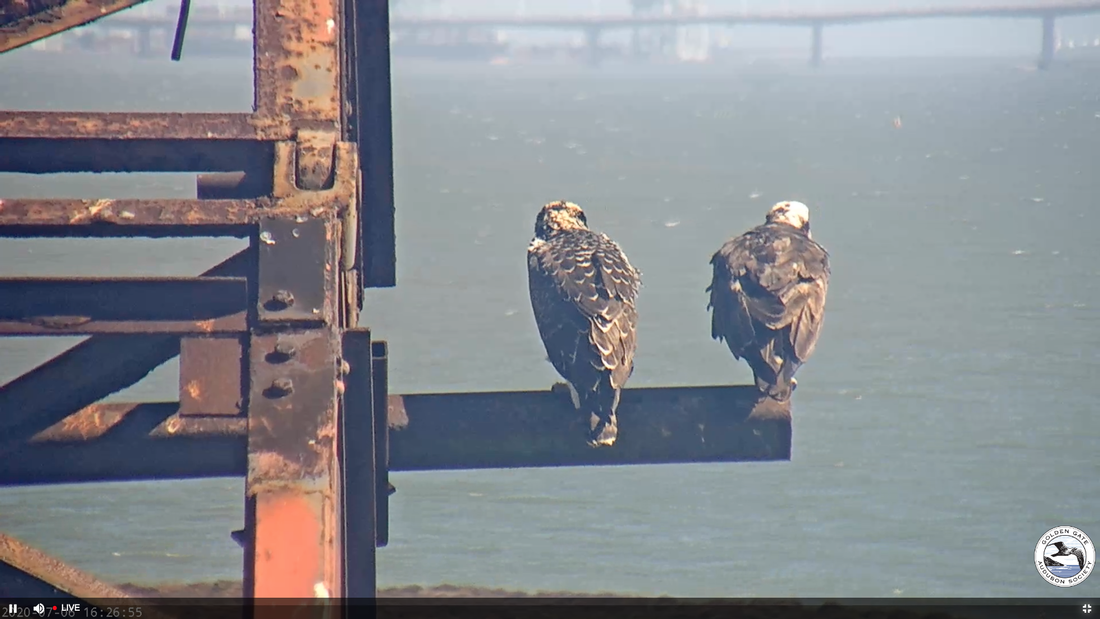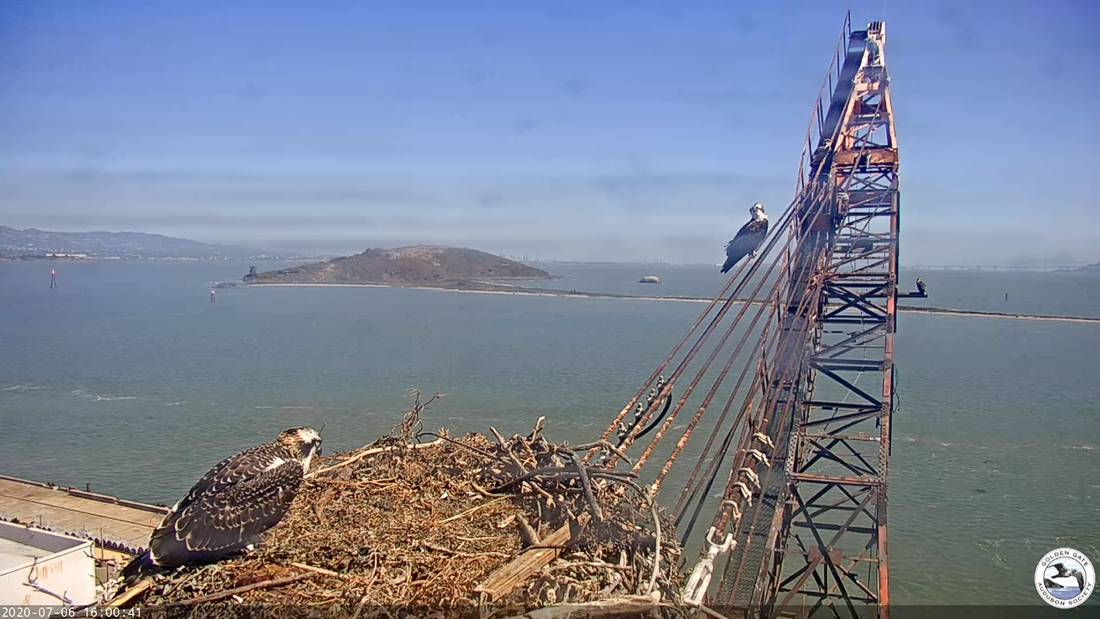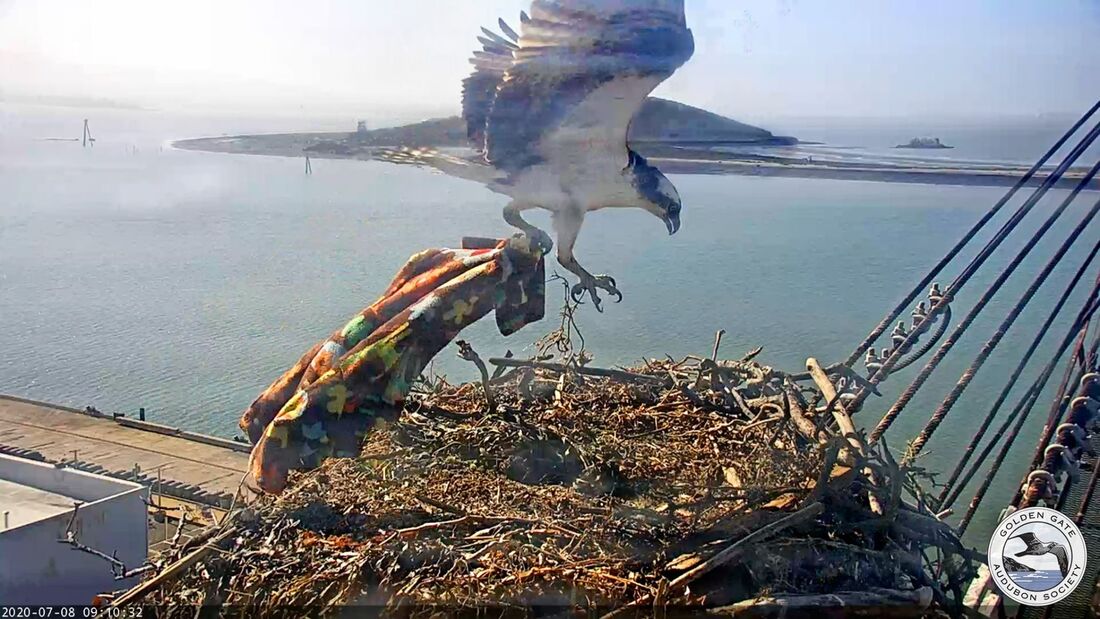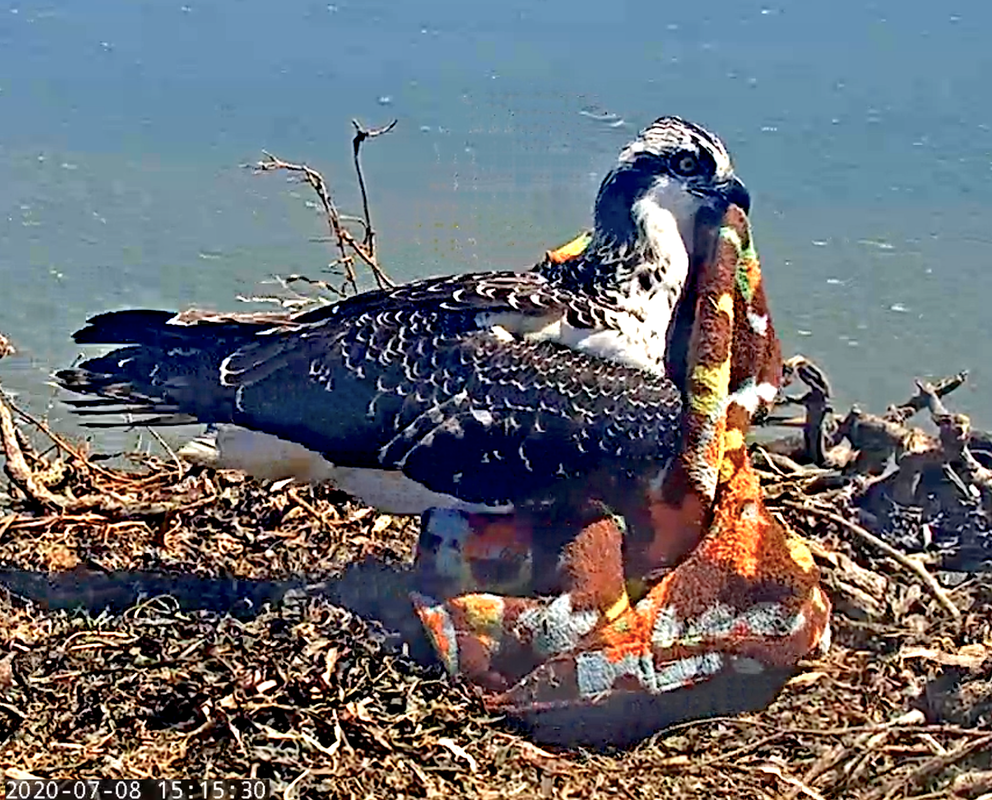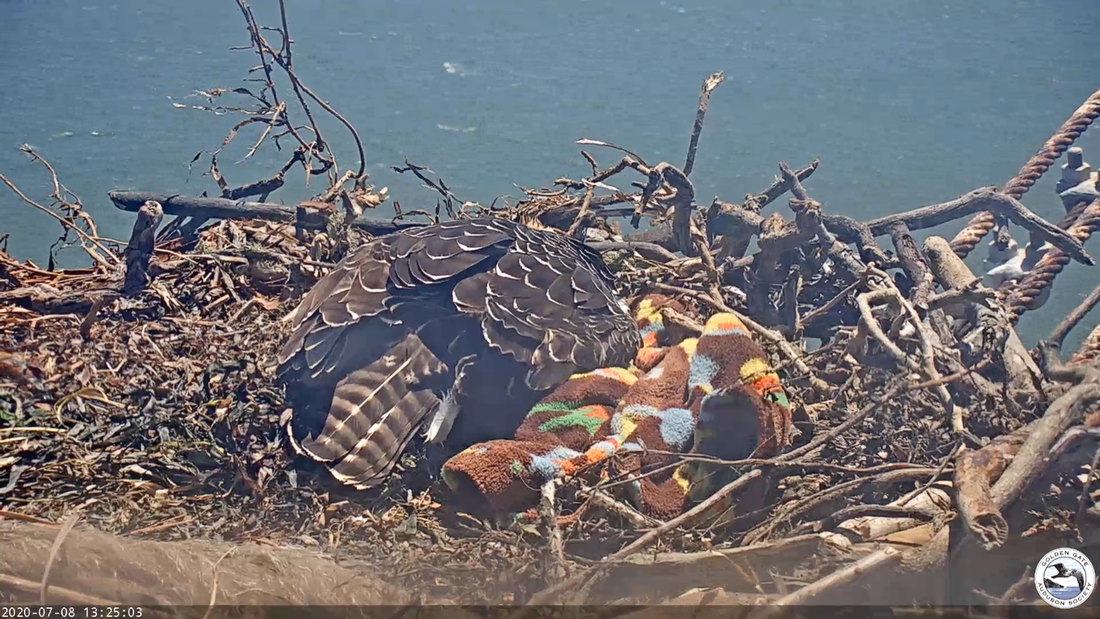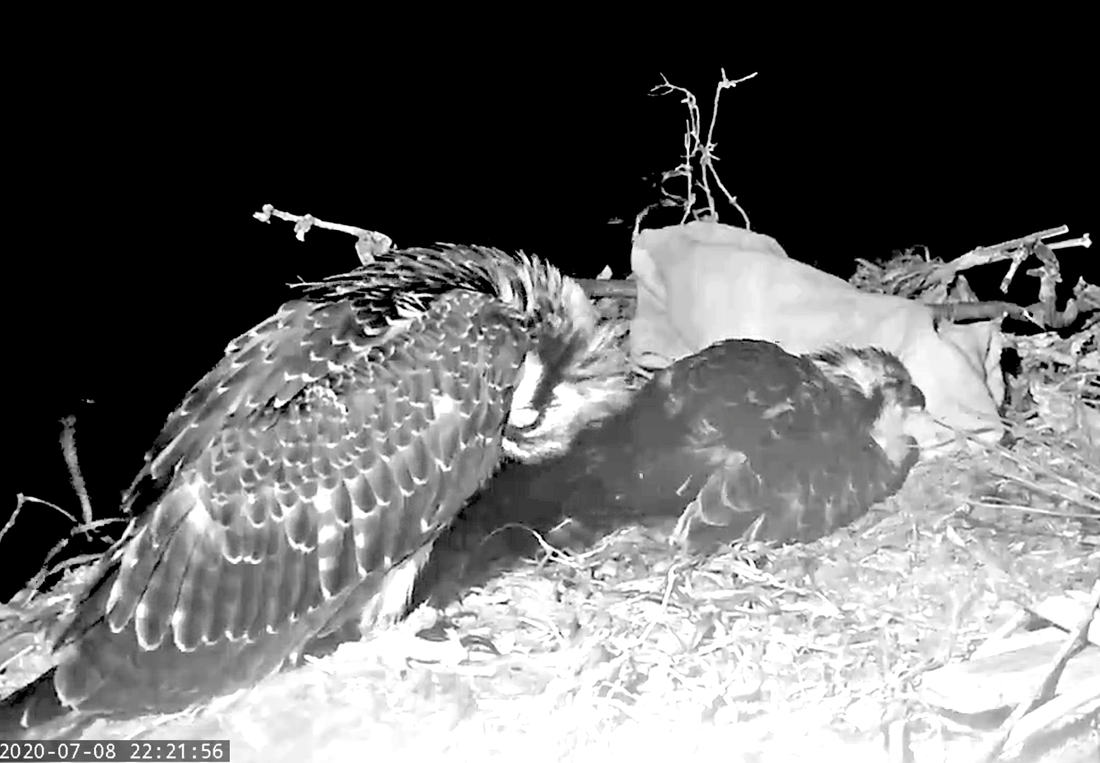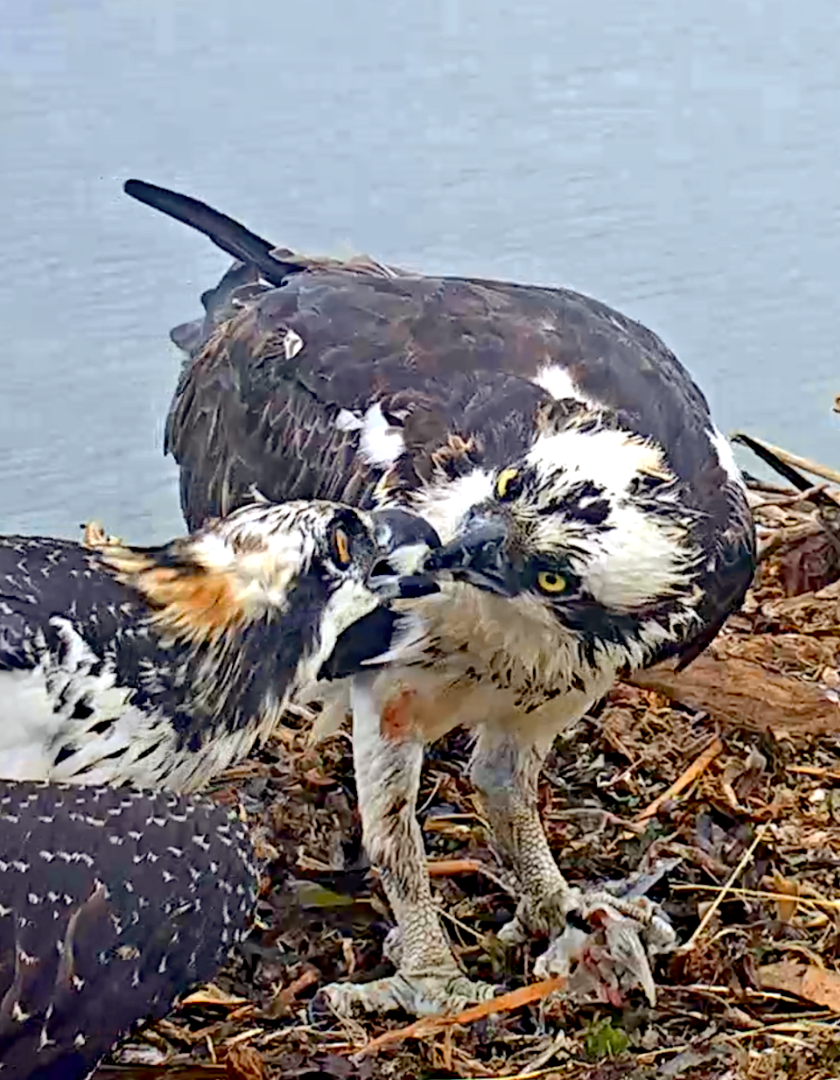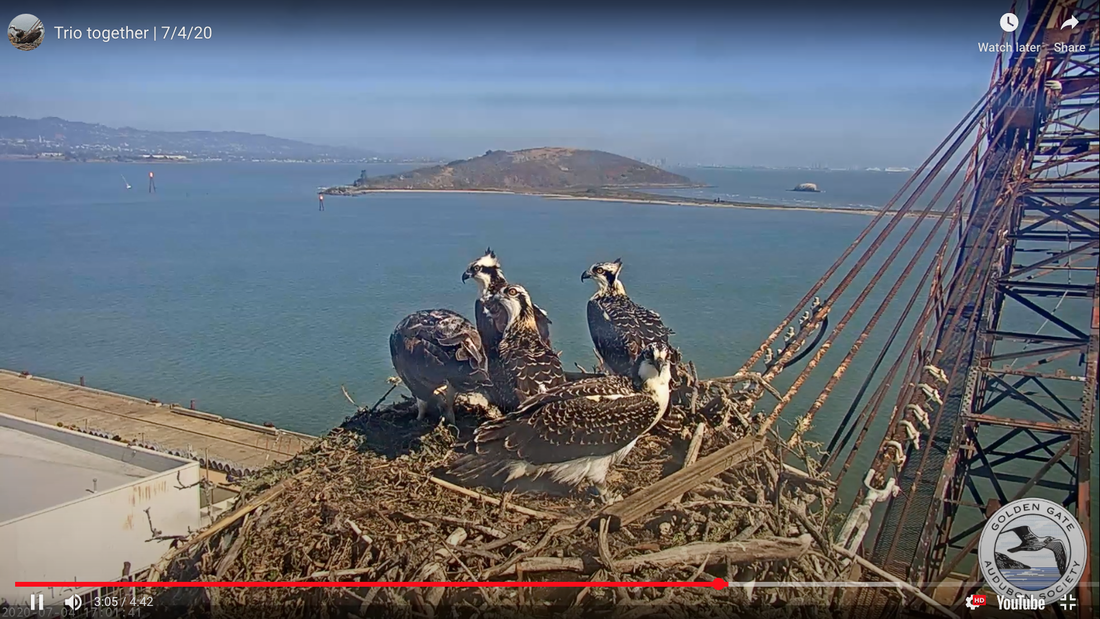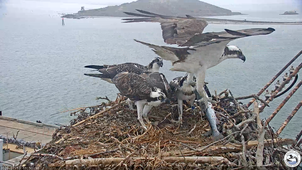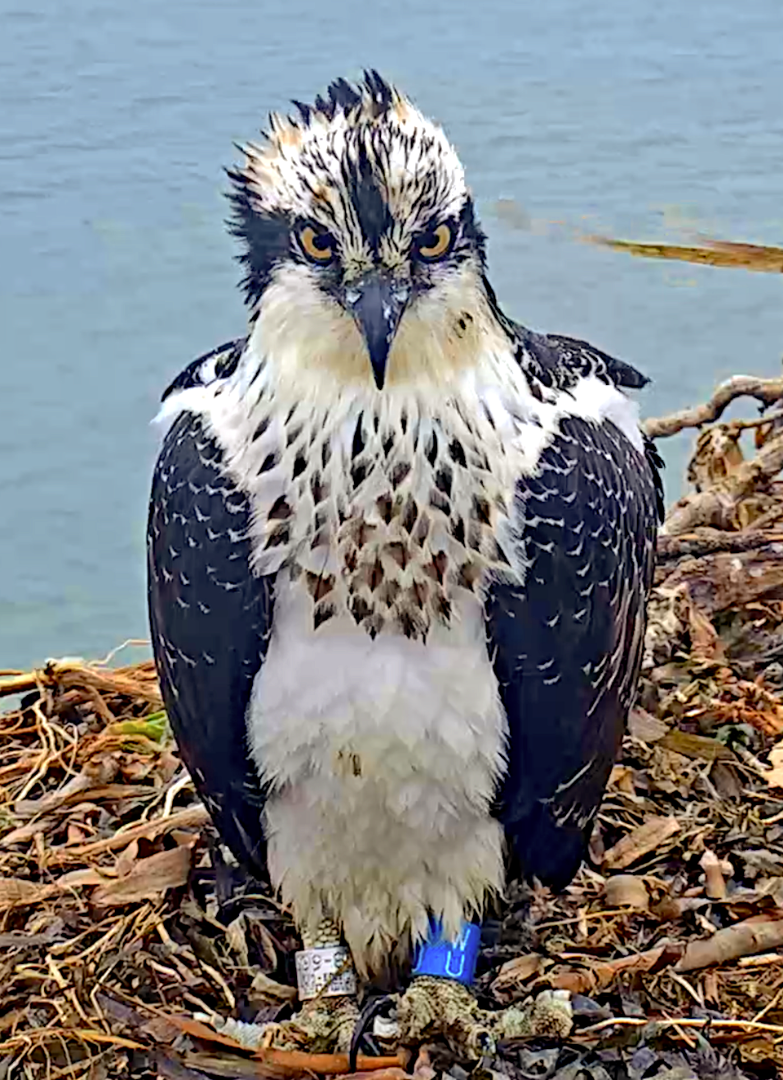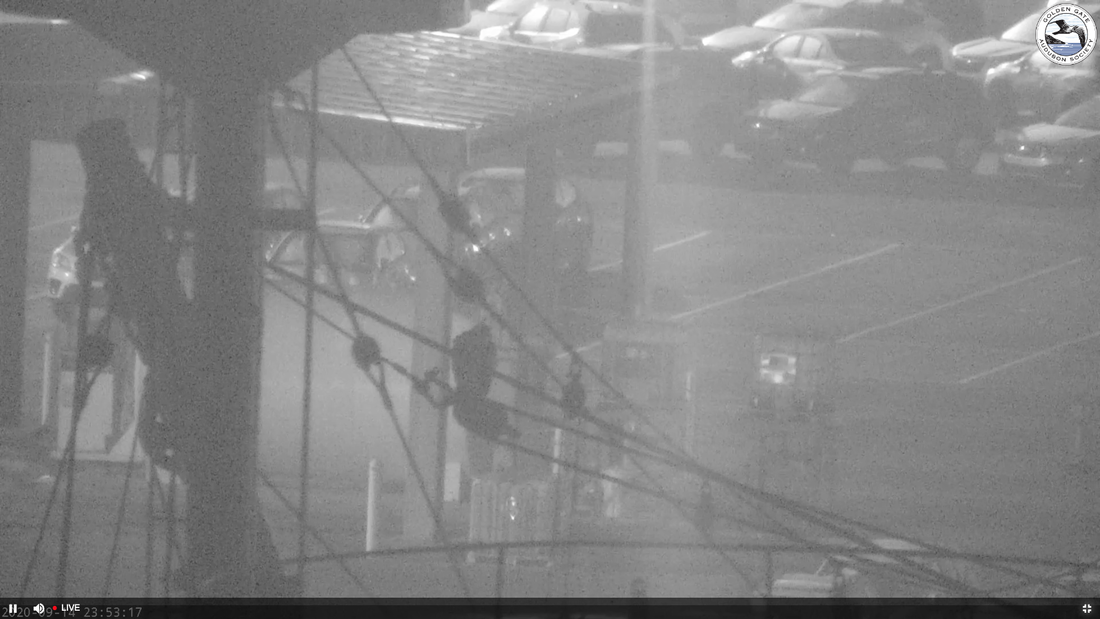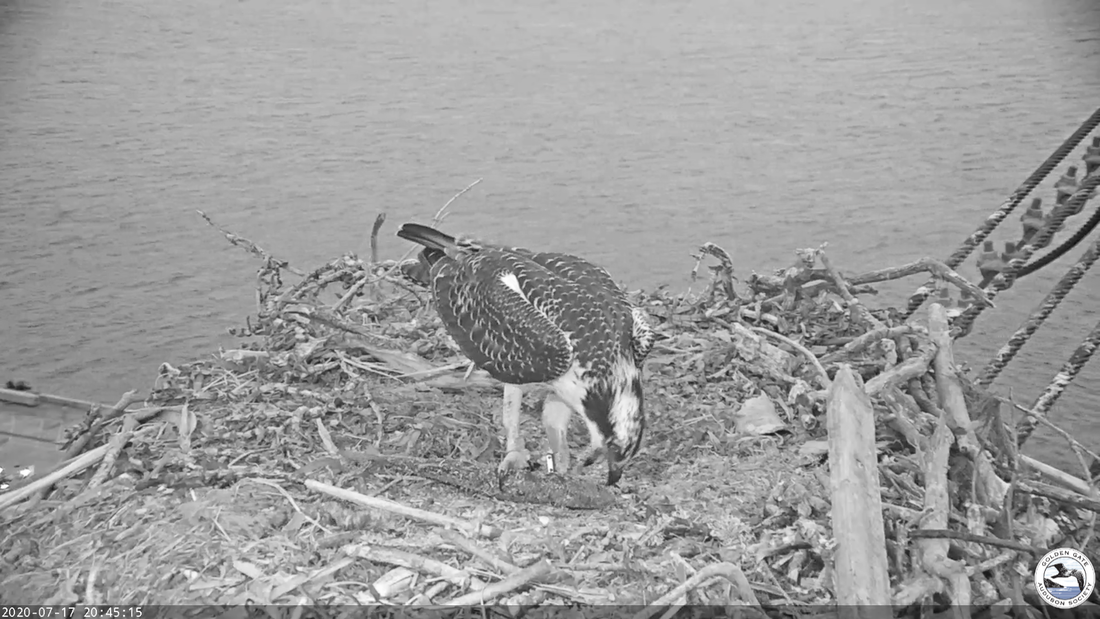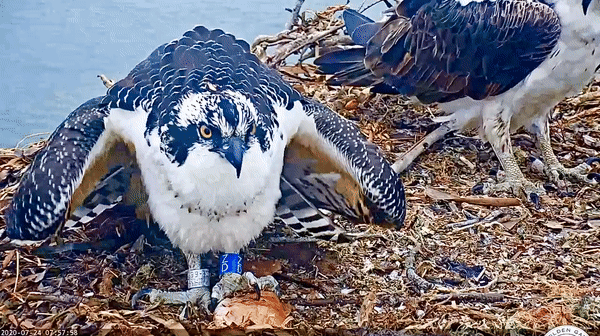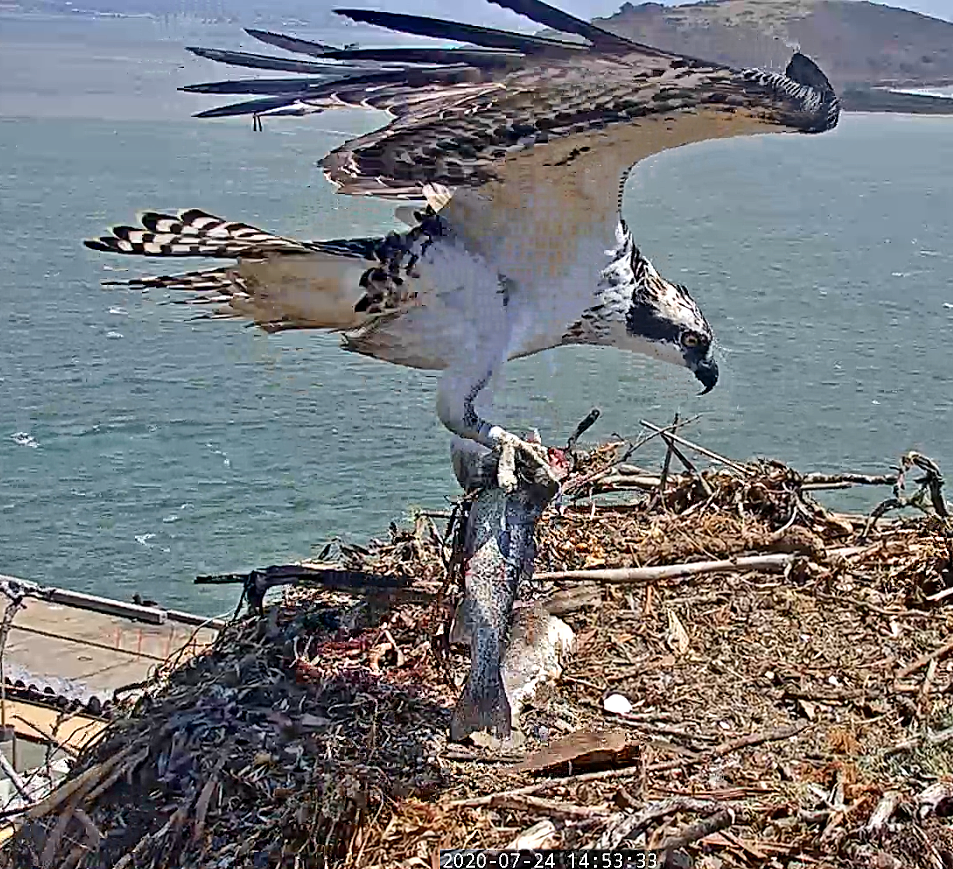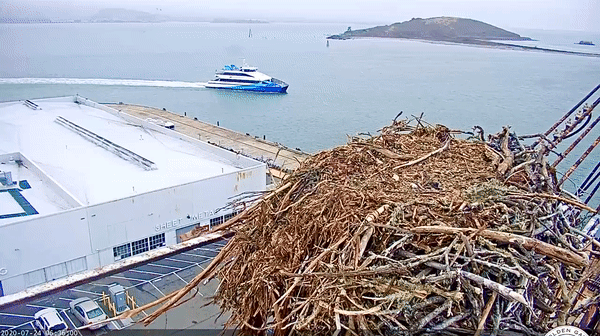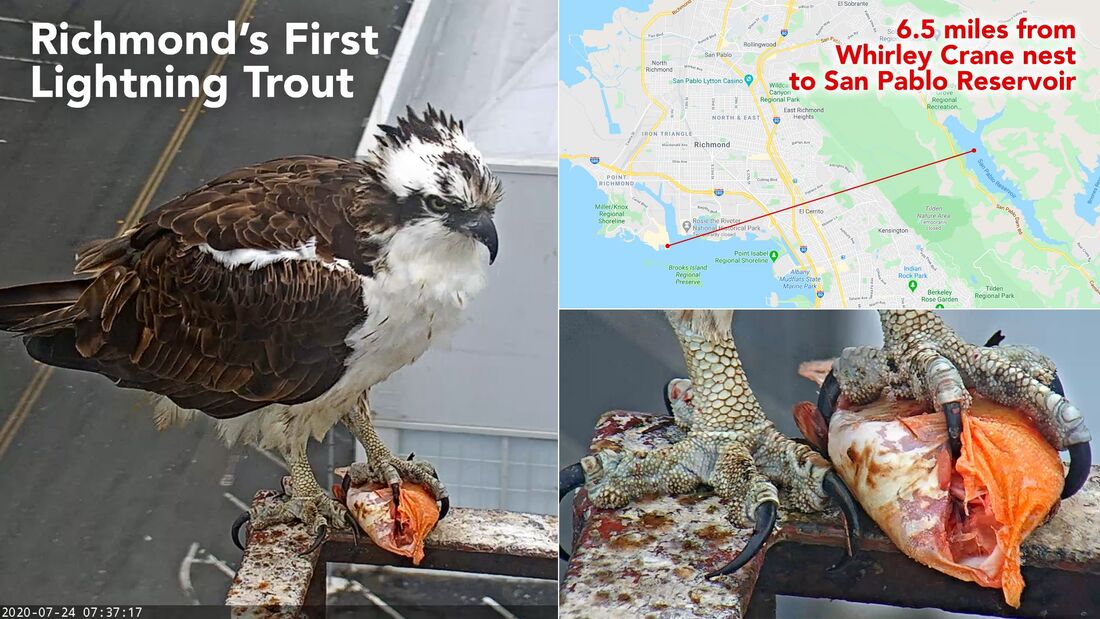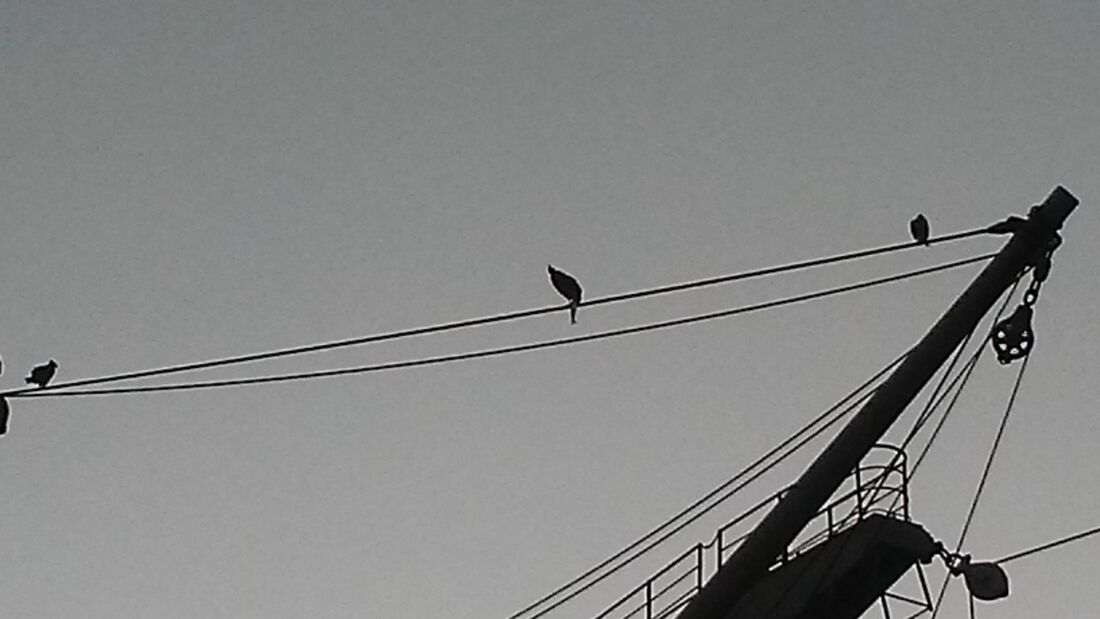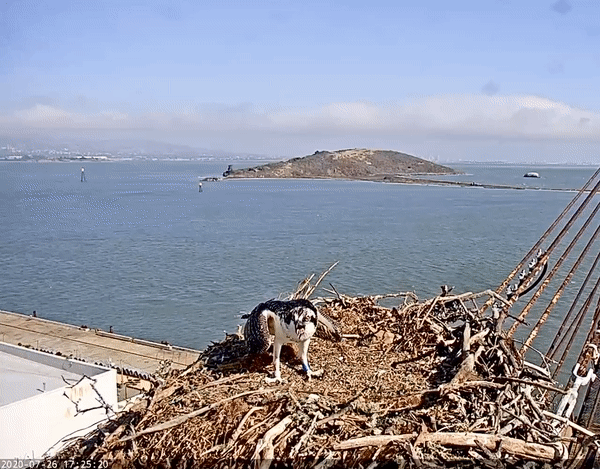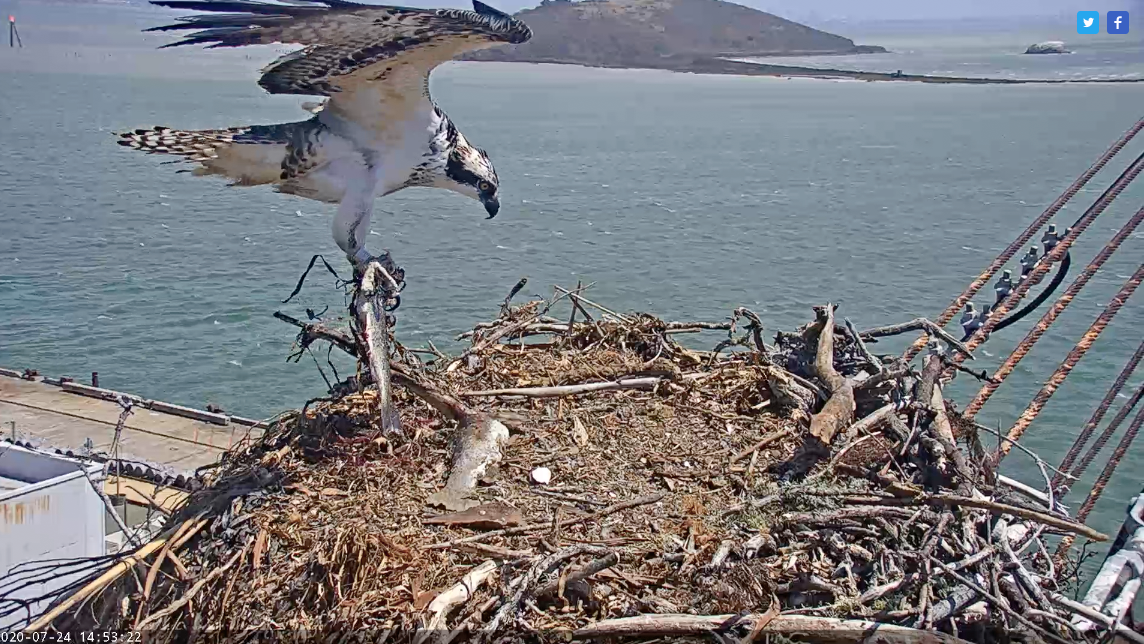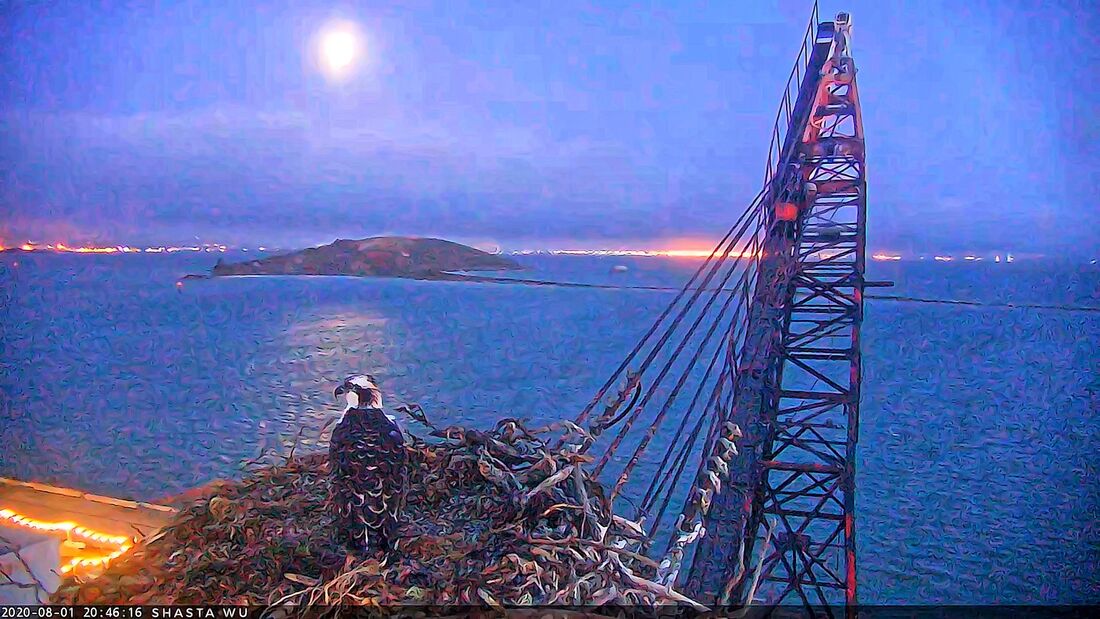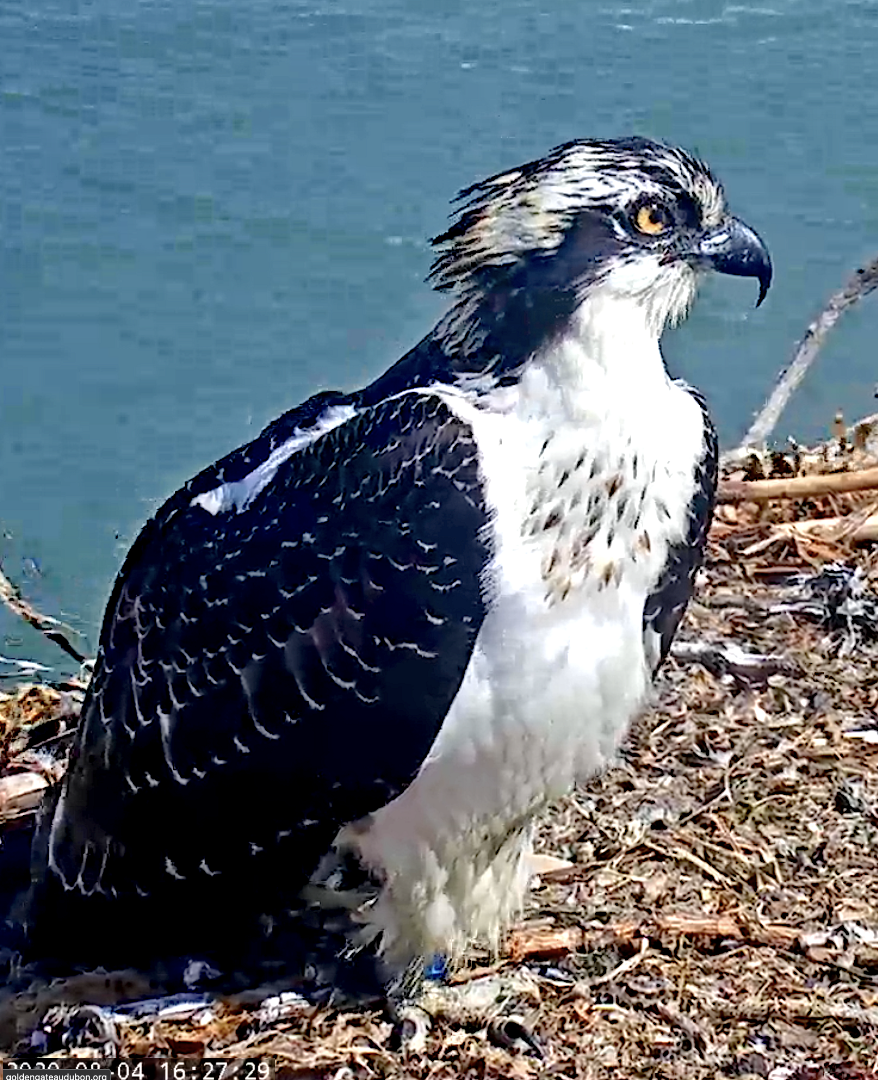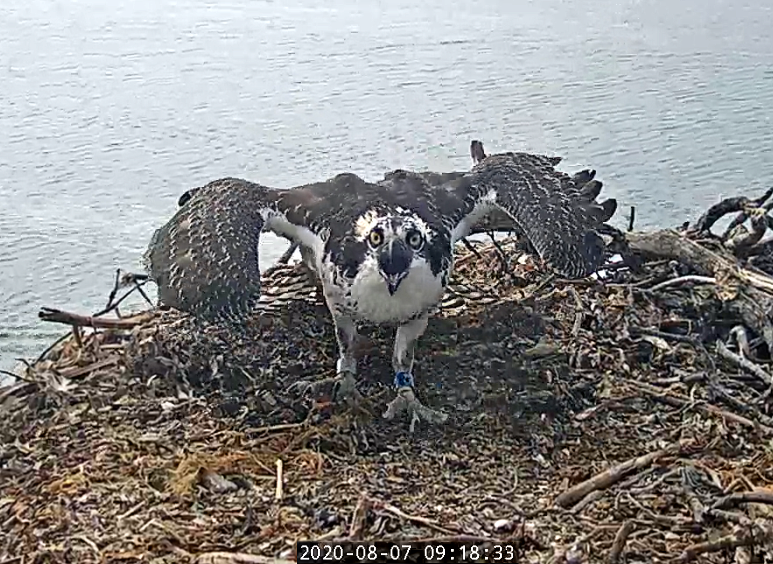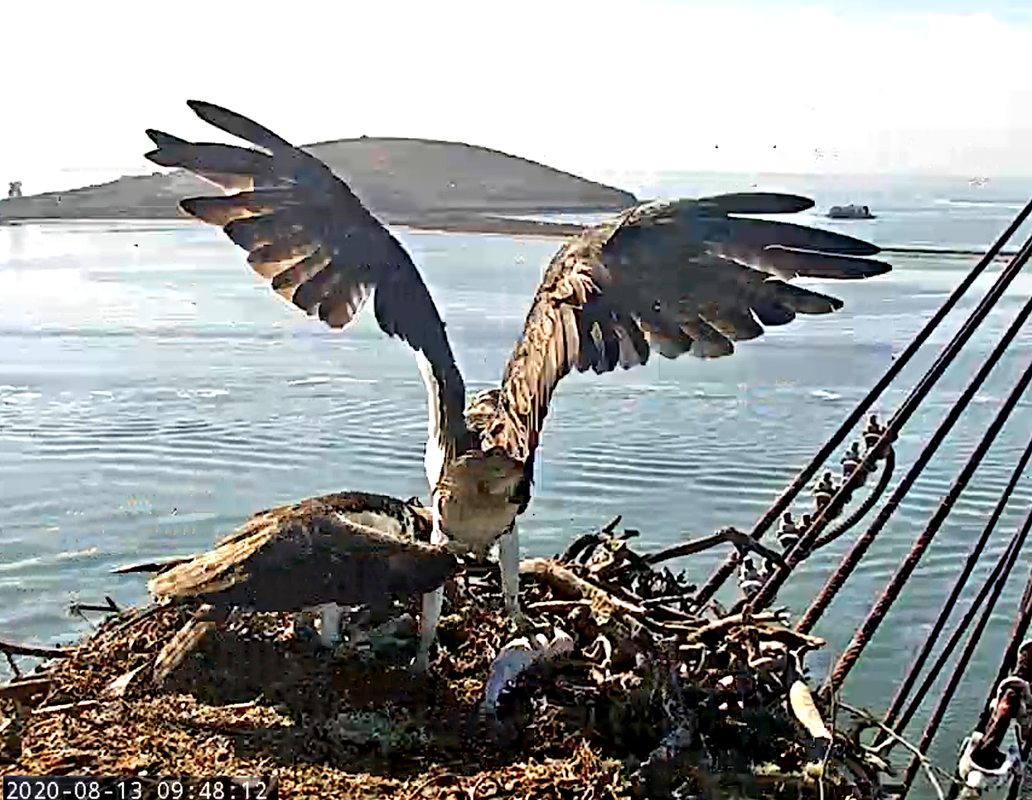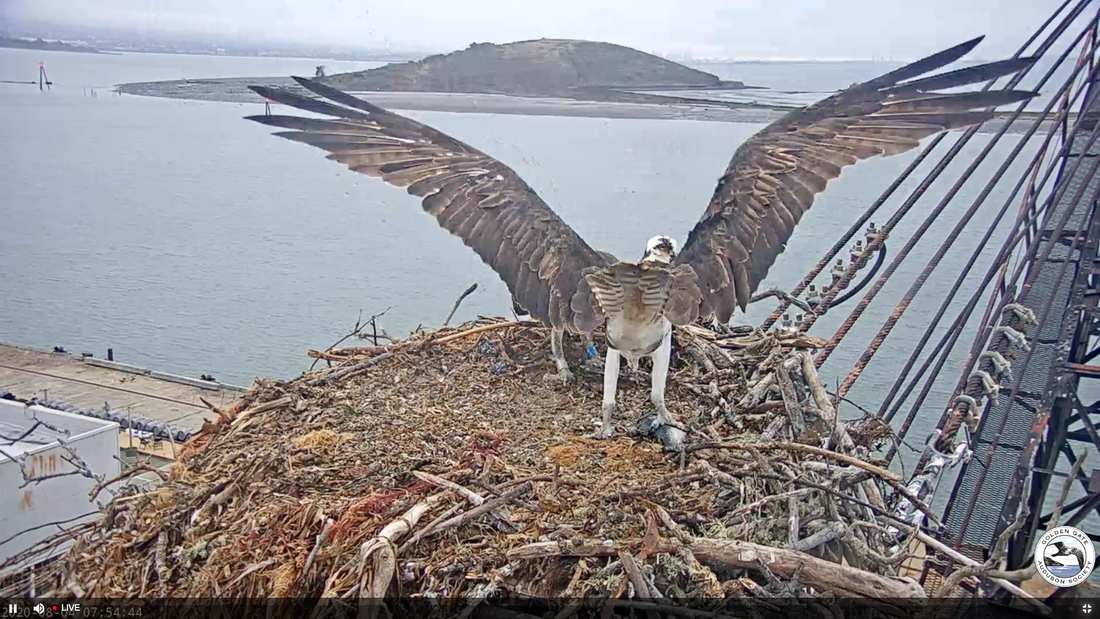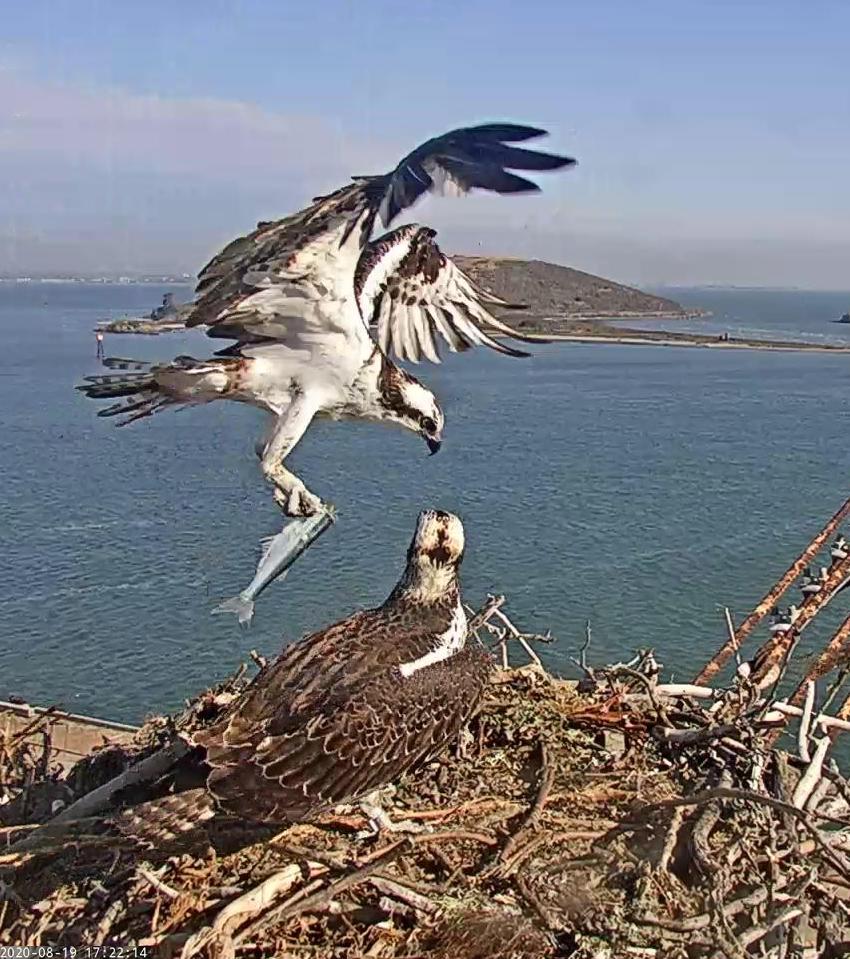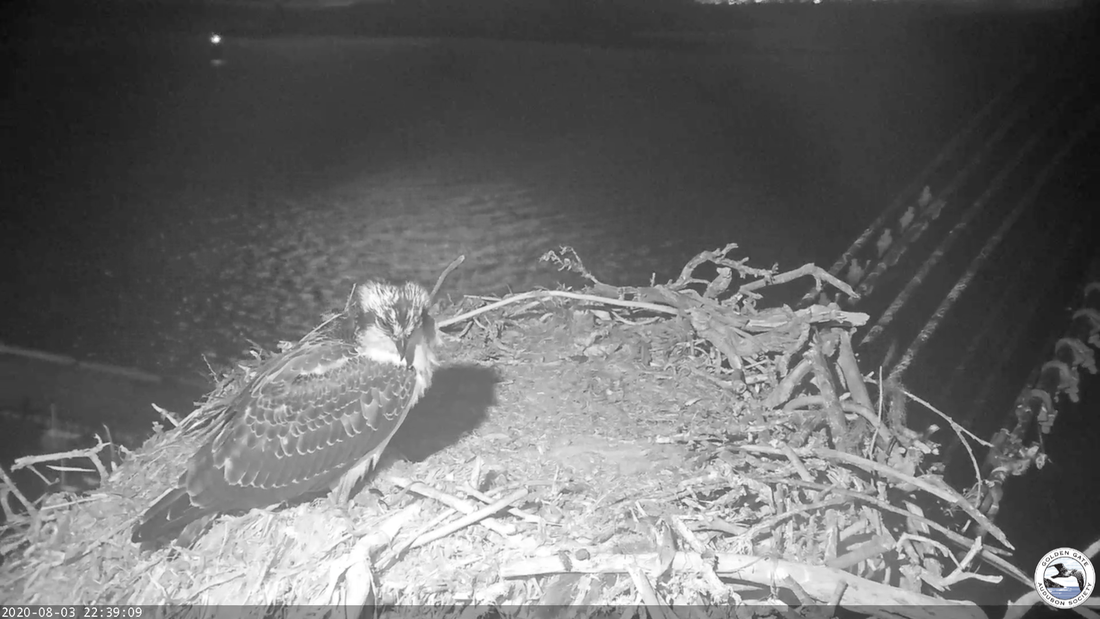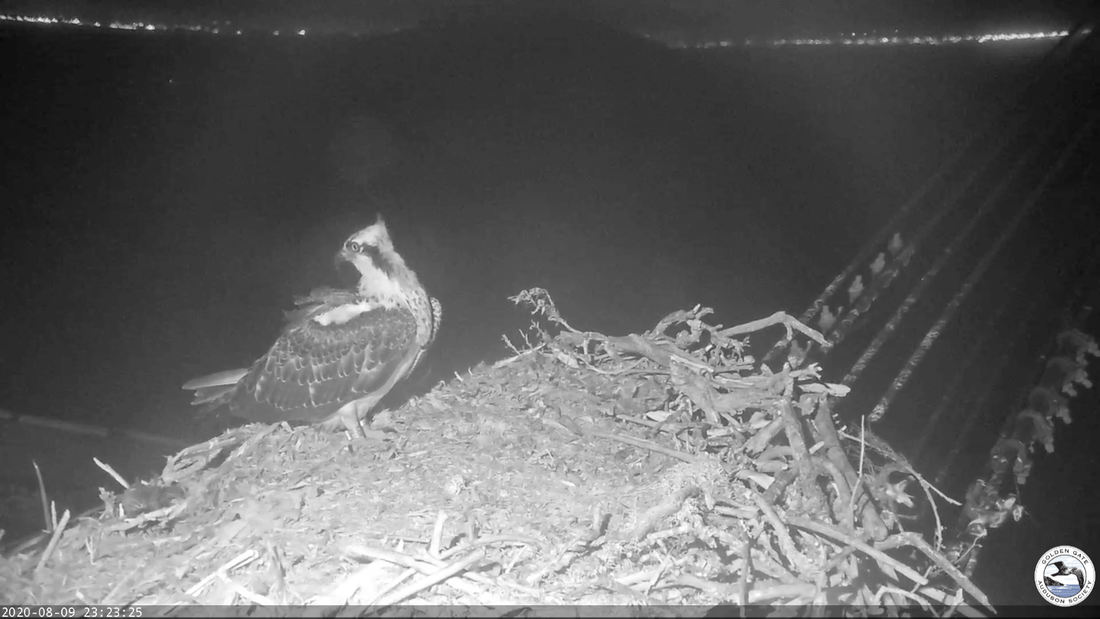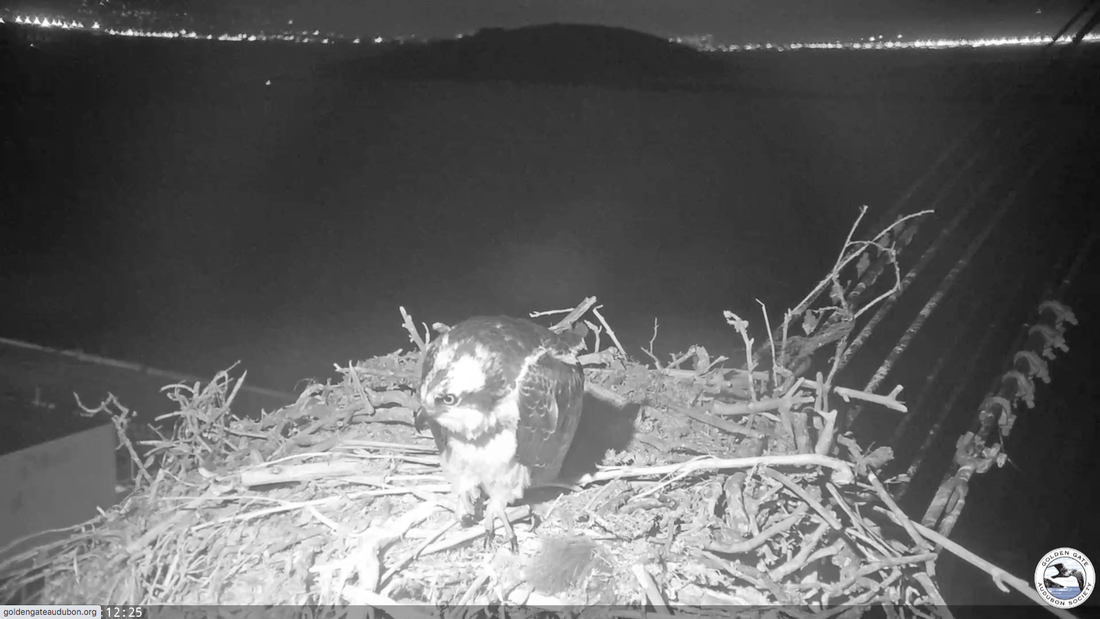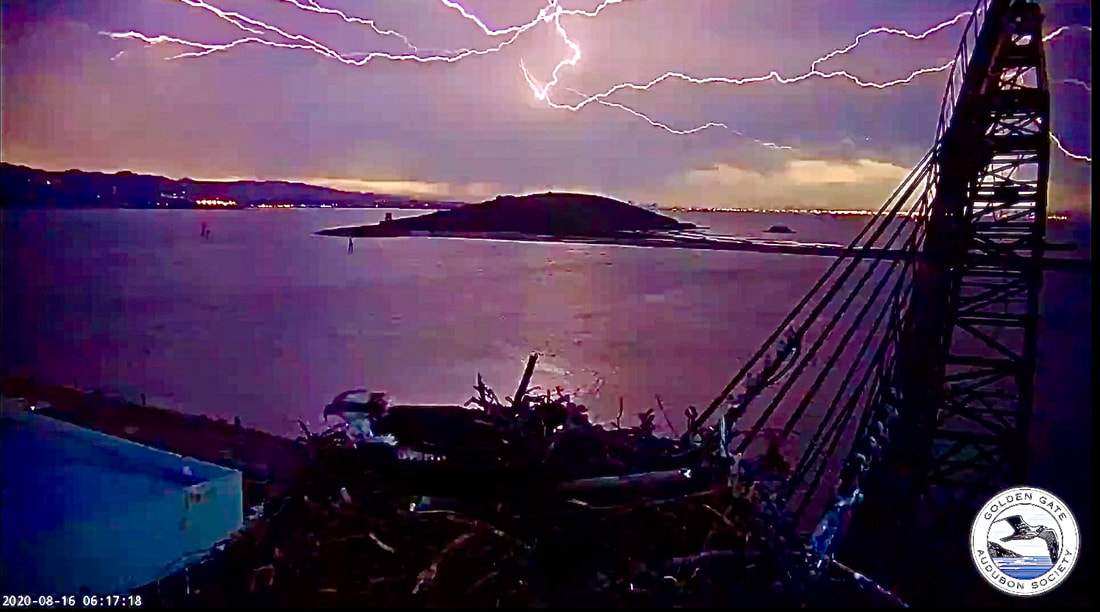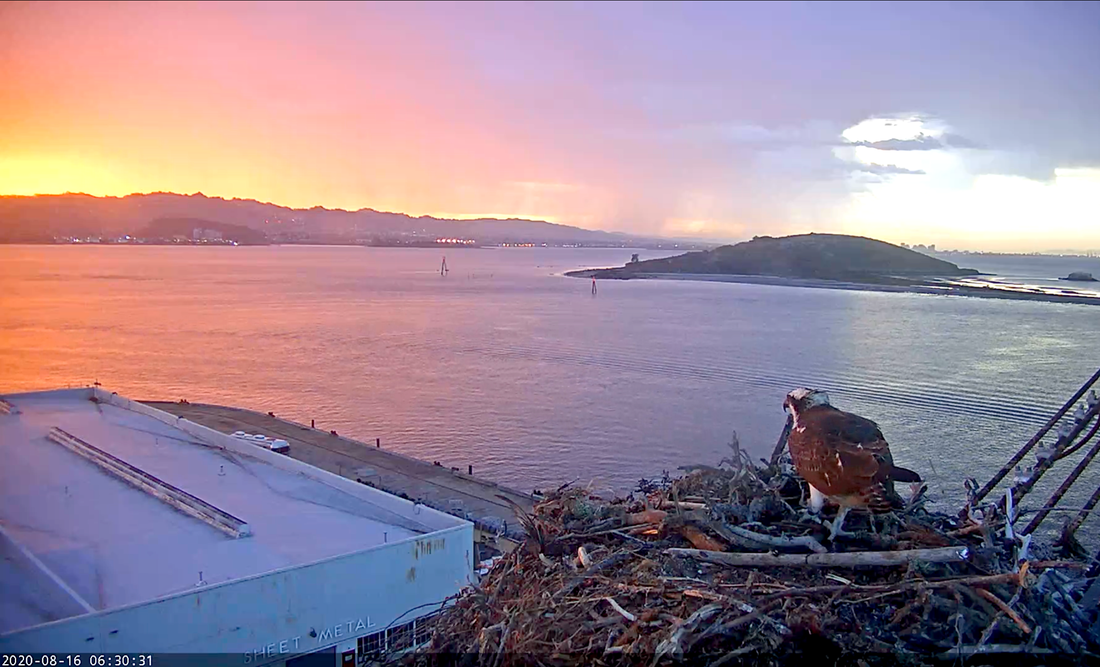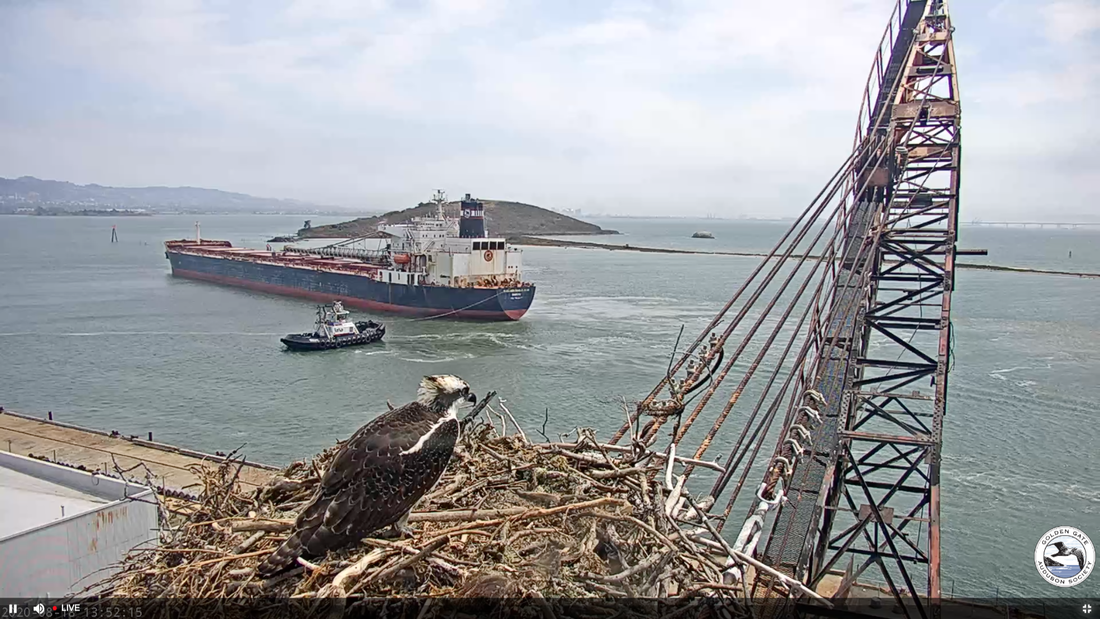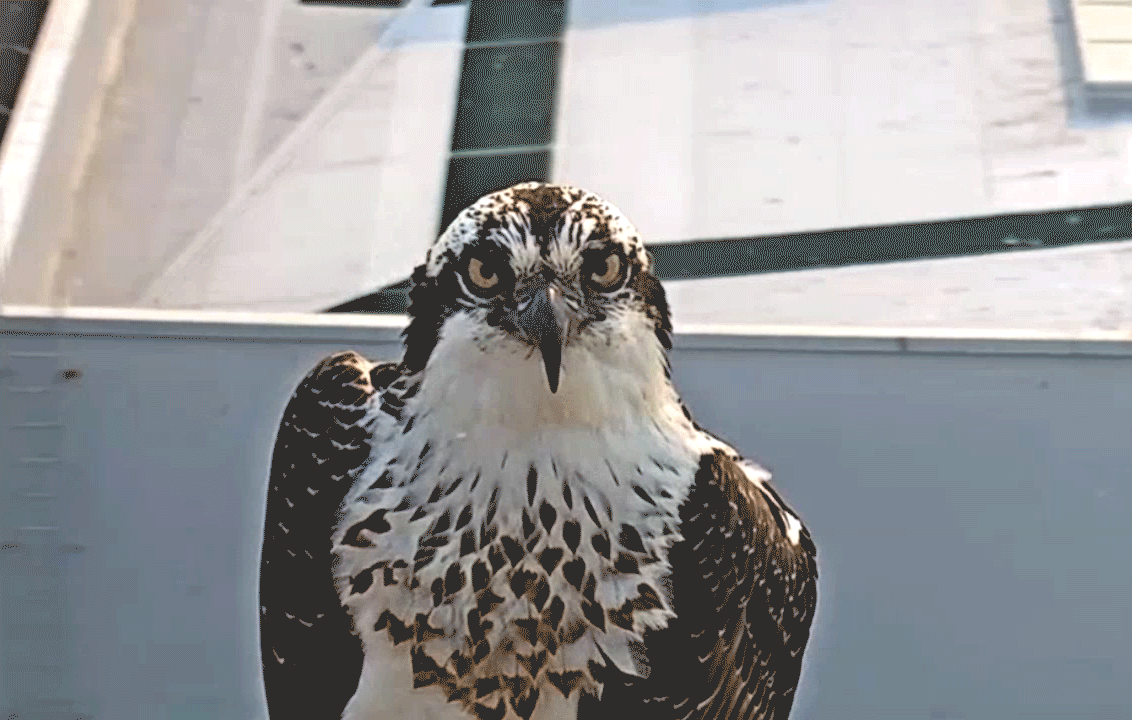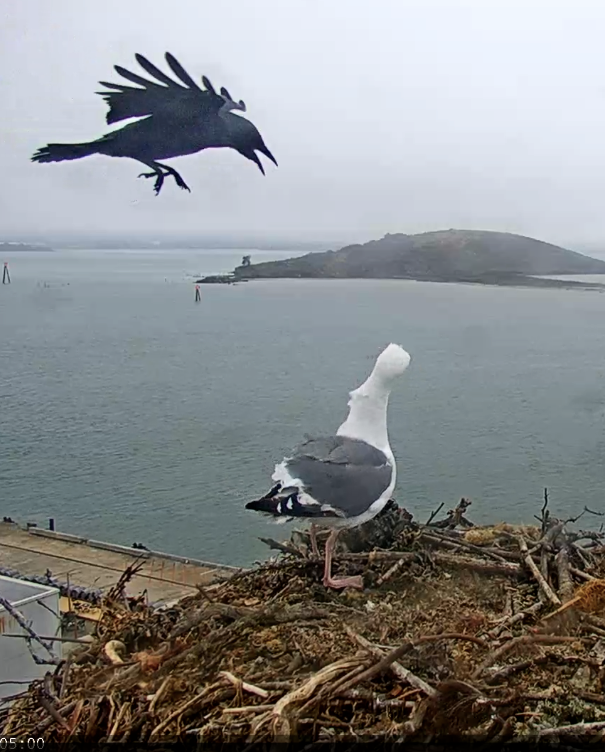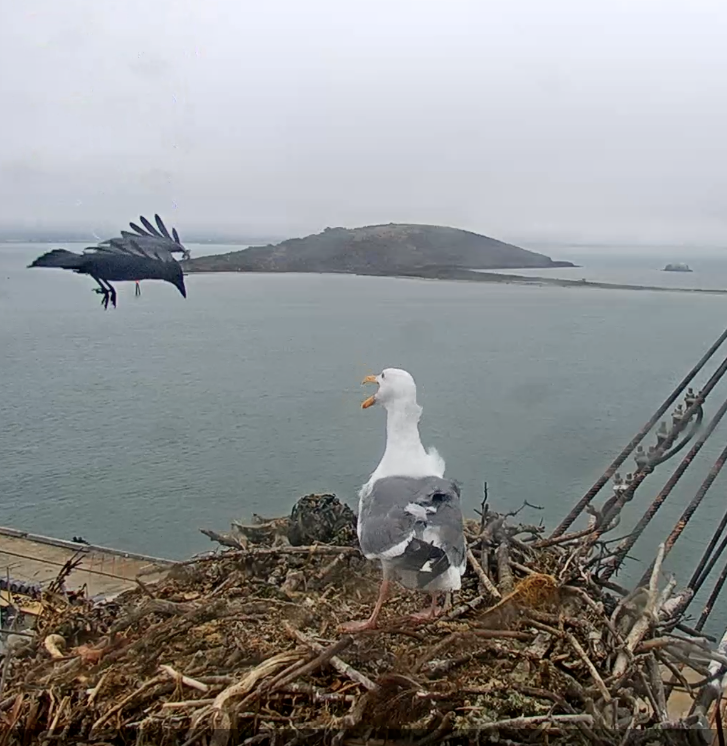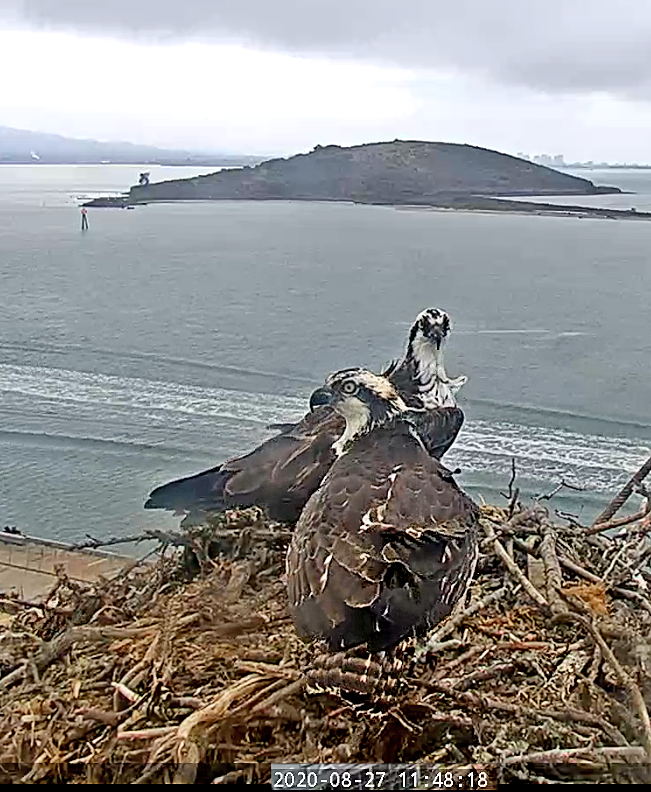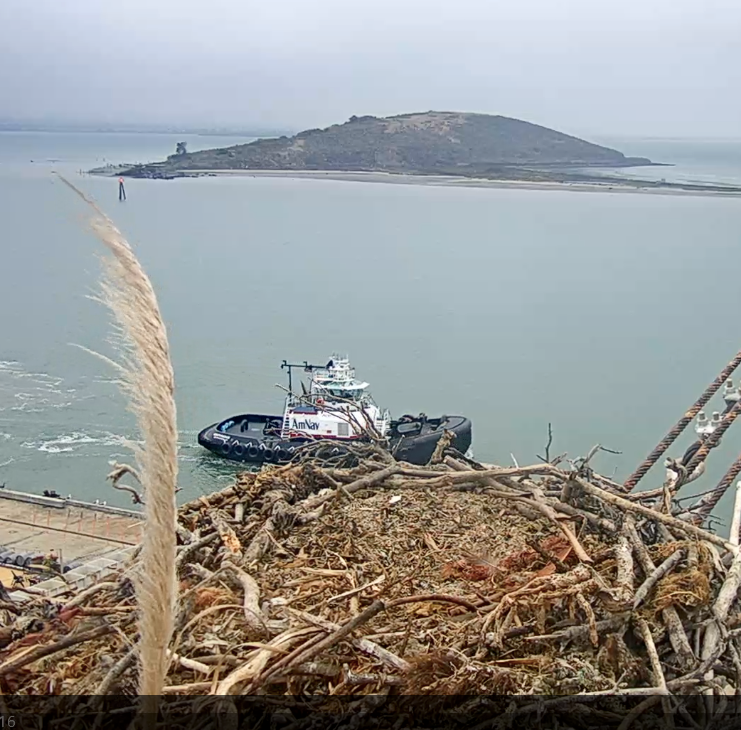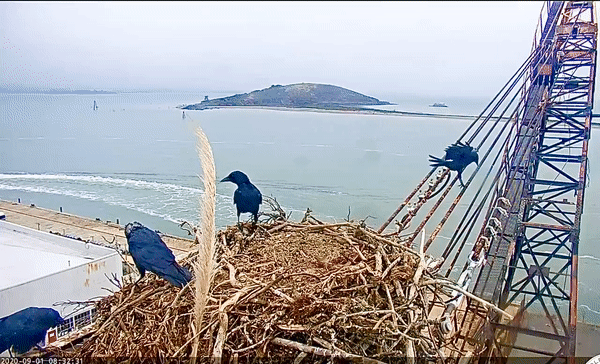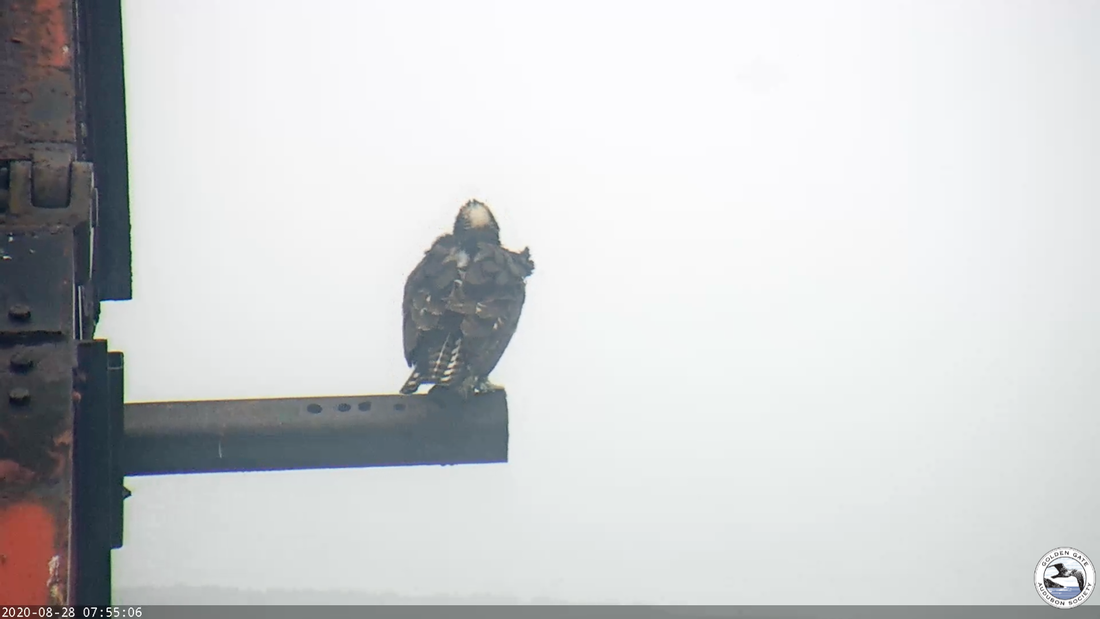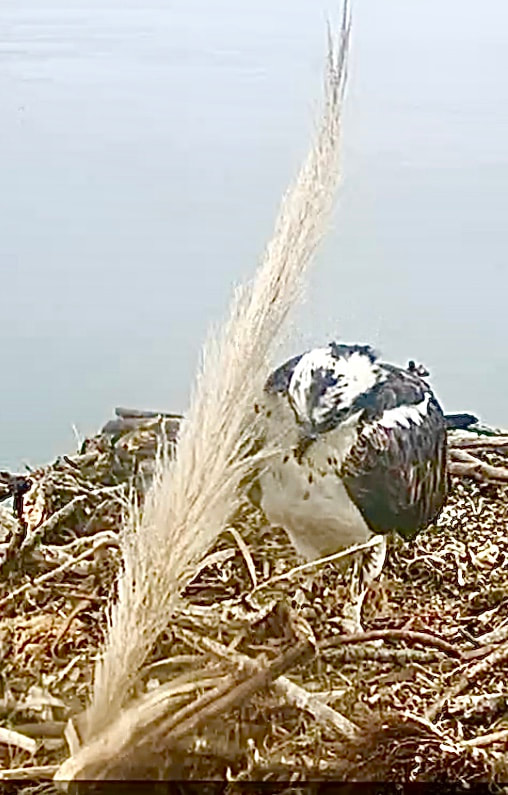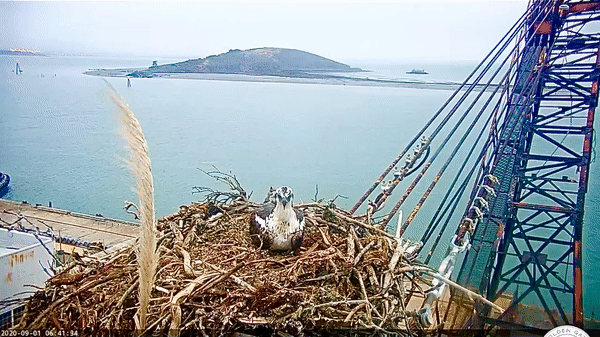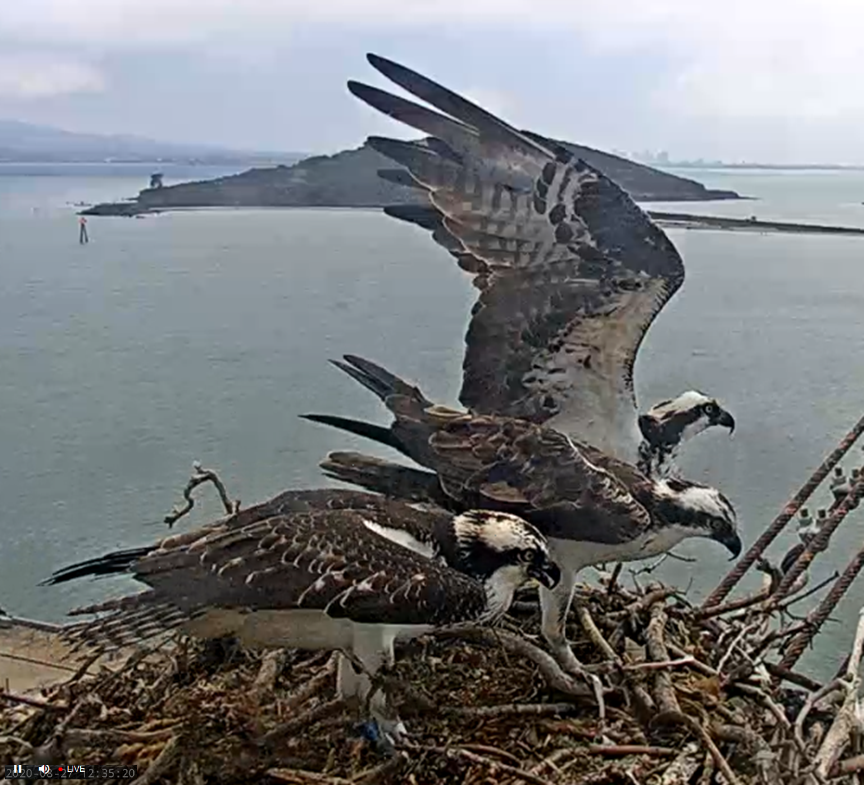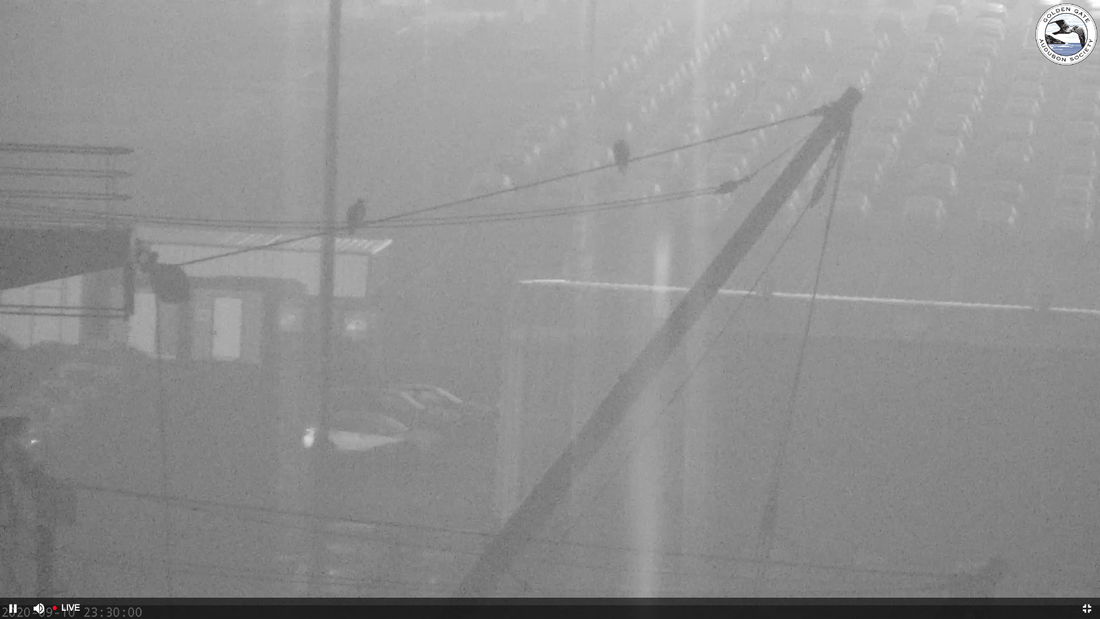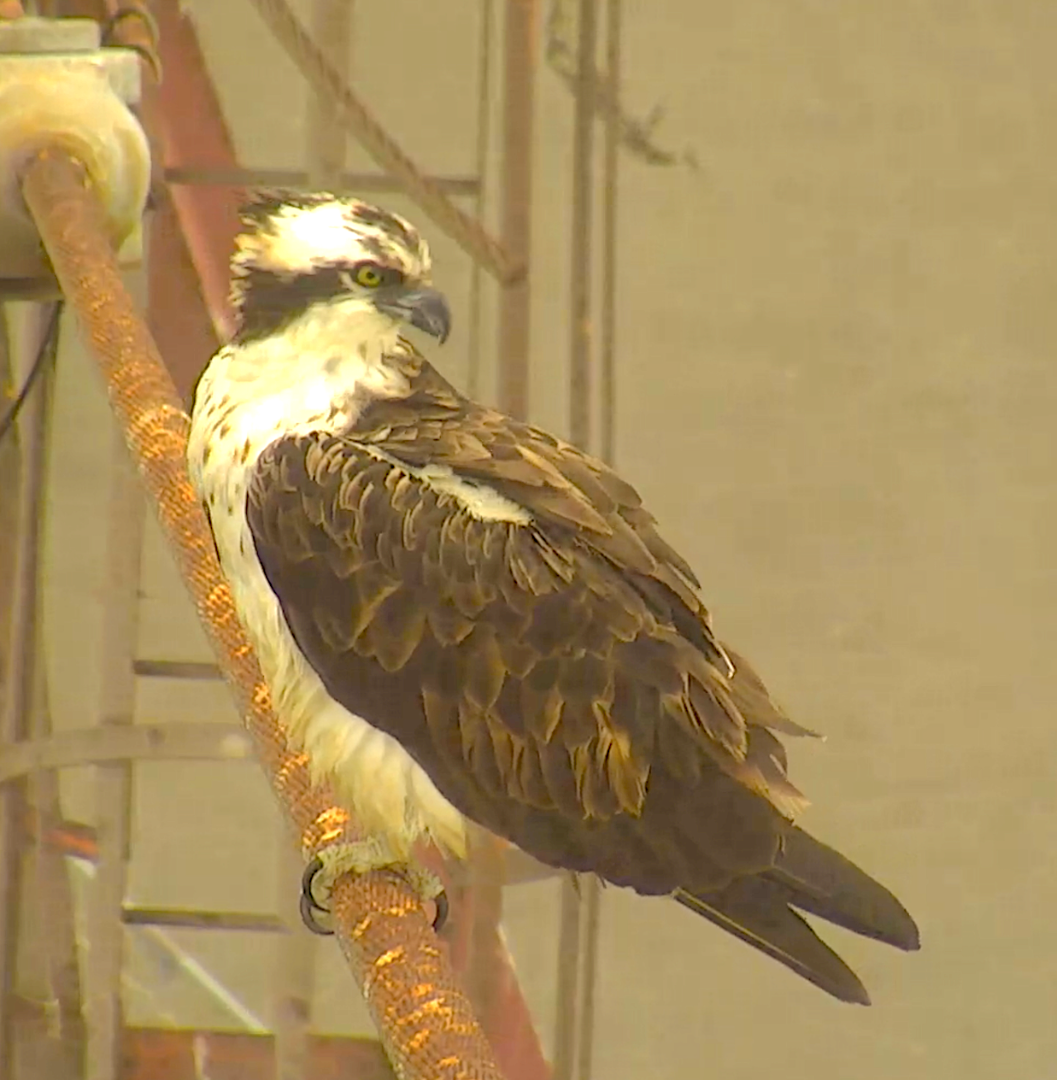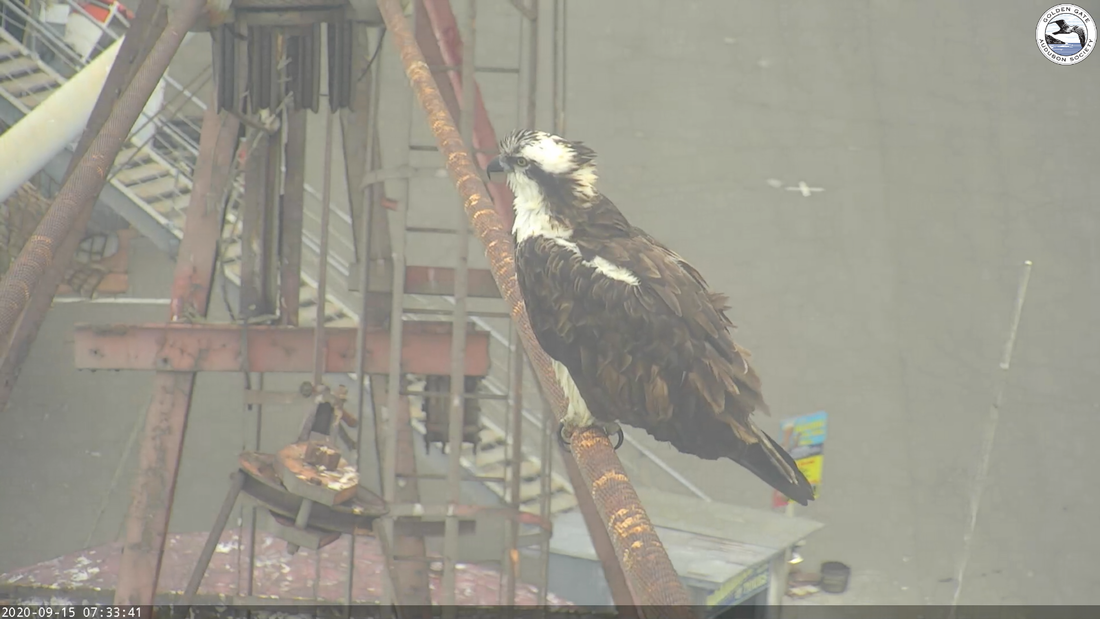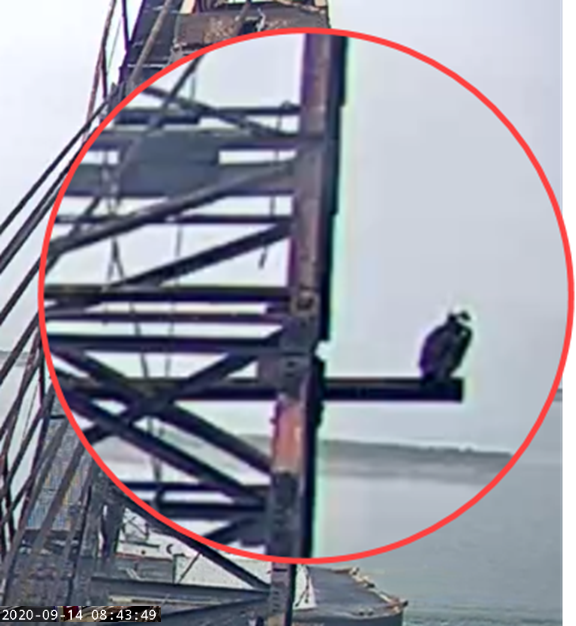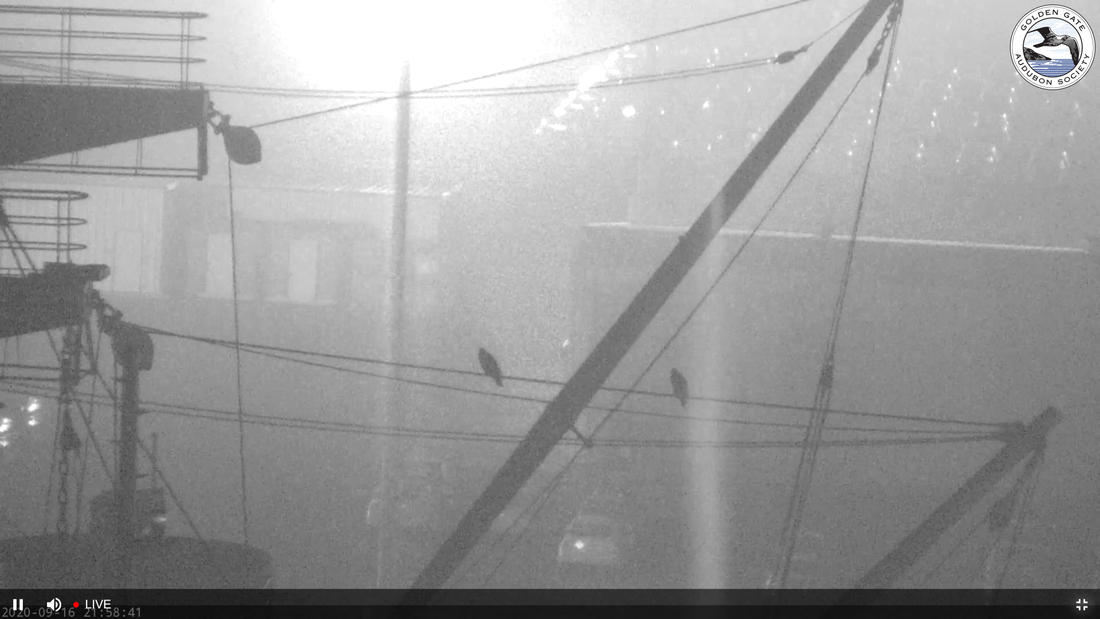First Week: Bobbleheads
| When there is no fish and the chicks are begging, Rosie will faux-feed them for a bit. But they prefer the real thing. She proffers a small bite and this prompts them to open their beak wide. If one chick doesn't, she moves to another. But she makes sure all three get their share. |
Second and Third Weeks :Dinosaur Stage
| Richie is kept busy delivering fish. His daily delivery increases up to 6 fish a day. Often a large fish will be delivered, eaten then taken away by Richie to eat by himself, then redelivered to the nest for another feeding (see the fish matrix for the story of a given fish). Rosie will also keep a piece of fish in the nest for a late night feeding. She always cleans up the fish bits after the chicks have eaten. |
Photos are from May 26 in the afternoon, taken directly from the camera video. For the video, go to sfbayospreys youtube channel.
Weeks 4-5: Awareness and Growing Bodies
The chicks are entering the teen-age stage. Their bodies are changing and they're not quite sure what to do with that. Uno and Dos are standing on their feet now and Tres is just beginning. Their feathers have mostly grown in and they've lost the downy look. And their wings are growing. They often stretch their wings, often laying the wing over their sibling. They also have begun wingercizing, flapping their long wings, and they stretch more. The new feathers seem to cause itching and/or they are learning to preen. They spend much time probing their wings with their beaks.
Rosie and Richie are preparing for this stage by bringing more sticks to build up the nest rails. Both adults can be rather clumsy with the sticks, landing them on the chicks, who don't seem to mind too much.
This year's trio has been quite cooperative, taking turns to eat. Sometimes one will eat its fill then move aside for the other to edge in. Or they line up, each asking for a bite but not fighting over it. They are taking larger bites and can even swallow the guts now. They also swallow the fish tail. Richie is kept rather busy, sometimes bringing in seven fish (see fish matrix below the cam view for exact information).
For more videos see youtube channel sfbayospreys
See that site for almost daily short video summaries.
The table below shows their weights and band initials. Their ages are 37, 36 and 34 days.
First born is Lassen band ZD male
Second born is Shasta band WU female
Third born is Tam band XV male
Weeks 7-8 Learning to Fly
Fledging
| Post from Wildcare: It is with heavy hearts that we share the news with the community that Tam is no longer with us. After another successful splint change on Thursday, we had a new update written and ready to post today. However, over the weekend, Tam’s condition took a serious turn for the worse. Even since he was first weighed and banded in the nest, Tam had been underweight and not as strong as his older siblings. During his brief time in our hospital it was an ongoing challenge to get him to eat enough to keep on weight, much less gain it. Earlier in the week, for reasons unknown, Tam began regurgitating all of the fish he would eat. Diagnostic tests were inconclusive as to a cause. We placed Tam on 4-times-a-day tube feedings and subcutaneous fluids so that we would not lose any more ground, but he still became weaker. By late evening, Saturday, he was no longer able to stand. After numerous consultations with colleagues at wildlife hospitals that treat a high volume of Osprey, and with recognition that Tam’s condition was rapidly deteriorating, the decision was made to end Tam’s suffering and humanely euthanize him. Of course everyone who cares about Tam will want to know the reasoning behind this incredibly difficult decision. We want to share the primary considerations through which our team worked, in consultation with the other Osprey experts. First is an understanding of the medical concerns Tam faced even before his admission to the wildlife hospital. Even recognizing that Tam was the smallest of the three Osprey chicks in this year’s Whirly Crane nest, the fact that he spent around 18 hours on the ground after his test flight was not normal, nor was it normal that he was able to be easily picked up by his rescuer. A truly healthy young Osprey should have been able to hop-fly his way back to his nest after his aborted test flight. Tam’s weight and body condition on intake was below normal and his mentation was not 100%. Despite that, and after we saw improvement to the symptoms of possible head trauma with which he was admitted, our plan was to get Tam back into his nest with his family as soon as possible to let his parents continuing doing their best for him. Those plans were delayed for a day due to the neighboring crane construction and, during that time, Tam fractured his leg. We still do not know why the fracture happened, but its occurrence points to severe underlying metabolic issues within Tam’s body. The fact that he was never able to gain and keep on weight as a sedentary, growing bird being hand-fed in care is further evidence that something was not right with him. We have sent Tam’s body to the state lab for a necropsy in hopes that we will be able to glean answers as to what underlying conditions led to his failure to thrive and recover. We hope that the necropsy results will also provide knowledge that will help us with future Osprey patients. If we receive any helpful findings we will share them with the group. |
